- Old World Gods

Norse Vegvisir: Unveiling the Ancient Symbol of Viking Wisdom
Norse Vegvisir, also known as the Viking Compass, is an ancient symbol of Norse mythology used to guide people in difficult weather conditions. Its history and origins can be traced back to the 1860s in the Huld Manuscript.
This symbol, consisting of eight runic branches, was believed to help individuals find their way back home safely. Today, Vegvisir continues to hold significance, being popularly used in tattoos and jewelry, symbolizing protection and safe travels.
Explore the meaning, power, and misconceptions surrounding this mystical Norse symbol.
Content of this Article
The History and Origins of Norse Vegvisir
The history and origins of Norse Vegvisir delve into the ancient symbol’s significance and its connection to Norse mythology. This section explores the origins of Vegvisir, its role as an ancient symbol, and the first known appearance of Vegvisir in the Huld Manuscript of 1860.
The Ancient Symbol of Vegvisir
The Norse Vegvisir holds a deep-rooted history as an ancient symbol of guidance. Comprising eight runic branches extending from a central point, this symbol was not a literal compass but served to prevent travelers from losing their way.
The importance of Vegvisir lied in its ability to help individuals navigate safely and find their way back home even in adverse conditions.
Mythology and Norse Connection
The use of Vegvisir in Norse mythology is closely intertwined with the belief in the magical and mystical powers associated with it. Ancient Norse culture embraced mysticism and supernatural elements, often seeking divine intervention for safe travels and protection.
Vegvisir’s connection to Norse mythology reflects the belief in its ability to harness spiritual forces and ensure a secure journey.
The First Appearance in the Huld Manuscript of 1860
The Huld Manuscript, written in 1860, provides the first recorded appearance of Vegvisir. While Vegvisir is commonly associated with Vikings, its true origin lies in this manuscript rather than in authentic Viking symbols.
Its inclusion in the Huld Manuscript played a significant role in popularizing Vegvisir, leading to its widespread use in daily life, particularly in German-speaking countries where ‘wegweiser’ means ‘sign or indicator post’ in German.
Understanding the Meaning and Symbolism of Vegvisir
Download for FREE here our best selection of Images of the Mythology Gods and Goddesses!
The Vegvisir holds deep meaning and symbolism within Norse culture. Its interpretation as a Viking Compass is rooted in the belief that it guided its bearer safely through treacherous journeys. The protective and guiding essence of Vegvisir is seen as a powerful symbol, offering assistance and direction.
The Interpretation of Vegvisir as a Viking Compass
Seen as a Viking Compass, Vegvisir represented a steadfast guide for seafarers and travelers. It was believed to help individuals navigate through unknown territories and adverse conditions. The symbol was not a physical compass but rather a spiritual guide, offering a sense of orientation and ensuring a safe return home.
The Protective and Guiding Essence of Vegvisir
Vegvisir embodies a protective energy that shields its wearer from harm. It was believed to ward off misfortune and provide a sense of security during challenging times. As the symbol branched out, it was believed to watch over and guide one’s steps, ensuring a path of safety and avoiding getting lost.
Exploring the Runic Compass and Its Significance
The eight branches of the Vegvisir are associated with the eight cardinal directions used by the Vikings to navigate the seas. Each branch holds its unique design and represents a specific point on the compass.
It symbolizes the knowledge of direction and serves as a reminder to stay true to one’s path, even in the face of adversity.
Unveiling the Power and Magic of Vegvisir
Unveiling the Power and Magic of Vegvisir allows us to explore the mystical elements and rich history surrounding this ancient symbol. By delving into its magical elements, we can gain a deeper understanding of its significance and its connection to Norse traditions.
The Magical Elements Combined in Vegvisir
Vegvisir is a harmonious fusion of various symbolic elements that enhance its magical properties. At its core, Vegvisir consists of eight branches, representing the eight points of a compass. Each point holds a unique design, combining runic symbols known as Galdrastafur or sigils.
These runic symbols were believed to channel specific forms of magic, harnessing the power of ancient Norse wisdom.
Channeling the Runic Energy and Mysticism
By embracing Vegvisir, individuals seek to tap into the runic energy and mysticism it represents. This ancient symbol is believed to serve as a conduit, guiding individuals through life’s challenges and providing protection along their journey.
It is thought to possess the ability to channel the wisdom and strength of the Norse gods, empowering those who carry it with their divine presence.
Historical Uses and Legends Surrounding Vegvisir
Throughout history, Vegvisir has been associated with various historical uses and legends.
It is said that Viking ships often carried Vegvisir on their voyages, trusting in its power to guide them safely through treacherous waters and lead them back home. Legends surround the symbol, recounting tales of heroic individuals who found their way using Vegvisir’s guidance, even in the darkest of times.
- Some believe that Vegvisir was used as a talisman by Norse warriors, providing them with protection and ensuring their safe return from battle.
- Legends also suggest that Vegvisir had the ability to ward off evil spirits and protect against supernatural forces, making it a symbol of spiritual strength and courage.
- Furthermore, Vegvisir was often deemed as a symbol of luck, ensuring favorable outcomes for those who carried it.
These historical uses and legends surrounding Vegvisir highlight its profound significance and the belief in its mystical power to guide, protect, and bring good fortune to those who possess it.
The Popularization and Modern Usage of Vegvisir Symbol
Vegvisir, the ancient Norse symbol, has gained significant popularity in contemporary culture for its deep symbolism and mystical allure. It holds a special place as a symbol of protection and guidance in various aspects of modern life.
The Influence of Vegvisir in Contemporary Culture
Vegvisir has transcended its historical roots and has become a widely recognized symbol in contemporary culture, particularly among those interested in Norse mythology and spirituality. Its aesthetic appeal and intricate design have made it a popular choice for tattoos, jewelry, and other art forms.
Vegvisir Tattoos: Symbolic Expression and Protection
Many individuals choose to adorn their bodies with Vegvisir tattoos as a way to express their connection with Norse heritage or their personal journey towards finding their path in life. These tattoos serve as a visible reminder of strength, protection, and resilience, guiding the bearer through life’s challenges.
Vegvisir Jewelry: Enhancing Luck and Safe Travels
Vegvisir’s symbolism has also made its way into the realm of jewelry. The intricate designs of Vegvisir pendants, bracelets, and rings offer wearers a tangible symbol of protection and luck. It is believed that wearing Vegvisir jewelry can enhance personal fortune and ensure safe travels, providing a sense of security and confidence.
Whether as a tattoo or a piece of jewelry, Vegvisir has become a cherished symbol that allows individuals to connect with their roots, invoke a sense of protection, and embrace the mystical aspects of Norse mythology.
Its growing popularity across various forms of self-expression reflects the enduring fascination with this symbol’s profound meaning.
Debunking Myths and Misconceptions about Vegvisir
As the Vegvisir symbol gains popularity, there are various misconceptions surrounding its origin and meaning. In this section, we will debunk these myths and shed light on the true nature of Vegvisir.
The Christian or Pagan Origin Debate
One common misconception about Vegvisir is its association with either Christianity or paganism. Some claim that the symbol has Christian origins, while others argue for its pagan roots. However, there is no concrete evidence to support either theory.
While an image similar to Vegvisir exists in the 15th-century English document called “Testament of Solomon,” it has not been found in Christian churches or religious texts. Thus, attributing a Christian origin to Vegvisir seems unlikely.
Dispelling Common Misattributions and False Claims
Another myth is the belief that Vegvisir was an authentic Viking symbol. While it is true that Vegvisir gained popularity in Viking-inspired culture, especially in countries like Iceland, it is not an ancient Viking symbol.
The first documented appearance of Vegvisir was in the 1860 Huld Manuscript, and no earlier Viking runestones or carvings depict it. Therefore, it is important to distinguish between the romanticized notions and the historical reality of Vegvisir.
Examining the Lack of Historical Evidence
Despite its popularity, the historical evidence for Vegvisir is scarce. There are no Viking-age artifacts or historical texts that explicitly mention Vegvisir. The absence of archaeological finds featuring the symbol raises questions about its authenticity and ancient origins.
Without concrete evidence, we must approach Vegvisir with caution and acknowledge its relatively recent appearance in historical records.
The Legacy and Continuity of Vegvisir through Time
The Vegvisir symbol has left an indelible mark on Nordic culture, persisting through the passage of time. Its enduring significance is evident in various aspects of Nordic society.
Vegvisir’s Enduring Significance in Nordic Culture
Vegvisir continues to hold a special place in Nordic culture, symbolizing the deep-rooted connection with Norse mythology.
It serves as a reminder of ancient wisdom and the importance of finding one’s path in life. The symbol is often displayed in homes, worn as jewelry, and incorporated into traditional ceremonies, keeping the cultural heritage alive.
The Influences of Vegvisir in Modern Spirituality
Beyond its role in Nordic culture, Vegvisir has gained recognition outside of its historical context. The symbol has found its way into modern spirituality practices and metaphysical beliefs. Many individuals perceive it as a powerful talisman, representing guidance and protection on their spiritual journeys.
Vegvisir’s influence extends to those seeking inner clarity and a deeper connection with the universe.
The Global Reach of Vegvisir: Beyond Scandinavia
While Vegvisir originated in Scandinavia, its popularity has spread far beyond those borders. Today, people from diverse cultural backgrounds embrace the symbol, appreciating its universal message of finding one’s way in life.
Whether as tattoos, jewelry, or decorative items, Vegvisir has transcended geographical boundaries, fostering a global community united by its significance.
Finding Your Own Way with Vegvisir
Embarking on a personal journey with Norse Vegvisir opens up a world of guidance and self-discovery. This ancient symbol holds profound wisdom that can help navigate the complexities of life. By harnessing the power of Vegvisir, individuals can find solace, direction, and protection along their paths.
Harnessing the Symbol for Personal Guidance
Vegvisir serves as a profound tool for personal guidance and inner exploration. By embracing the symbol’s essence, one can tap into its energy and use it as a compass to navigate through life’s challenges.
It provides a sense of direction, helping individuals stay true to their values and aspirations.
Integrating Vegvisir’s Wisdom into Everyday Life
Vegvisir’s wisdom goes beyond its physical representation. Integrating its principles into everyday life can bring clarity, resilience, and purpose. By aligning actions and decisions with the symbol’s teachings, individuals can cultivate a sense of grounding and make conscious choices that lead to personal growth and fulfillment.
Embracing the Journey and Navigating Life’s Challenges
Life is a journey filled with twists and turns, challenges and triumphs. Embracing the spirit of Vegvisir encourages us to face obstacles head-on and persevere. Just as the ancient Norse relied on Vegvisir to find their way back home, we can trust in its guidance to overcome hurdles and stay true to our authentic selves.
Gods and Goddesses By Pantheon
Challenge the gods in our quizzes, more than 3500 images a single click away.
Download any of our Mythology Bundles of the world!
Get your images here!
- Privacy & disclosure policy
- Portfolio & Press
- NORWAY ITINERARIES
Nordic Symbols and Meanings: 12 Must-Know Viking Symbols + Runes
Psst! Some links in my posts may be affiliate links, which means that I get paid a fee if you chose to purchase something through it. This doesn't cost you anything, but makes a huge difference for me! Thanks for your support!
As a Norwegian, I’ve grown up hearing countless tales about our Viking ancestors, their fascinating Nordic symbols and meanings. We learned about the Vikings and Norse mythology in school, as an important part of our own history and heritage.
But the Norsemen are not only fascinating to us, but for the rest of the world too! And so are their symbols.
This is not just because they make for killer tattoo ideas (though, they really do!), but also because the symbols and runes used by the Vikings were an integral part of their culture.
These Nordic symbols and runes were essentially the Vikings’ emojis, used for everything from protection against mischievous trolls to attracting good luck.
The Vikings are amongst the things Norway is most famous for , and I often get asked by visitors about their significance in Norway today. If you are planning a trip to Norway , knowledge about the Vikings and their signs and symbols isn’t really important, but it’s always fun to dive deep into a country’s heritage before you travel!
In this article, I’ll dive into the most famous Viking symbols and the meaning behind them. I will also share a little bit about the difference between runes, and other symbols used by the vikings.
In short, this post is for anyone who is curious about Nordic/Norse symbols and meanings, perhaps because you want to learn more about Viking history, you’re considering getting a symbol as a tattoo, or you’re just a history buff (like me)!
So buckle up, and let’s set sail on this exciting voyage into the mysterious world of Norse symbols and runes!
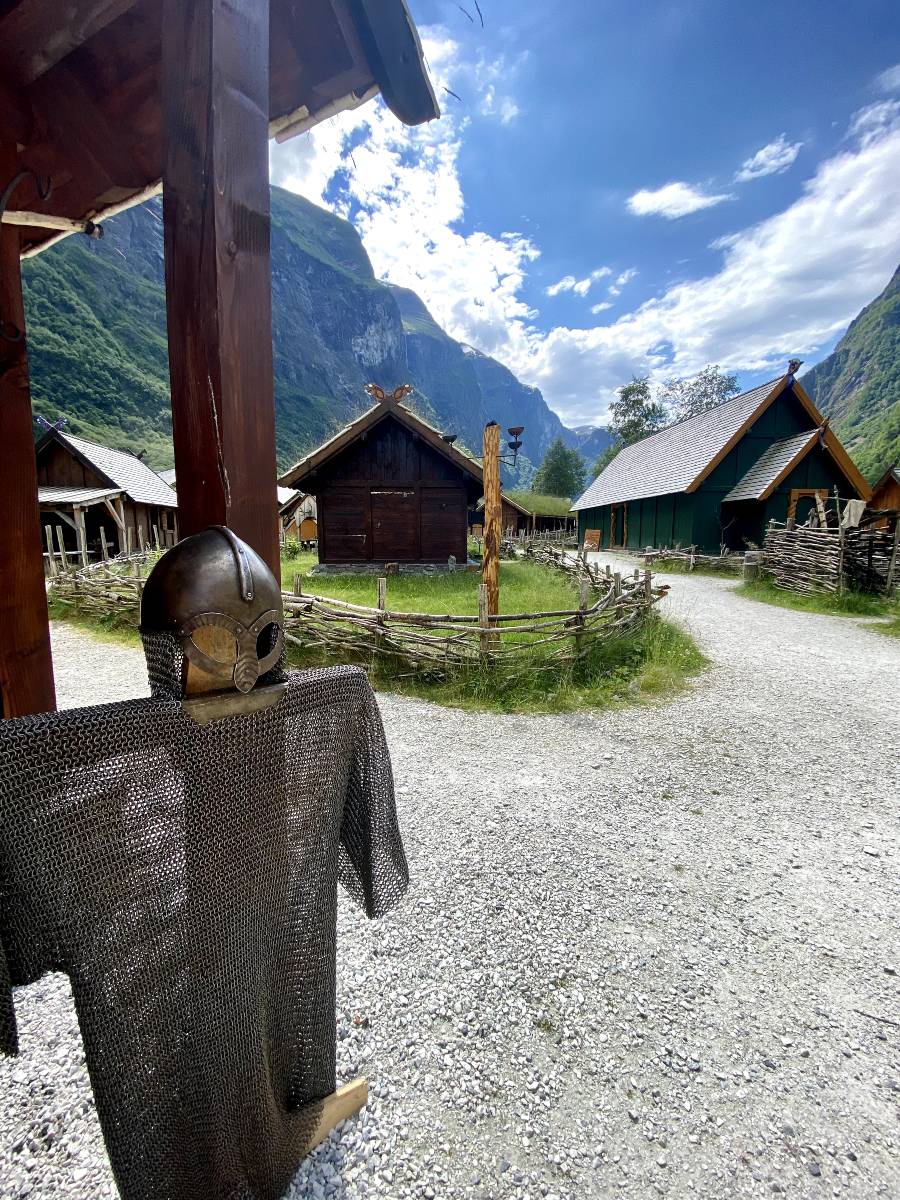
Is Norse and Viking the same?
It’s quite a common mistake to think that Norse and Vikings are the same, but in reality, they’re as different as mead and ale!
Let’s clear this up: the term ‘Norse’ actually refers to the language spoken by the folks in the Nordics during the Viking Age (and before). It’s like the ancient cousin of modern Scandinavian languages.
Within the language, there are some Nordic symbols that were used to make sense of it all, called Runes, and some symbols that had a greater meaning. But more on that below.
Currently, it is Icelandic that is the closest equivalent to the Norse language. However, Norwegian (and especially the western Norwegian dialects like the one I speak) come in as a close second.
Side note : Some people also refer to the people of the Nordic during Medieval times as Norse. So, it covers not only the language, but also a culture found across the Scandinavian and Nordic countries.
For example, Norse mythology was believed and practiced as the main religion across Sweden, Norway, Finland, Denmark and Iceland during the Viking age.
Now then, what about the Vikings?
Who were the Vikings?
The Vikings were obviously not a language, but did you know it was a profession .
These were the seafaring Norse folks who got a kick out of exploring, trading, and sometimes – let’s be honest – a bit of raiding.
Most people believe that Viking was the name of the entire people alive in Scandinavia during the Viking age, but in fact, most of them were farmers. Only some (the brave, explorer-types) were actually Vikings.
So, can you be a Viking without being Norse? Nope. But if you spoke Norse, did that make you a Viking? Not necessarily. It’s like owning a ship doesn’t necessarily make you a sailor, right?
I hope this makes sense!
To dive more into the Vikings and who they were, check out my guide to the most famous Vikings in history next!
Runes, Symbols and More
Now that we’ve cleared up the difference between Norse and Vikings, let’s talk about runes and symbols of the time.
Both were used by the Vikings, but had different purposes. Runes were an alphabet used for writing , while the other Nordic symbols had a more visual meaning.
Below, I have split this guide into Norse Symbols and their meanings, and then covered Runes separately.
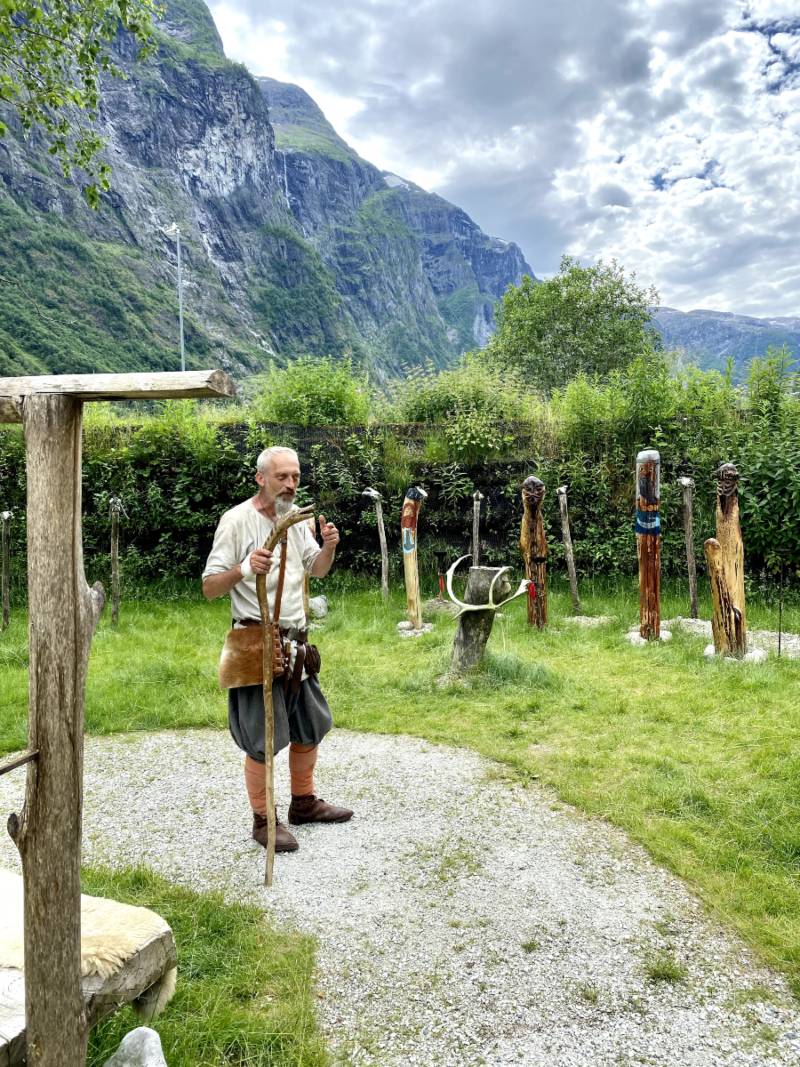
What are runes?
Runes aren’t just pretty etchings on stones or ancient Viking graffiti (or tattoos on guys who think they are Vikings).
They were the real deal – the ABCs of the Norse world. Runes are letters in alphabet sets known as runic alphabets. They were the literal letters of the time.
You have probably seen runes before, either as symbols on someone’s necklace, or even on a Scandinavian-inspired TV show.
Each rune had its own distinct meaning and was used to communicate something specific. They were etched onto various materials like stone, wood, and metal to serve numerous purposes.
From commemorating feats of bravery to leaving directions for fellow travelers, runes were the Norse folks’ go-to method for written communication.
In addition to being the letters of the time, the runes also had their own symbolic meaning separately. Some of the runes were the Norse symbol for protection, luck and balance, for example.
Basically, when a Rune stood on its own, it could mean more than just being a sound to tell you how to pronounce a word (like a letter).
The difference between runes and Viking symbols
So, what separates a rune from other Nordic symbols?
Well, it’s like comparing apples to oranges… (or should we say, runes to symbols?)!
Runes, being the alphabetic system of the Norse, were primarily used to represent sounds and form words.
On the other hand, the other Viking symbols, while being just as cool as runes, were more like visual metaphors.
They were used for their symbolic value, representing a wide array of ideas, from courage to fate to gods. Think of it this way: if the Norse world was a comic book, runes would be the dialogue and other symbols would be the super cool artwork!
I know it is a little confusing, since I just said that runes could also have a symbolic meaning. However, this was only when they stood on their own.
12 Must-Know Nordic Symbols and meanings
Below I have outlined the 12 most famous Nordic symbols and their meanings. Note that these are not runes , but symbols used during the Viking age to symbolise certain feats and wishes.
I have covered runes and their meanings further down in this article.
Most of these are symbols that were actually worn by people during the Viking age, such as Thor’s hammer. We know this, because necklaces with the hammer have been dug up near graves from the Middle ages across Scandinavia.
A few are also symbols from Norse mythology that have been given meaning through their stories, without necessarily being something the Vikings (or Norsemen) carried around physically. For example, the Fenrir wolf.
#1 Thor’s Hammer (Mjølner/Mjolnir)
Ever heard of Mjolnir? I’m sure you have, as it’s probably the most famous of all the Viking symbols that is still being used today.
Mjolnir was the mighty hammer wielded by none other than Thor, the Norse god of thunder. He would ride around the skies on his chariot pulled by goats (yes), setting of thunder and lightning using his hammer.
Mjolnir was a symbol of protection and power , capable of leveling mountains with a single blow.
When the Vikings weren’t busy navigating the high seas or raiding (they weren’t just about that, you know), they would wear amulets in the shape of Mjolnir for good luck and protection.
So, think twice the next time you casually pick up a hammer. You might just be holding a symbol of ancient strength and power!
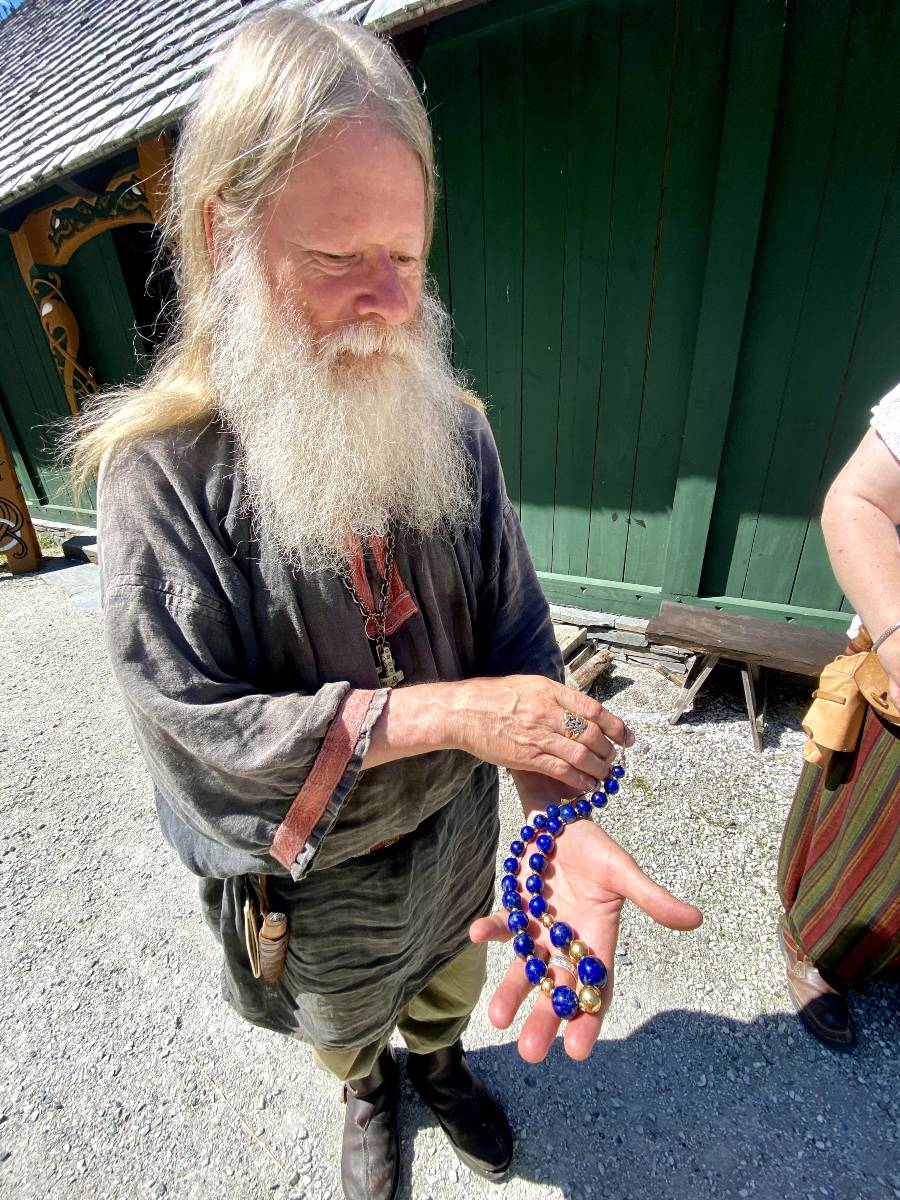
#2 Valknut (Odin’s Knot)
Okay, so let’s move onto a more geometric symbol called the Valknut – Val translates to choice , and knut translates to knot . Yet, instead of calling it a “choice not”, it has been dubbed Odin’s Knot in English.
This symbol is a set of three interlocking triangles, kind of like a Viking version of a Venn diagram. It was found on items onboard the famous Oseberg ship, so we know the old Norse folks thought it was pretty important.
The Valknut is often called Odin’s Knot because it’s associated with the Allfather himself, Odin, the god of war, wisdom, and poetry.
Whilst the experts aren’t in complete agreement about its meaning, the symbol is believed to represent the transition between life and death.
#3 Yggdrasil (the Tree of life)
Next up on our Viking symbol tour is the big one, the epicenter, the “root” of it all – the Yggdrasil, otherwise endearingly known as the Tree of Life.
Now, imagine a tree so huge that it makes your favorite oak tree look like a bonsai. Yggdrasil, this cosmic ash tree, has its branches reaching out to touch the heavens and the roots digging deep down into the underworld.
Yggdrasil is the ultimate symbol of interconnectedness, linking the realms of the Norse goddesses and gods, men, and the dead.
If you ever feel a bit lost, just remember – we’re all just hanging out somewhere on Yggdrasil’s branches, navigating through this vast cosmos together. Pretty cool, huh?
Therefore, it’s pretty obvious that the symbol of Yggdrasil (whether you want it as a tattoo or a necklace), is a reminder that you are part of something greater.
#4 Vegvisir (the Viking compass)
I love how these Norse words and expressions are so similar to words we use in Norway today. “Vegvisir” sounds a lot like the word “Vegvisar” (or “veiviser” if you are from eastern Norway), which means “ pathfinder ” in Norwegian.
This Viking compass symbol was said to protect travelers from getting lost in unfamiliar territories. Shaped like an eight-pointed star, with different rune-like symbols on each point, Vegvisir was believed to guide the bearer through rough waters and bring them safely home.
Nowadays, you might not find a compass like this on your GPS, but rest assured that wherever you go, Vegvisir has got your back!
#5 Hugin and Munin (Odin’s ravens)
Hugin and Munin, the winged companions of Odin, are more than just a couple of ravens with cool names.
In Old Norse, Hugin translates to ‘thought’ and Munin to ‘memory’.
These ravens weren’t just Odin’s pets; they were his eyes and ears in the world. Every day, they’d fly across the realms, observing everything, and at dusk, they’d return to whisper all they’d seen and heard into Odin’s ears.
Imagine having an X (formerly Twitter) feed directly wired into your brain, except every tweet is a meaningful update about the state of the universe.
So, the symbol of Hugin and Munin is a powerful reminder to us all, to use our thoughts and memories wisely as we navigate life’s challenges. Norse symbols always have a way of bringing profound life lessons to the front, don’t they?
#6 The Fenrir Wolf (Fenrisulven)
The Fenrir Wolf, or Fenrisulven as we affectionately call it in Norway, is another gripping symbol from the Norse mythology.
This monstrous wolf is actually the child of Loki, and let’s just say, the apple didn’t fall far from the tree! Fenrir was prophesied to cause mayhem during Ragnarok, the end of the world. So, the gods decided to play it safe and keep him chained up.
Today, Fenrir serves as a potent symbol of destructive forces that are difficult to control, but also of the courage to face our deepest fears.
So next time you come across this symbol, remember, it’s not just about the fear of the wolf; it’s about the courage in facing it.
#7 The Helm of Awe (Oegishjalmr, Norse symbol for protection)
The Helm of Awe, or Oegishjalmr as it’s known in the old tongue, is a real head-turner in the world of Viking symbols. It’s the Norse equivalent of a security blanket.
This symbol, often depicted as an eight-armed figure radiating from a central point, was believed to provide protection and the power to strike fear in one’s enemies.
The Helm of Awe is more than just a tool for intimidation; it’s a reminder of our inner strength and resilience, and the lengths we’ll go to protect what’s important to us.
So, when life feels like a Viking raid, remember the Helm of Awe – you’re stronger than you think!
#8 Skuld’s Net (Net of Wyrd)
Skuld’s Net is also known as the Net of Wyrd.
This intriguing piece of Viking symbolism is like the ancient Norse version of the world wide web. Instead of cat videos and memes, it represents the interconnectedness of past, present, and future.
Picture it as a complex web, where each intersection is an event in time, linked to every other event – a reminder that our actions today ripple through time, impacting our tomorrows.
So, why was it important to our seafaring predecessors?
Well, the Vikings believed that destiny was a powerful force but not unalterable. The Net of Wyrd symbolized their understanding of shaping their own fate.
So next time you’re faced with a tough decision, remember the Net of Wyrd. It’s not just about accepting our fate; it’s about weaving it.
#9 Gungnir (Odin’s mighty spear)
Gungnir, the notorious spear of the All-father Odin, is another fascinating symbol in the Viking lexicon.
As the stories go, this was no ordinary spear. Crafted by the dwarves – the master smiths of Norse mythology – Gungnir never missed its target and always drew blood when thrown.
But what’s the deeper significance and the meaning here? To the Vikings, Gungnir symbolized the unerring pursuit of knowledge, the relentless quest for wisdom, much like Odin himself who was known for his wisdom.
So, the next time you’re in a tight spot, remember Gungnir. Take aim, trust your intuition, and let fly! After all, who doesn’t want to channel a bit of Odin’s unstoppable spirit in their everyday life?
#10 Hraethigaldur and Ottastafur
Moving onto yet another intriguing piece of Viking symbolism, let’s dive into Hraethigaldur and Ottastafur.
Not as famous as our friend Gungnir, but equally fascinating, these two are Norse stave symbols often intertwined with magic and protection.
Hraethigaldur , or the “Rune of Rabbits,” is believed to help one become elusive and quick, just like a bunny hopping away from danger.
On the other hand, Ottastafur is your go-to symbol for causing fear and panic among enemies.
So, whether you’re channeling your inner Bugs Bunny or want to ward off that particularly pesky co-worker, these symbols got your back.
#11 The Midgard Serpent (Jörmungandr, the Norse Ouroboros)
Heard of the Midgard Serpent? No, it’s not the latest character in a Marvel comic, but a powerful creature from Norse mythology.
All though, to be fair, I would love for Midgardsormen to show up in the next Thor movie.
Born from the union of the trickster god Loki and the giantess Angrboda, the Midgard Serpent was so enormous that he could encircle the entire world, Midgard, and grasp his own tail in his mouth.
But what does Midgardsormen (Norwegian) / Jörmungandr (Old Norse) symbolize, you ask?
Well, it’s all about the eternal cycle of life, death, and rebirth – quite deep for a giant mythical snake, right?
This massive serpent biting its own tail represents the concept of the Ouroboros, a symbol of eternal cyclic renewal.
#12 Vatnahlífir (norse symbol for protection from water)
Vatnahlífir was a stave often tattooed on a Viking’s underarm as they sailed across difficult oceans and rivers. It was the Norse symbol to protect you from drowning, and was believed to be very important to the Vikings.
The Vikings also believed that the Vatnahlifir helped guide you through rough waters. So, when they were rowing across the seas in their longships (pictured below), they usually had some version of the Vatnahlifir on their person.
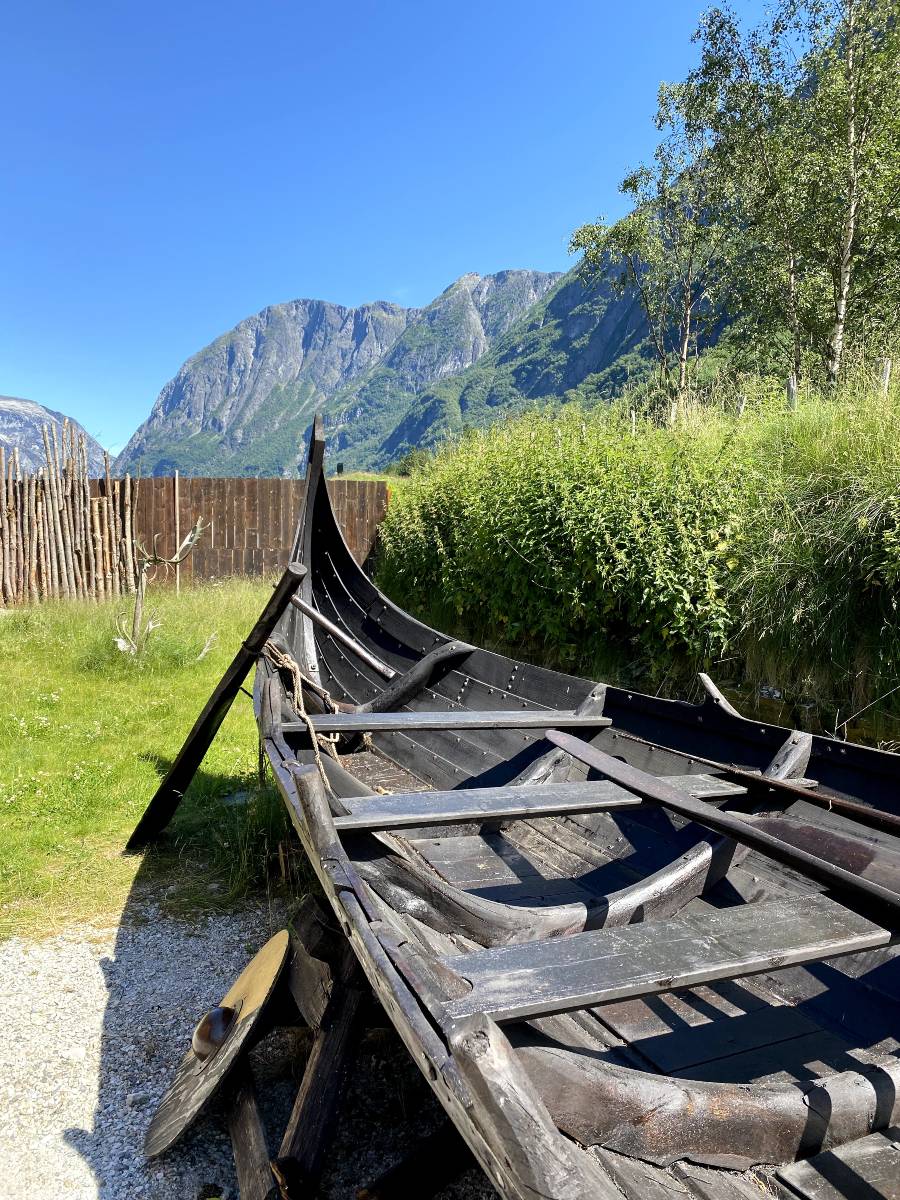
Now that we’ve covered the 12 most famous Nordic symbols and their meaning, it’s time to move on to the other form of symbol from the Vikings: runes!
The Runes (Viking symbols) and their meaning
Let’s quickly recap what runes are.
These were the Viking’s version of an alphabet , called the Futhark , and they’re chock-full of mystery and magic.
Each rune was not only a letter in their written language but also held a special meaning as a standalone symbol (talk about multitasking).
They were used in everything from everyday writing to divination and were a significant part of Norse culture.
The oldest form of the Scandinavian runic alphabeth is the Elder Futhark. There are 24 signs, or letters, in this alphabet.
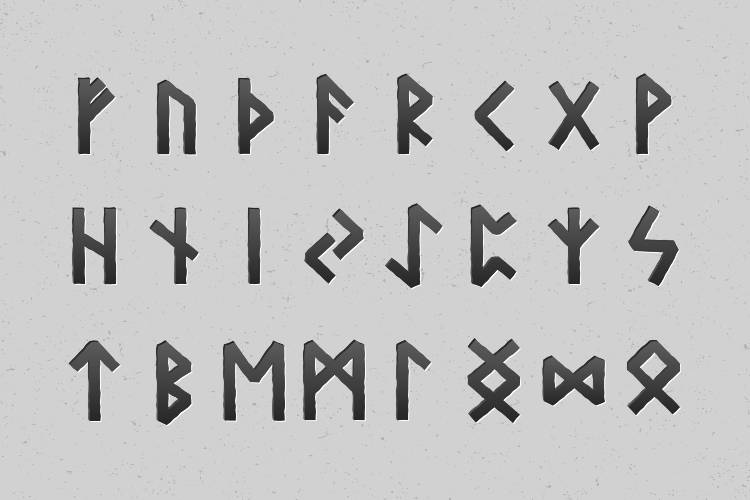
The Runic Alphabet
Below I have listed each of the runes, and their individual meaning.
- Algiz: The rune of protection and defense
- Ansuz: Considered the rune of Odin himself, and communication
- Berkana: The rune of birth, femininity and fertility
- Dagaz: The rune of dawn, awakening, awareness and hope
- Ehwaz: The rune of transportation and movement (and as a result, progress)
- Eihwaz: The rune of reliability, dependability and balance
- Fehu: The rune of success, wealth and abundance
- Gebo : The rune of balance, generosity and gift (Elhwas is also the rune of balance)
- Hagalaz: The rune relating to the wrath of nature and being tested
- Inguz: The rune og growth, change and common sense
- Isa: The rune of clarity, watching and waiting (being introspective)
- Jera: T his rune represents the harvest, a time of peace and happiness, and a fruitful season
- Kennaz: The rune of vision, knowledge and creativity
- Laguz: The water rune, and the rune of flow, intuition and emotions
- Mannaz: The rune of humanity, friendship and collaboration, but also of individuality
- Nauthiz: The rune of need, restriction, conflict, willpower and endurance
- Othila: The rune of ancestry, heritage and inheritance
- Perthro: The rune of fate, mystery and secrets
- Raidho: The rune of travel, rhythm and spontaneity
- Sowilo: The rune of the sun, success and goals achieved
- Thurisaz: The rune of brute force/power, warrior, and the symbol of Thor (it looks the most like a modern T)
- Tiwaz: The rune of masculinity, leadership and justice
- Uruz: The rune of strength of will
- Wunjo: The rune of comfort, pleasure, joy and also success
Wondering how to pronounce the runic alphabet? Watch the video below!
Norwegian souvenirs with Nordic Symbols and runes
If you found this post because you want to find a Viking-themed necklace or gift for someone you know, you’ve come to the right place!
Now that we have covered some of the most famous Nordic symbols and runes, I want to share some of my favorite types of Viking-themed souvenirs and jewelry, where the ancient symbols of the Nordic warriors meet modern style!
From the helm of awe or terror, known as Oegishjalmr, a symbol of protection and might, to other significant Norse symbols, each piece tells a unique tale of Viking valor.
For the vikings, these symbols were more than just decorative motifs; they represented the beliefs, values, and way of life of the Norse people. For instance, Oegishjalmr was believed to instill fear in enemies while protecting its wearer from harm. Other popular symbols include Thor’s hammer, Mjolnir, symbolizing strength and power, and Yggdrasil, the tree of life.
Whether you are looking for a meaningful gift or want to add a touch of Viking heritage to your own style, there are plenty of options to choose from.
Another great Scandinavian gift is a knitted Nordic sweater !
Below I have hand-picked a range of gifts with Viking symbols on them, mostly necklaces and jewelry (it’s the most common). Amazon especially has a lot to choose from, from $300 gold pieces necklaces to more affordable ones.
Nordic Symbols and Meanings FAQ
Below you will find the most frequently asked questions about nordic symbols and their meaning. I have done my best to answer all. If you have a question that is missing, comment below so I can add it to the FAQ.
The most powerful Norse symbol is the Valknut. It is a symbol of power, strength and courage. It was believed to be a magical symbol capable of connecting with the gods and spirits of the Norse pantheon. The Valknut was associated with Odin, who was the most powerful god in Norse mythology.
Thor’s hammer, known as Mjölnir, is the most famous Viking symbol. It was used by the Norse God Thor to protect Asgard, the home of the gods, from their enemies. The hammer was said to be able to deliver lightning and thunder and could level mountains with one blow. In Norse culture, it is a symbol of protection, strength, and courage.
Norse runes were the alphabet of the Viking age, used to form words and sentences. The runes also had meaning on their own, and could represent protection, love, strength and more.
Runes were the nordic alphabet. Other Nordic symbols include Thor’s hammer, the Tree of Life (Yggdrasil) and Valknut (Odin’s know).
The rune Ehwaz is the most commonly known Viking symbol for loyalty.
Mount Ulriken, Bergen: Complete Hiking Guide, Map & Video!
The 10 best cafes in bergen, norway [by a local], you may also like, the best hotels in oslo, norway [budget to..., 5 best fjord cruises from bergen, norway [a..., how to get from bergen airport to the..., is bergen worth visiting [a local’s opinion], 43 great things to do in oslo, norway..., 10 norwegian and scandinavian backpacks you’ll love, 18 great things to do in olden, norway..., the 7 best italian restaurants in bergen [by..., 10 best restaurants in bergen, norway [a local’s..., norwegian sweaters: everything you need to know (nordic..., leave a comment.
You must be logged in to post a comment.

Nordic Perspective
Old Nordic Symbols: Norse Runes & Viking Ornaments (Meanings & Examples)
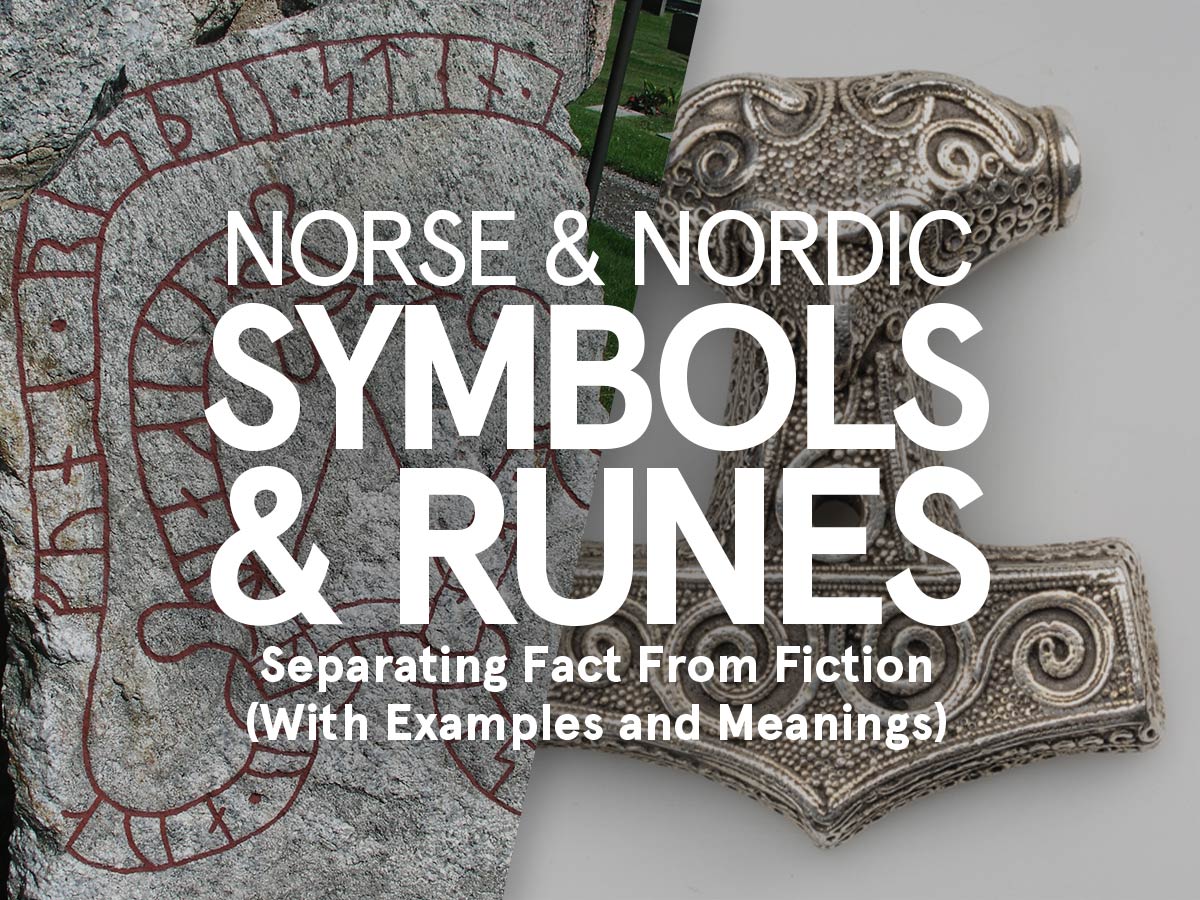
Old Norse mythology is filled with fascinating symbolism, and the runic alphabets of Germanic Europe have told numerous tales of heroic deeds and tragic deaths over the years. Having worked with graphic design for most of my adult life, I’m a huge fan of typography and symbolism, and also a huge history nerd. So I’ve spent a lot of time studying and appreciating the Viking symbols left behind on runestones, jewelry, weapons, armor, and other items from the Viking Age.
But the world of Norse symbols is not without its controversies and misconceptions; from extremist groups trying to hijack the symbols to serve their agendas, to magical sigils with questionable historical accuracy spreading like wildfire among millennials (I’m looking at you Vegvisir ).
So let’s clear some things up and go through the facts and myths surrounding Norse runes and symbols, how they look, and what we know about their meaning.
Hopefully, you’ll find this as fascinating as I did, and learn a thing or two along the way.
ℹ️ For the past 10 years, I’ve studied Nordic symbolism of all kinds, with a specific focus on the Norse world during the Viking age. In this article, I’ve listed Norse runes and symbols that have been found in Scandinavia and dated back to the Viking age. I’ve specified the source of each symbol, such as a specific runestone or piece of jewelry, so you can look into it further if you feel like digging deeper.
For the sake of clearing up common misconceptions regarding Viking symbols, I’ve also included some symbols that are commonly and mistakenly thought to be connected to the Vikings, and explained why these symbols have not been found to be linked to the Norse people or culture.
Elder Futhark Runic Alphabet (the Germanic Runes)
Younger futhark runic alphabet (the viking runes), medieval runic alphabet, dalecarlian runic alphabet, meanings and explanations of the viking runes (old norse alphabet to english), what do upside-down runes mean, the meanings attached to elder futhark runes, the medieval runic alphabet: futhork, dalecarlian runes (late 1500s to 1900s), the real viking symbols: authentic norse symbols dating back to the viking age, the false viking symbols: nordic symbols commonly (but likely mistakenly) linked to norse mythology.
- More Ahistorical Symbols: Rudolphs Koch's Symbols in The Book of Signs
Let’s start by looking at the Runes, the letters of the Old Norse language the Vikings spoke, after which we will look at some of the symbols from the Viking Age specifically.
Rune Circle Metal Wall Art
Metal wall art featuring and inspired by designs found in archeological sites from Viking Age Scandinavia. Free shipping worldwide.
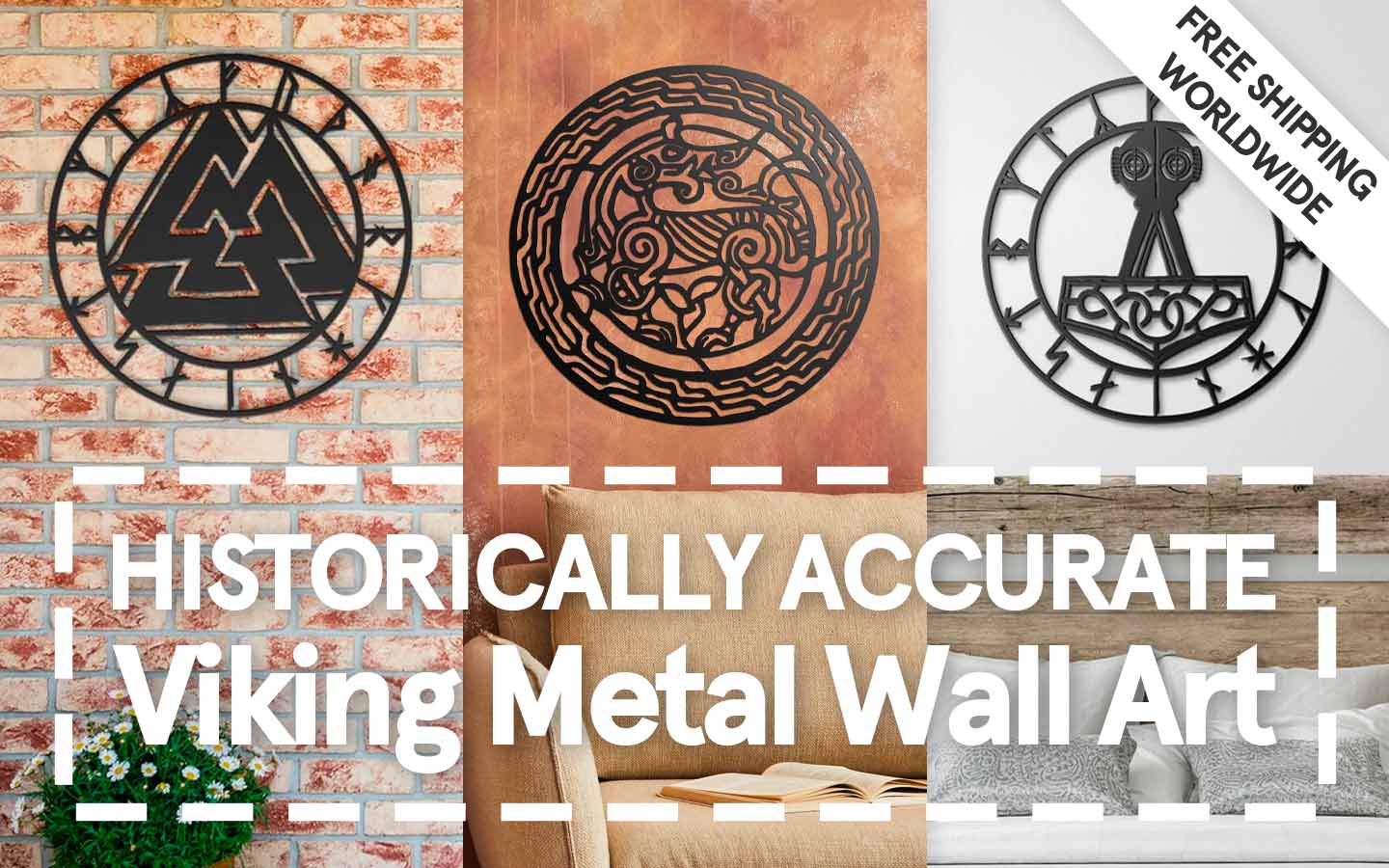
Germanic and Norse Runes in Scandinavia: A Timeline
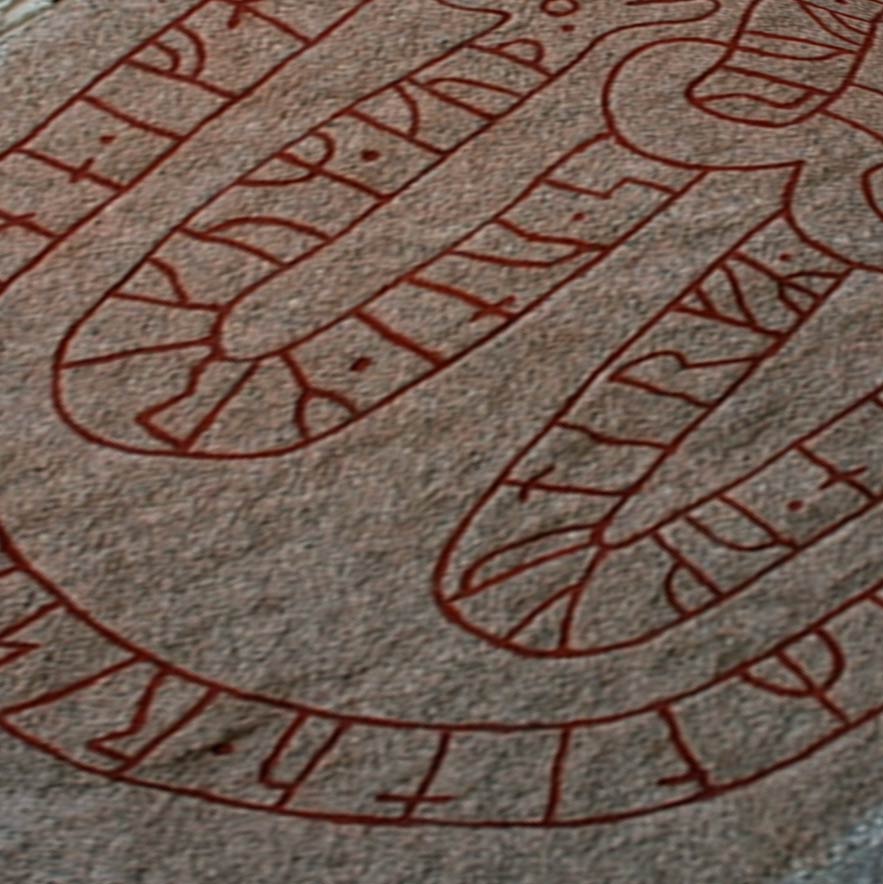
The first runic alphabet in Scandinavia.
600–1100 CE
A runic alphabet adjusted for the Old Norse language of the Vikings. Overlapped for a few centuries with Elder Futhark, but eventually replaced it altogether
1100–1600 CE
As Christianity and the influence of the Latin alphabet spread across Scandinavia, the runes were adjusted to include new sounds and letters. Stunged or dotted runes were used to pronounce in a different way.
1500–1900 CE
As the Runic alphabet gradually disappeared in Scandinavia, it held strong in the Dalarna and Gotland regions of Sweden in the form of the Dalecarlian runes..
When tales were told of Viking adventures, they were generally written down in Old Norse on runestones using the Younger Futhark runic alphabet (used in Scandinavia during the Viking Age).
This is also what people look for when it comes to Nordic lettering in general, so I feel like it’s fitting to start here, and then dive into both older and newer runic alphabets afterward.
Related Reading
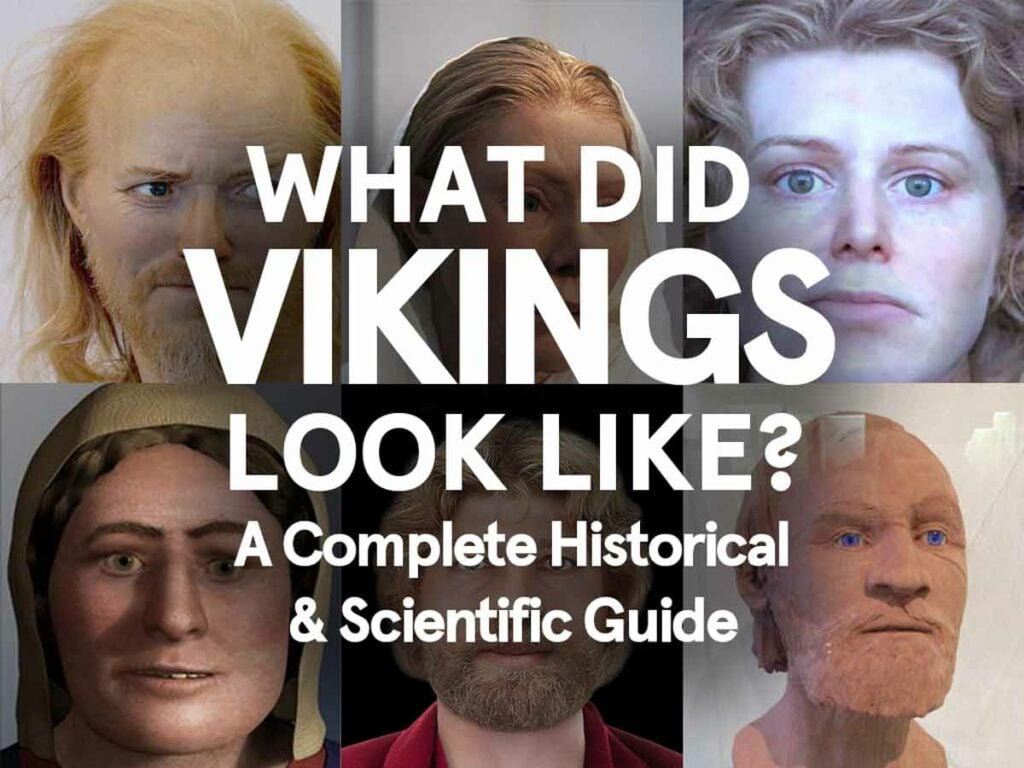
How Did Vikings Actually Look? (Complete Guide to Viking Traits)
Recent advancements in DNA analysis tech have led to extraordinary insight into how Vikings looked, from hair and eye color to size and ancestry. Scientists are now able to create eerily realistic facial reconstructions, getting us closer than ever to find out who they were and what the Vikings looked like. Read Article Now
Viking Age Scandinavian Runes & Their Meanings (Younger Futhark)
The Scandinavian Younger Futhark is a simplified version of the Germanic Elder Futhark, with 16 (instead of 19) characters specifically tailored for the Old Norse language.
By the time the Viking Age took off around 800 CE, Younger Futhark was the dominant alphabet in Scandinavia, and is the one you’re most likely to see on runestones and other objects from the Viking Age.
I’ve listed all the Old Norse runes as well as their Latin letter equivalent below:
Each rune is a letter in the Old Norse alphabet, and as such they all represent a sound similar to the Roman/Latin letters we use in the western world today. However, they also carried names that can sometimes be construed as a separate meaning associated with the rune, which runologist Victoria Symons explains in her book Runes and Roman Letters in Anglo-Saxon Manuscripts as she compares runes to Roman letters:
Runic letters, on the other hand, are inherently multivalent; they can, and often do, represent several different kinds of information simultaneously. This aspect of runic letters is one that is frequently employed and exploited by writers and scribes who include them in their manuscripts. Victoria Symons in Runes and Roman Letters in Anglo-Saxon Manuscripts (2016), p. 6-7
So it’s also important to note that although we have found plenty of evidence of the runes being used both as letters and as symbols with further meanings, each individual rune may not always have carried multiple meanings on top of the sound it made and the words it created in combination with other runes.
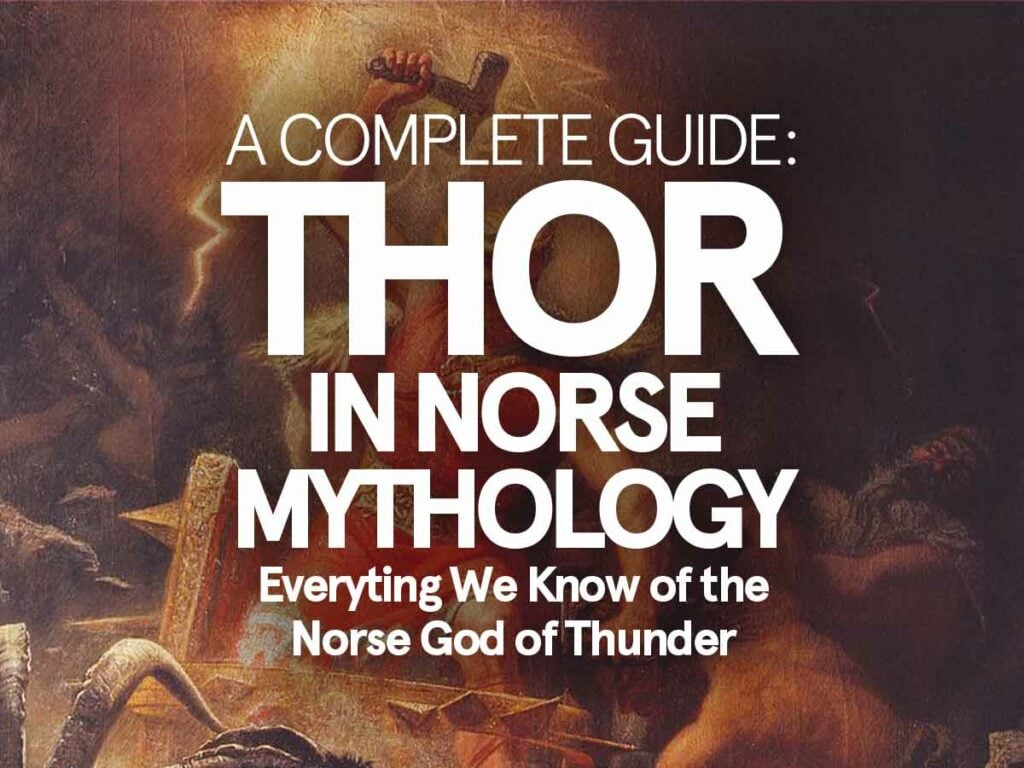
Thor in Norse Mythology: The Strong God of Thunder & Farmers
Believe it or not, the Thor from Norse mythology is not quite the handsome, chiseled, blond, and time-traveling hunk you’ve seen in the MCU movies. In Norse mythology, the thunder god is primarily described as a red-haired, pot-bellied, temperamental, and fiercely strong warrior, who loves to knock down vast quantities of mead and even known to dress up as a lady (!) in order to trick the giants to give back his lost hammer. Read Article Now
The Younger Futhark runes were also divided into two different styles: Long-branch runes and Short-twig runes .
Some argue that they were used depending on location; with Long-branch runes primarily used in Denmark, and short-twig runes primarily used in Sweden and Norway.
Others believe that instead of specifically Swedish, Danish, or Norwegian runes, their usage was more of a practical matter: If you wanted to write on stone, you used Long-branch runes, and if you wanted to write on wood, you used Short-twig runes.
I’ve seen many runestones in Sweden with Long-branch runes, so I am partial to the practical divide theory; that you used whatever type of rune was more practical for the medium you wrote/carved on.
For instance, here is a runestone I came across in Uppsala, Sweden that features long-branch runes:
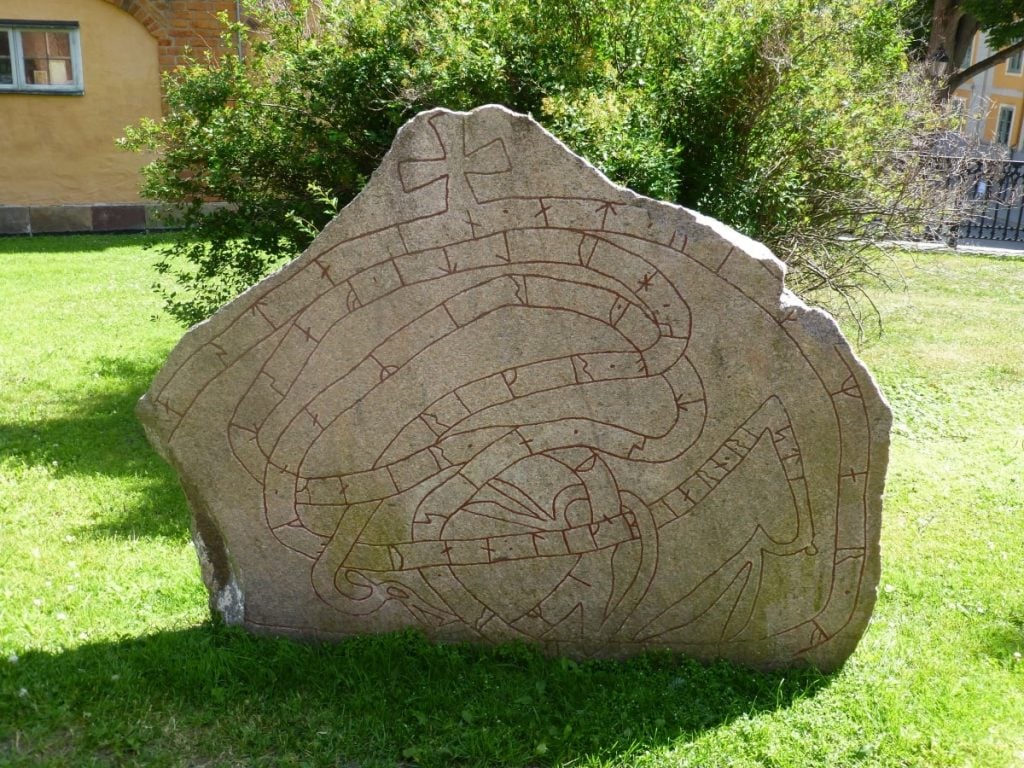
Since runes are mostly equivalent to our modern-day alphabetical letters, writing them upside down doesn’t change the sound they are attached to. This is especially relevant in many of the runestones, where the runes are written in circles and other irregular patterns, instead of on a straight line as we tend to do today.
We haven’t found any indication that they would mean something different upside-down when they were used in a way that would convey their inherent meaning (i.e. ᛋ = sun).
Next, let’s go back in time and look at when people in Scandinavia started using runes, which takes us all the way back to the Iron Age.
Germanic Runes and Their Meanings (Elder Futhark)
The Elder Futhark Runic alphabet consists of 24 runes, and was in use across all Germanic cultures since the Iron Age (starting around 200 CE), and in Scandinavia specifically deep into the Viking Age.
In other words, this is the first runic alphabet the Norse people (a.k.a. the Vikings) started using on their runestones, weapons, jewelry, etc.
It started being replaced by Younger Futhark around 700-800 CE, and was no longer in use by the 10th century CE, when the Viking Age was at its height.
The Elder Futhark started being used in Scandinavia around 600 years before the Viking Age started, but was still used by Vikings early on, before Younger Futhark took over completely.
The Proto-Germanic language spoken in Scandinavia and Northern Germany spread across Europe with the Germanic migrations that spurred on the fall of the roman Empire, and the Germanic Runes could be found across most of the European continent during the Iron Age.
Here’s how the Germanic language and runes spread across Europe and the extent of the Germanic migrations around the fall of the Roman Empire.
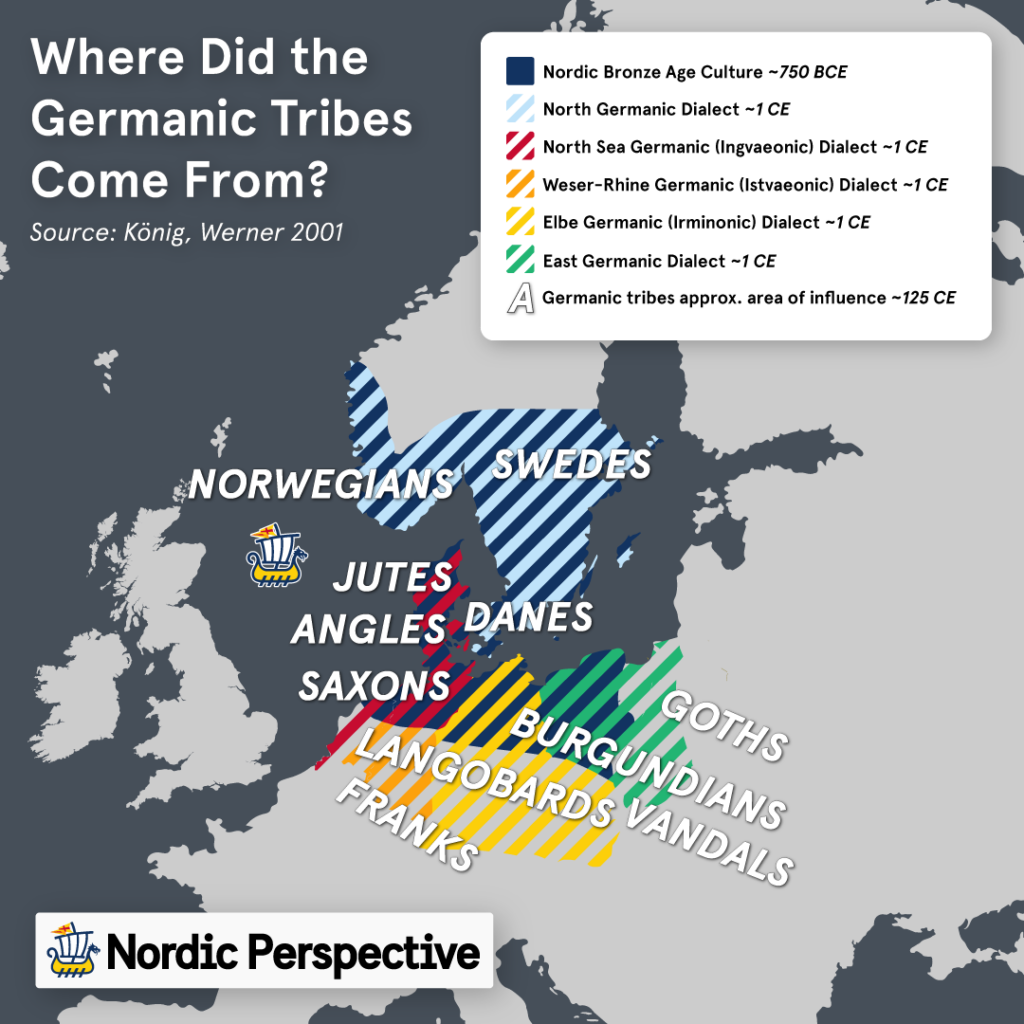
The Elder Futhark runic symbols were usually written as a rune row divided into three ætts (meaning “eights”, with eight runes in each ætt ). The first ætt is Frey’s, the second is Hagal’s, and the third is Tyr’s (the names of the first letters of each ætt ).
Below this is visualized in three rows:
As they both stem from the Nordic Bronze Age culture and language, the Germanic and the Scandinavian runes have the same meanings and origins.
However, due to differences in pronunciation and style in the Proto-Germanic and Proto-Norse languages, the names and sounds are slightly different (and there are of course 3 more runes).
Later Scandinavian Runes: the Futhork & Dalecarlian Alphabets
The Viking Age is generally agreed by historians to have ended with the successful invasion of England by William the Conqueror (who was a Norman of Viking descent ironically), specifically the decisive Norman victory at the Battle of Hastings in 1066.
Scandinavia slowly started getting Christianized around the same time, and as continental European influence grew in the region, the language slowly expanded.
The Old Norse language started including sounds from the Latin alphabet, and the use of stung or dotted runes to indicate alternate sounds for specific runes started to become more and more common.
Despite the strong influence of the Latin alphabet, the people of Scandinavia did not stop writing in runic script. Instead, the Younger Futhark runes that had been in use during the Viking Age were expanded into a new runic alphabet that included ways to write out all the sounds of the Latin alphabet.
The Medieval runic alphabet also had 16 runes, just like Younger Futhark, but each rune had variations that could form all the sounds latin letters could.
Interestingly, one of the oldest books preserved written with medieval runes is this copy of the Scanian law book, which is from the region I live in:
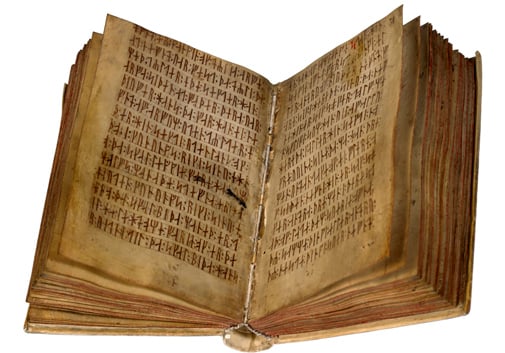
The Runic alphabets had disappeared from Scandinavia almost completely by the 1500s, but the Swedish regions of Dalarna and Gotland people kept the runic alphabets alive, in Dalarna specifically all the way into the early 1900s.
Here’s how the Early Dalecarlian Runes looked like:

Here’s how the late Dalecarlian Runes looked like:
Real Viking Age Symbols: Separating Fact From Fiction
The Old Norse culture was rich in symbolism, and there were many inscriptions, ornaments, pendants, pins, and other accessories left behind for us to get an insight into the popular symbols of the Viking Age.
But there are also a lot of misconceptions floating around on the interwebs regarding viking symbolism, so I’d like to try to separate fact from fiction by grouping the real Viking symbols we for sure know are from the Viking Age, apart from mostly modern symbols we have not been able to link to Viking Age Scandinavia.
The Norse people of Scandinavia loved to carve pictures of Norse gods and other mythological creatures, along with tales of their own deeds onto runestones, jewelry, weapons, shields, helmets, and all kinds of other objects.
Luckily, we have been able to find many such examples that are still intact, giving us a pretty good idea of the types of symbols and ornaments the Vikings used and valued.
Here are some of the more famous symbols that have actually been found on objects dating back to the Viking Age in or around Scandinavia (meaning they are as authentic as can be):
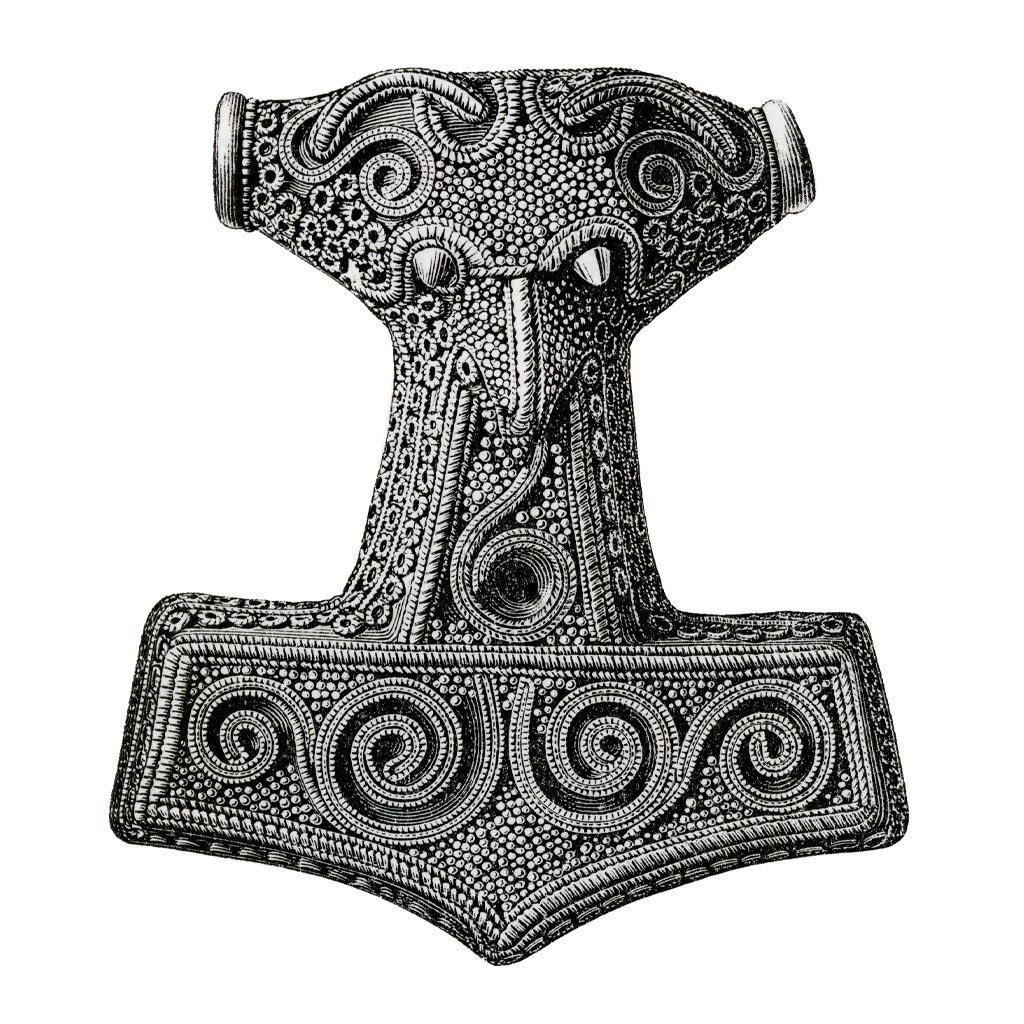
Hrafnsmerki
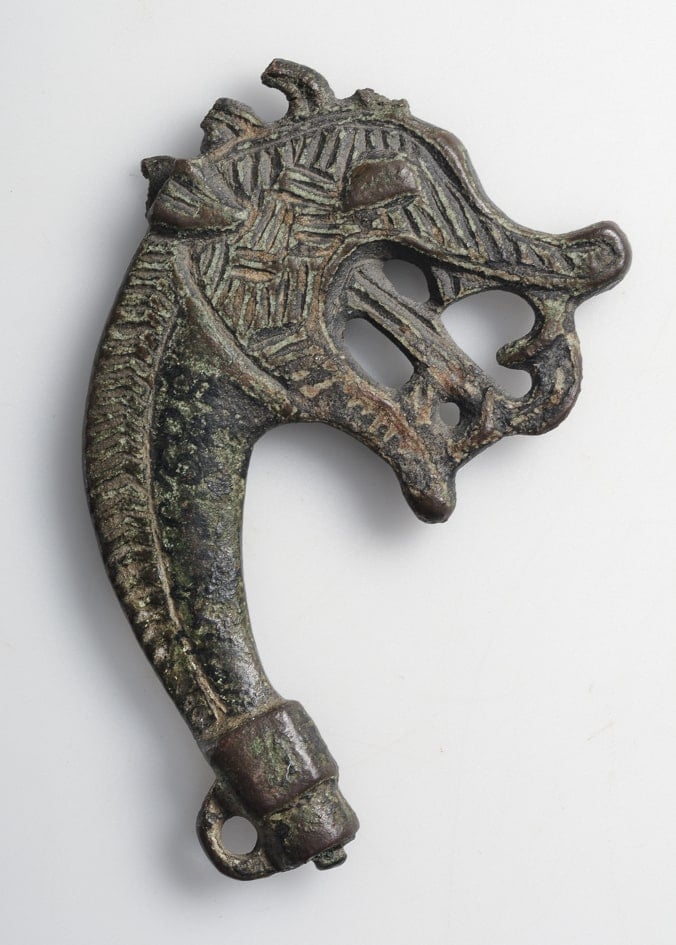
Dragon’s head
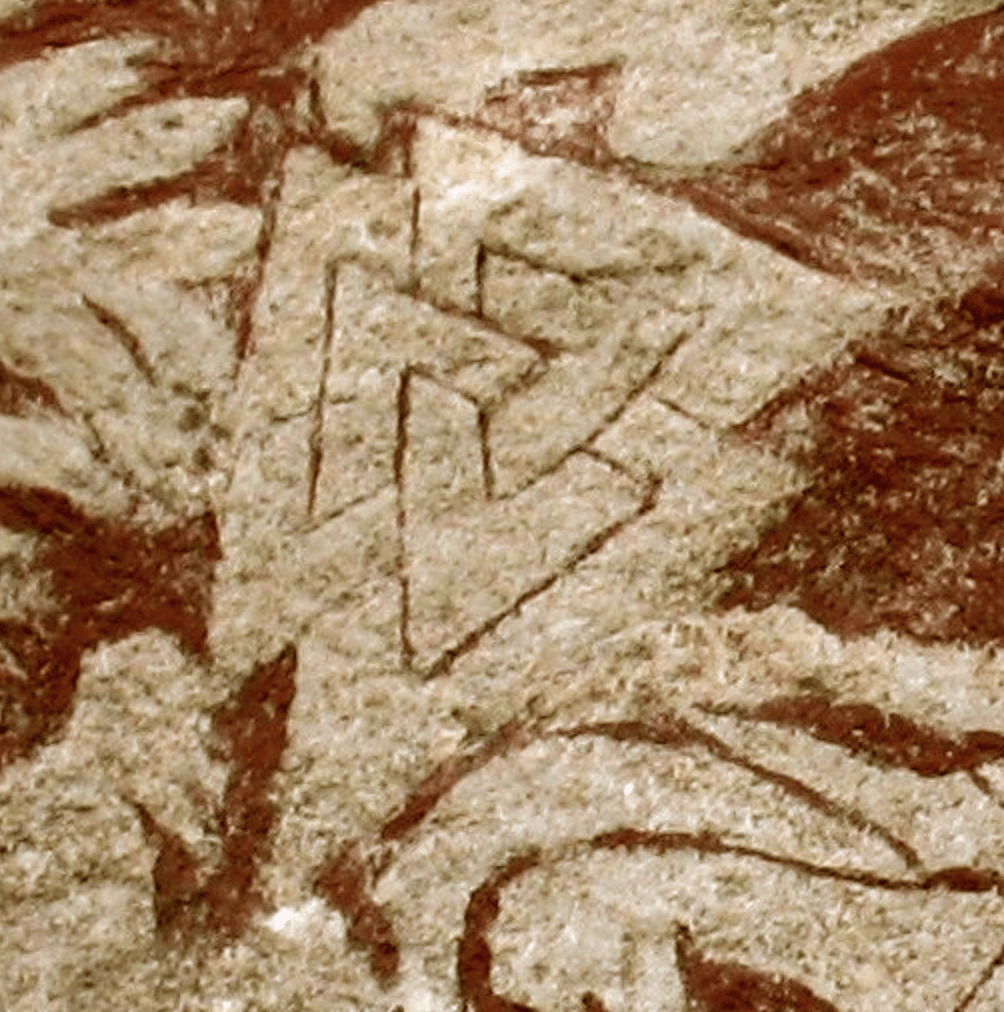
The Longship
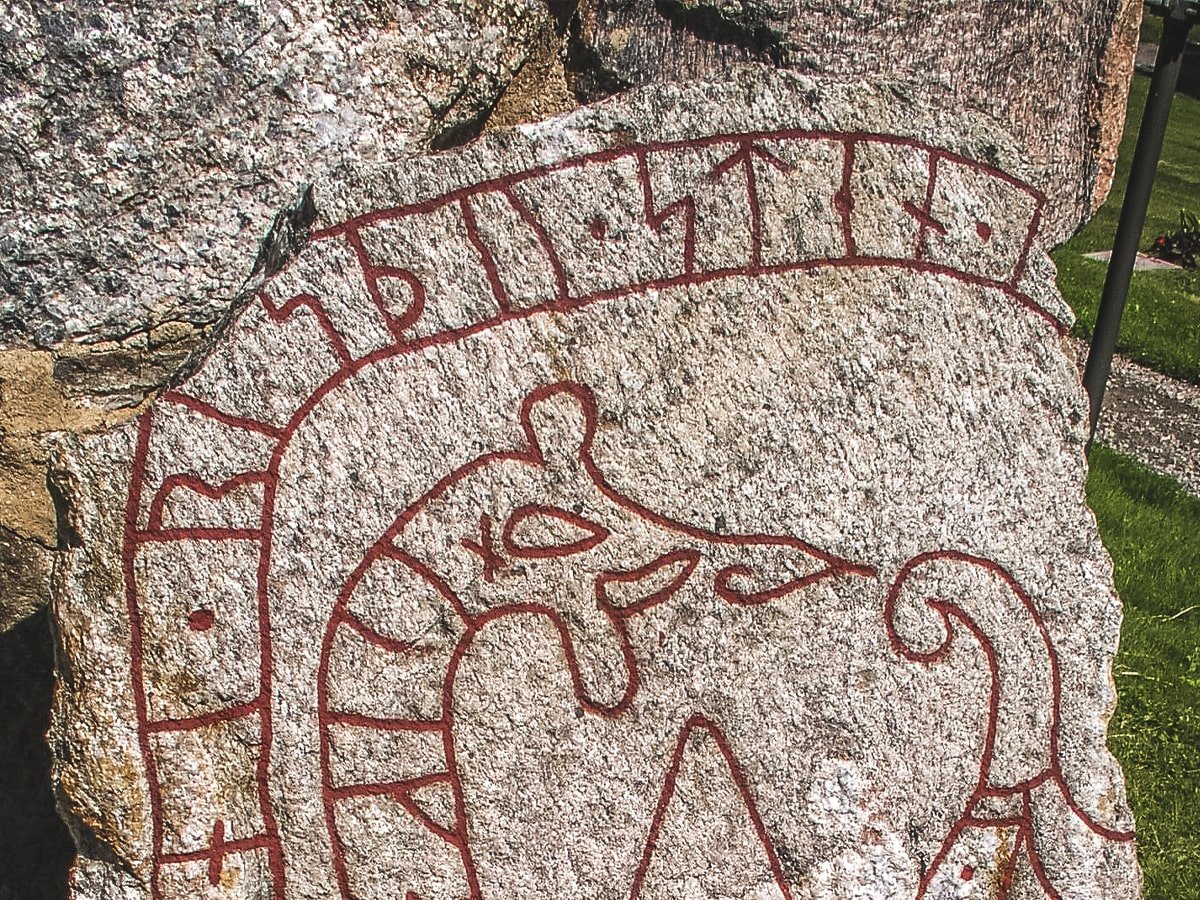
Jörmungandr
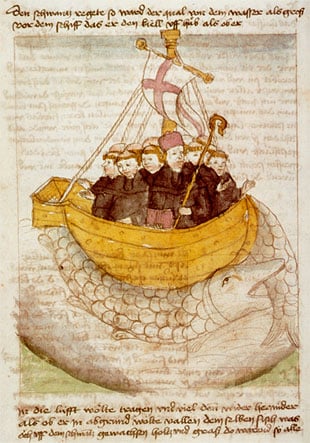
Kraken / Hafgufa
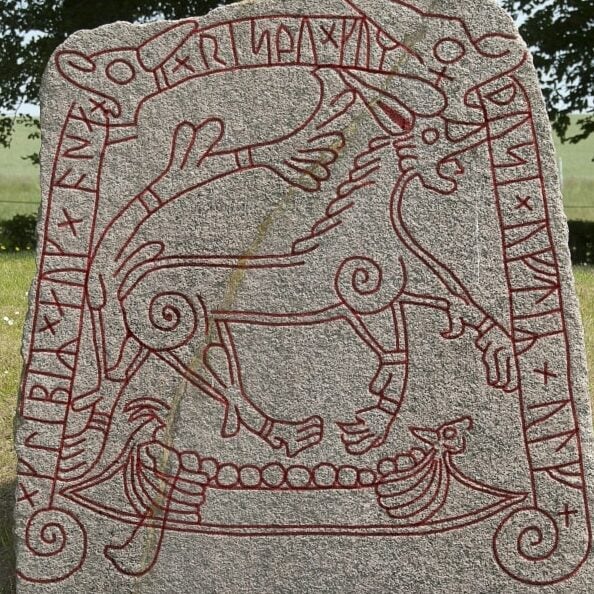
Odin’s head
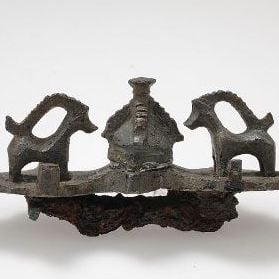
Tanngrisnir and Tanngnjóstr
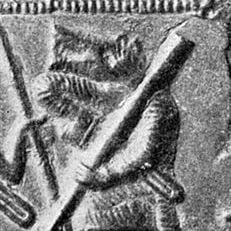
Bear’s Head
Those are a few of the most famous Viking Age symbols we’ve found so far, but there are of course countless more depicted on all the runestones, jewelry, weapons, armor, and other objects from the Viking Age.
If all you’re interested in are historically accurate Norse symbols and runes, this is a good place to conclude your reading.
For those who are interested in finding out more about symbols that are not actually linked to Vikings and the Norse culture, but are commonly referred to as such anyway, let’s keep going to the murkier waters of Norse symbolism: the ahistorical symbols .
There are a whole bunch of symbols in use today that are assumed to be linked to the Vikings, but in reality have not been seen on any item found from the Viking age.
In some cases they’re mentioned in the sagas but never pictured anywhere, and in some cases they have just been popularized by pop culture or celebrities for no good reason.
They may be designed in a style befitting of the era, and they sure look cool — but you should know that there is very little that points to the symbols below actually being used by the Norse people who came from Scandinavia during the Viking age.
Nonetheless, here are some of the more popular symbols, or Icelandic staves as they technically are:
Herðslustafir
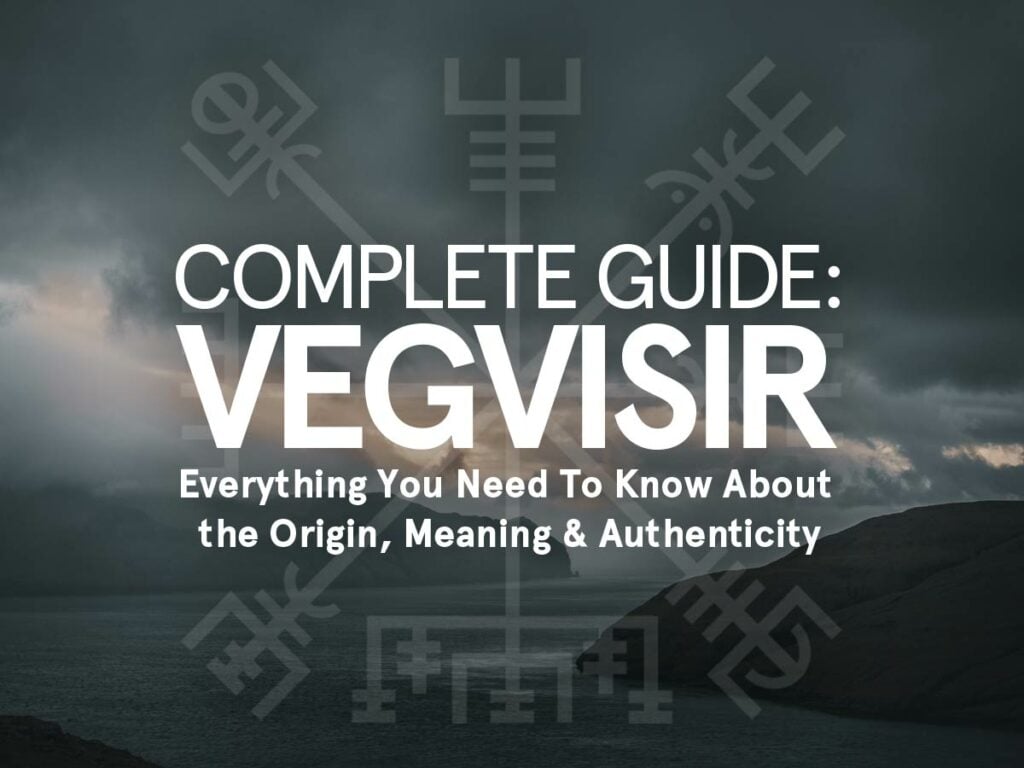
Vegvisir: A Complete Guide (Origins, Meaning & Accuracy)
Few symbols produce as much controversy within the Old Norse community as the one we call Vegvisir (“Wayfinder”). Historians hate it, and tattoo artists love it. Why? Well mostly because we can’t really connect it with the Vikings that so many people want to connect it to, and probably because it looks and sounds really intriguing. Read Article Now
If you want to learn more about why these symbols may not date back to or be linked to the Viking Age, here’s Jackson Crawford’s (Old Norse specialist with a Ph.D. in Scandinavian Studies) very informative takes on the Ægishjalmur and Vegvísir respectively:
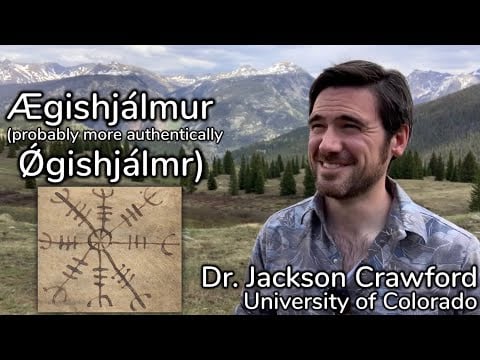
Dr. Crawford taught courses in Norse language, myth, and sagas at UCLA, UC Berkeley, and University of Colorado over the years 2011-2020, and is currently on a mission to teach full-time through YouTube & Patreon.
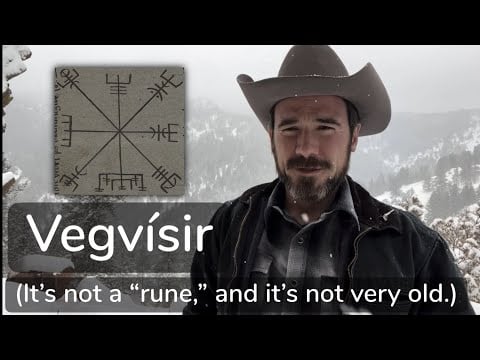
His videos are always informative, based on actual evidence, very thorough, and well worth a watch if you’re interested in the Old Norse world.
More Ahistorical Symbols: Rudolphs Koch’s Symbols in The Book of Signs
German typographer Rudolph Koch published a book in 1930 with 493 classified and documented illustrations – collected, drawn, and explained by himself.
Koch doesn’t really provide any sources for these symbols, but he does include most of the Younger Futhark runes, and somehow attributes the symbols below to either Nordic, Pagan, or Germanic origins:
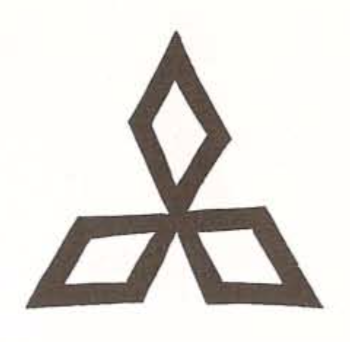
Sunwheel / The Cross of Wotan
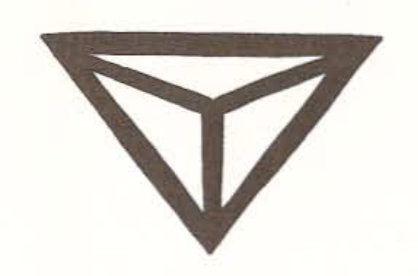
The Dragon’s Eye
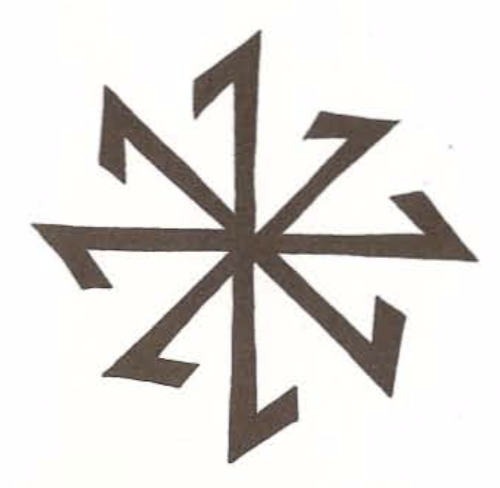
Eight-angled figure
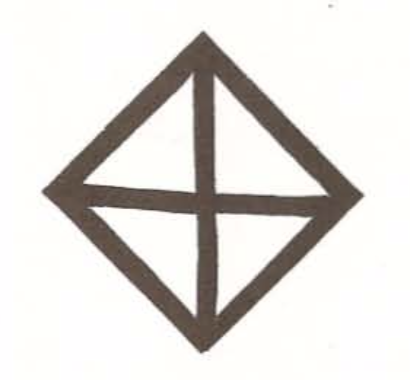
The Eye of Fire
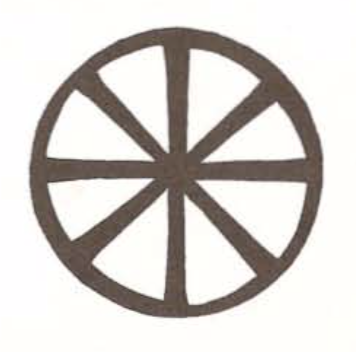
The Eight-spoked Wheel
None of these symbols have been found to have any type of connection to the Norse people of Scandinavia, nor even the Germanic people of Iron Age Europe, and to illustrate this we can look at how vaguely Koch describes his sources:
On many of the signs illustrated in this book the Nordic influence can be clearly traced, but the basic forms, with their wealth of significance and symbolism, undoubtedly take us back to the dim, remote and unfathomed ages of Mankind in the far Eastern countries of this World. Rudolph Koch, The Book of Signs p. 104
In other words, take these meanings with a grain of salt (to say the least)!
By the way, if you're looking for some historically accurate viking apparel and wall art, I've designed a large collection of Norse wall art and apparel based on and inspired by actual archeological finds from Viking Age Scandinavia.
Shop Authentic Norse + Nordic Decor & Apparel
Premium museum-quality prints, metal wall art, t-shirts, sweatshirts, mugs and more — sent right to your doorstep with free shipping worldwide.

https://www.raa.se/kulturarv/runor-och-runstenar/att-lasa-runor-och-runinskrifter/
https://books.google.com/books/about/Runes_and_Roman_Letters_in_Anglo_Saxon_M.html?id=KQ5EDQAAQBAJ
http://www.e-codices.unifr.ch/en/csg/0878/1
https://www.vikingeskibsmuseet.dk/en/professions/education/viking-age-people/runes
https://www.raa.se/kulturarv/runor-och-runstenar/digitala-sveriges-runinskrifter/
https://litteraturbanken.se/presentationer/specialomraden/RunornasLitteratur.html
https://manuscript.ku.dk/manuscript_types/law_manuscripts/
https://books.google.com/books/about/The_Book_of_Signs.html?id=dsuuKUag8EkC&redir_esc=y
https://jacksonwcrawford.com/list-of-videos/
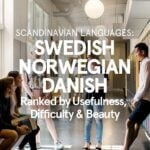
Want to stay in touch with the Nordics?
Subscribe to our newsletter to get the latest Nordic resources, insights, tips, hidden gems, and much more.
By Karl Andersson
As a native Swede with a Finnish mother, Karl identifies as both Nordic and Scandinavian. He left Sweden at 19 to explore the world, and stayed abroad for almost 8 years—during which he backpacked, worked every job there was, earned a degree from UC Berkeley, and met the future mother of his children. He ultimately returned to his native Malmö with his love, where they now have 3 Swedish-American boys eager to explore the world.
15 comments
Hi Karl, I am curious about the following symbol: it looks like an arrow pointing upward, with a leaflike body drawn over the arrow and a bird head on the top where the arrow head would be. It comes up if you google norse friendship symbol. Do you have any ideas around this one? Cheers, Christina
Hi Christina!
I haven’t seen that symbol but it looks really cool. I believe it’s a combination of 4 different symbols illustrated by an Estonian clothing/accessory brand:
https://www.instagram.com/p/B2Z8YJvHolc/ https://valhyr.com/pages/about-us
I really like the look of their symbols, but they aren’t necessarily all based on historical symbols (though certainly inspired by Norse rune art, and really nice too!).
Hi Karl, I’ve seen images of the “protects against poison” apparently a Norse symbol flying around the internet but can’t find any history behind it, wondering if you have any info on the symbol? It’s a long jagged X. Best Johan
Thanks for all this information. It will take me a while to digest it. I heard about runes as a divination tool a couple of decades ago, but it never occurred to me they were alphabets. My mom’s side of the family is from Finland and came to the Michigan and Wisconsin area of the US in the late 1800’s. I don’t know if there is a family connection with countries near Finland. I never learned how to “divine” with runes but I like the feel of them in my hands for some reason. Your information on the history of runes makes me wonder.
Thanks for reading Liz!
Finland certainly has a connection to the Norse runes, as Norsemen and their ancestors have settled on the coast of Finland since the Bronze Age. Whole runestones have been found off the coast of Finland as well, and it’s clear that there was a steady flow of Vikings heading east to Gardarike via Finland.
You can read more here about Finnish roots here: https://nordicperspective.com/facts/finnish-heritage-origin-of-finns
Just one question, how is the correct way for the runes to interact with, i mean, is there a way to elaborate a word or a bigger symbol including some of them? Are there some rules about it?
The only rules regarding rune usage would likely be to either:
A) Use them as sounds (such as our modern-day letters in the alphabet)
B) Use them to represent their meaning (such as ᚦ, “Thurs”, being connected to the Jötunns, Frost Giants, and the Æsir Thor, who you might be familiar with)
Ultimately we don’t know exactly how the Old Norse people used the runes other than the aforementioned uses, so it’s possible that they used them in other ways too, especially as they considered them to hold magical powers in some cases (a specific magic they called “Seidr”).
If you have any more specific questions just let me know!
It’s so odd how Rudolph Kuch basically wrote a bunch of Norse/viking fanfiction and tried to pass it off as fact. He should have written fiction instead!
He did have a very active imagination, that’s for sure!
In general, it’s pretty common that people take liberties in interpreting old symbols and especially their meanings. Just google “Viking symbols” and one of the most commonly seen ones is the Vegvísir, which is not a symbols used by the Vikings as far as we know and wasn’t even documented or inscribed anywhere until 800 years after the Viking Age ended.
So yeah… people in general tend to have active imaginations. 🙂
Curious I have seen some runes over layer into others is that something that was historically used and if so how would that be done?
- Pingback: Order = Love = K'OS - Morph & Windy
Karl I’m looking for a symbol I can use for Christmas. I’m creating a logo for a fan of the Celts and Vikings and wondering where I can find such and element for usage. Thank you in advance.
Dear Karl, I’m looking for possible connections between scythian and celtic/germanic art. I’m sure, you came upon the beautifully designed golden items of the scythian culture. The way, creatural figures merge into tribals. So, since European people seem to be derived from pontic steppe people genetically, do you think, that also European ancient art could be connected to it?
Very interesting theory! It seems likely that at least parts of human culture would travel with the migrating humans as they made their way north, but I haven’t really looked into Scythian art at all so not sure how feasible it would be in the end. Let me know if you find anything of interest in your studies!
- Pingback: read more
Leave a comment Cancel reply
Your email address will not be published. Required fields are marked *
Save my name, email, and website in this browser for the next time I comment.

Copenhagen red light district: Where is it, and is it safe?

Scandinavian people traits: Your guide to Scandinavian features

15 creatures from Scandinavian folklore you should know

Which is the best Scandinavian country to live in? Life in Scandinavia…

The Complete Guide to Danish Maximalism: Bold Décor

What is the Vegvisir Symbol? The Viking Compass
Symbols from the Nordic and Viking landscapes have grown increasingly popular in recent years, particularly among jewelry makers and tattoo artists .
Growing interest in Viking lore, inspired by movies, television shows, and books, has sparked a new passion for runes and glyphs that stretches far beyond the borders of Scandinavia.
One particular symbol you may be familiar with, if you’ve watched the show “Vikings,” or seen a Bjork concert, is the “Vegvisir symbol.” Otherwise known as the “Viking Compass,” the Vegvisir symbol is a complex, yet beautiful design, associated with discovery and exploration.
Here’s everything you need to know about the Viking compass.

What is the Vegvisir Symbol? An Introduction
The Vegvisir, known as the Viking, Runic, or Nordic compass, is a complex symbol made up of eight runic “staves.” There are a number of different variations of the design scattered throughout popular culture, but in each one, the symbol features eight crossing lines, with images at the end of each stave.
Some people believe the symbol was used as a kind of compass in the Viking era, as the word “vegvisir” literally means “wayfinder” or “signpost” in Icelandic.
Unfortunately, as we’ll discuss below, it’s difficult to know exactly where the symbol came from, or whether it had anything to do with the Viking culture.
Despite uncertain origins, the Vegvisir has become a popular symbol in both Scandinavia, and around the world, appearing on Vegvisir rings and pendants, in viking-inspired tattoos, and even in video games , such as “Valheim”.
What does the Vegvisir symbol mean?
As mentioned above, the word Vegvisir means “signpost” or “wayfinder”, which is why it’s typically referred to as a viking or Nordic compass.
Tradition says the Norse people once believed wearing a Vegvisir symbol would help to guide them safely to home wherever they went. Some even say the Vikings may have painted these symbols on their ships when exploring the oceans.
Runes are a powerful part of viking mythology, which could be why the Vegvisir is so commonly associated with the Viking community. However, the rune staves in the Vegvisir symbol don’t appear to have any clear meaning.
They may be based on runes such as maðr (ᛘ) or yr (ᛦ), but there are many variations of the symbol which make it difficult to discern their exact purpose. Some people think the shapes on the symbol are intended to simply act as cardinal points, similar to the points a modern compass might have.
Others believe the Vegvisir runes have a deeper inherent meaning connected to spiritually helping human beings “find their way” through life.
The Origins of the Vegvisir Symbol
One of the things that makes the Vegvisir symbol so complex is its uncertain origins. While it’s often referred to as the “Viking compass”, there’s little evidence that the Vikings ever actually used such a symbol themselves. The first recorded description of the Vegvisir comes from the Icelandic “Huld” manuscript, written several hundred years after the Viking age (in 1860).
The manuscript, produced by Geir Vigfússon says that anyone who carries the Vegvisir sign will never lose their way, regardless of storms or bad weather, even if they’re completely lost.
Before this description, there are no known depictions of the Vegvisir in viking history. The symbol hasn’t been found on any ancient runic stones, in cave drawings, or on Viking jewelry.
Interestingly, references to the Vegvisir did appear in another ancient Nordic text, known as the “Galdrabok”. This grimoire details a variety of ancient spells and provides insights into the early notions of magic in the pagan world.
In the Galdrabok, the Vegvisir is also described as a symbol designed to help people find their way. It’s seen as a symbol of protection and guidance, and the book advises drawing the vegvisir in blood on a person’s forehead, to prevent them from getting lost.
This depiction of how to use the Vegvisir symbol has something in common with the Viking symbol of protection, the Aegishjalmur, or the “Helm of Awe”. This could be part of the reason for the confusion around the symbol’s origins.
Was the Vegvisir Ever Used by the Vikings?
It’s difficult to say for certain whether the Vegvisir was used by the Vikings or not.
There’s no documented or archeological proof from the Viking age to support the idea that the symbol was actually used as a Viking compass. However, the information we have about the Vikings is still somewhat limited, despite decades of archeological discovery.
However, the symbol definitely has Nordic origins, and may have held significant meaning for some of the Nordic cultures to emerge after the Vikings, such as the medieval Icelanders. These individuals carried the symbol with them frequently, and wrote about it in books about the pagan arts.
Why is the Vegvisir so Popular Today?
Whether it can be linked to Viking heritage or not, the Vegvisir symbol has certainly become a popular design in recent years. It’s particularly common in tattoo designs chosen by neo-pagans, and fans of pop culture shows like “The Vikings”.
The origins of the design might be a little murky, but the meaning of the symbol still resonates with people throughout the world today. We’re all looking for protection and direction in life, and the Vegvisir is the perfect symbol for that quest.
The Vegvisir Symbol: FAQ
How old is the Vegvisir?
It’s difficult to determine the exact age of the Vegvisir symbol. The first reference to it was found in the Huld manuscript, produced in 1860. However, some people do believe the origins of the symbol date back much further, into the ancient Viking era.

What is Jante’s Law? To really understand Scandinavia, look to Janteloven
How do you pronounce Vegvisir?
The most common way to pronounce the word is “vague-vee-seer”, with a significant amount of stress on the first syllable.
What are Vegvisir tattoos?
Vegvisir tattoos are popular in the modern world, thanks to the impact of pop culture on the Viking and Nordic landscape. A vegvisir tattoo can be produced in a number of different formats, but it’s usually intended to symbolize direction and protection for the wearer.
Bjork, the Icelandic singer, chose to tattoo the symbol on her arm, saying she wanted to ensure she would always find her way safely back to Iceland.
What do the symbols around the Vegvisir mean?
The original symbol depicted in the Huld manuscript is an image featuring eight inter-crossing lines, with different decorative elements at the each of each line. Sometimes the Vegvisir is drawn inside of a ring of symbols, or surrounded by a circle. However, it’s uncertain what the symbols actually mean.
What is Vegvisir jewelry?
Alongside Vegvisir tattoos, vegvisir jewelry is also relatively common in the modern world. The most popular item is the Vegvisir ring, which is usually made from silver, and features the symbol engraved on the top of the piece.
What is the difference between Vegvisir and the Helm of Awe?
Both Vegvisir and the Helm of Awe share an eight-spoke shape. However, the Helm of Awe has less variety in terms of rune designs on the end of the staves. The Helm of Awe was also intended to protect the wearer by striking fear into the hearts of enemies, rather than guiding them back home.
Scandification: Discovering Scandinavia.

Scandification explores and celebrates the magic of Scandinavia. Stay tuned and we’ll bring the essence of Scandinavia to you.
Advertising enquiries
Scandification explores and celebrates the magic of Scandinavia. To advertise your brand to a global audience, contact our advertising team below.
[email protected]
Subscribe Now
I consent to the privacy policy and terms and conditions .


The truth behind the Vegvisir symbol
Viking symbols and ancient Norse mythology are most definitely on trend at the moment, both for tattoos, on jewellery and in the movies.
But do you know your Vegvisir symbol from your Valknut? And is the Vegvisir even a Viking symbol at all?
Read on to find out all about the Vegvisir symbol, its history and what it means.
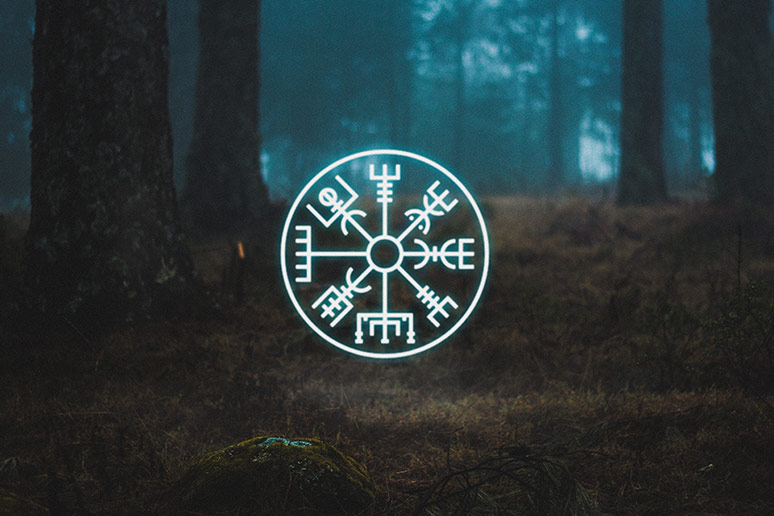
What is the Vegvisir symbol?
The Vegvisir is traditionally thought of as an ancient Norse symbol that is also known as the Viking compass.
The symbol is made up of eight Viking rune staves radiating out in a circle from a central point.
What does the Vegvisir symbol mean?
The word Vegvisir means “way finder” or “signpost” in Icelandic and the Vegvisir symbol is supposed to give guidance and protection.
Tradition has it that the ancient Norse people believed that wearing a Vegvisir symbol would help them to find their way back home safely, and Viking ships were thought to bear the Vegvisir to ensure a successful homecoming.
What’s the history of the symbol?
Today, the Vegvisir is closely associated with the Vikings and the ancient Norse people.
However, the first recorded depiction and description of it is in the Icelandic Huld Manuscript, which was written in 1860 – several hundred years after the Viking age.
The manuscript was written in Icelandic by Geir Vigfússon, and states “If this sign, called the Vegvisir (way-shower, or way pointer), is carried, one will never lose one’s way in storms or bad weather, even when the way is not known”.
There are no known depictions of the Vegvisir before this date: the symbol has not been found on any Viking rune stones or cave drawings, nor has any Viking jewellery ever been excavated that depicts it.
Since plenty of other Viking symbols have been found on rune stones and carved into Viking jewellery, it seems unlikely that the Vegvisir was widely used in Viking times.

Is the Vegvisir pagan?
An image similar to the Vegvisir is depicted in a 15th-century English document called Solomon’s Testament in the Harley Manuscript (now part of the British Museum’s collection in London). Some people use this to attach Christian significance to the Vegvisir.
However, the images depicted in Solomon’s Testament look more like the Helm of Awe than the Vegvisir, and similar symbols have never been found in any Christian churches or other religious documents, so it seems unlikely that it has a Christian origin.
Neo-pagan groups (like Norse pagans ) also claim the Vegvisir as a popular symbol, while others attach a magical mysticism to it.
So how old is the Vegvisir?
If you believe that the Vegvisir is indeed a true ancient Norse symbol and that it dates from the Viking era (around 800–1066), that would make it between 1400 and 1200 years old.
If, however – as is much more likely – you date it from its first published mention in Vigfússon’s Huld manuscript, it’s a mere 162 years old!
Vegvisir pronounciation
The most common way of pronouncing Vegvisir is “ vague vee seer ”, with the stress on the first syllable. To hear some real-life examples of the word being pronounced, check out the video below.
Vegvisir tattoos
Vegvisir tattoos are incredibly popular at the moment, perhaps because of the influence of the Marvel superhero films and the Vikings TV series.
It could also be because the Vegvisir has a simple, stylish graphic image that looks good as a tattoo, or perhaps because of its significance of endowing protection and a safe homecoming on the wearer.
The Icelandic singer/songwriter Bjork has said that she chose the Vegvisir as a tattoo on her arm so that she would always be able to find her way safely back to Iceland.

Some people opt for more elaborate Viking-influenced tattoos, such the Yggdrasil Vegvisir tattoo, that combines two of the most popular Norse symbols, the Vegvisir and the Yggdrasil (or tree of life) symbol.
For more on popular Norse tattoos, and their meanings, check out our guide to Nordic and Viking tattoos , with examples and inspiration.
How to draw a Vegvisir
Possibly one of the reasons why the Vegvisir is such a popular graphic for a tattoo is that its standout design is fairly simple but stylish and it works just as well as a small discreet ankle tattoo or a large full-back image.
The basic Vegvisir is made up of eight staves that radiate out from a central circle. At the end of these staves is a combination of lines that make up a Runic symbol, each one slightly different.
For a detailed guide on how to draw a Vegvisir, check out this clip below.
What do the symbols in and around the Vegvisir mean?
The original Vegvisir as depicted in the Huld manuscript is the simple symbol with the four diagonal staves slightly longer so that they fit within a square outline.
Sometimes, however, the Vegvisir is drawn inside a ring of symbols that surrounds the central image, with the eight staves all the same length so that they fit within the circle.
So, what does it say around the Vegvisir?
Since the runes in the circle around the Vegvisir are not in Huld’s original design there is no right or wrong way to draw them.
Sometimes they are shown as simply the Runic alphabet in a circle around the symbol, sometimes they are written as the phrase “not all who wander are lost”.
But, the simple answer is that there is no correct way to draw the surrounding runes and you can interpret them as you will!
What is a Vegvisir ring?
The popular Vegvisir ring, often made from silver such as this one , is a ring with the Vegvisir symbol engraved on it.
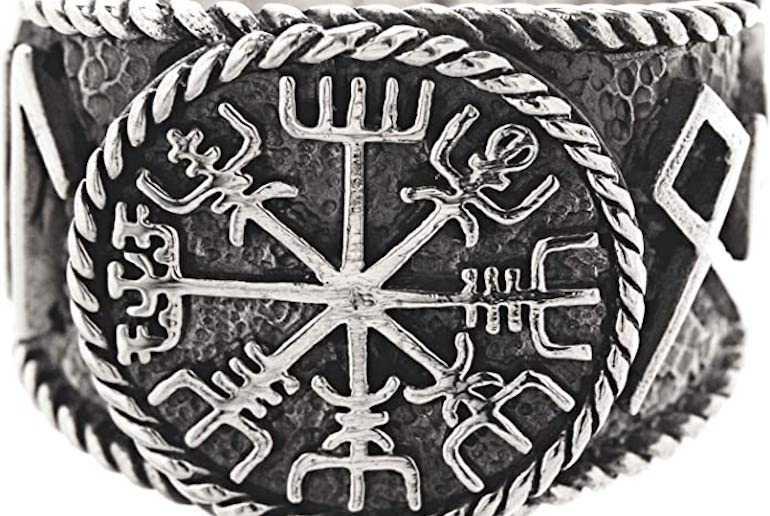
Some people have one as their wedding ring, since the Vegvisir symbol is supposed to give protection and bring the wearer home safely. There are even Viking bracelets featuring the symbol .
For more on Viking weddings and their traditions, see our post on Viking weddings .
Famous Vikings you should know about Rune translator: see your name in runes The coolest craziest Viking hairstyles Nordic and Viking tattoos – examples and inspiration Cool Viking names and their meanings

Camping in Finland: the ultimate guide
You may also like.

Why you really should try the Scandinavian sleep method

Icelandic girl names – the best girls’ names from Iceland
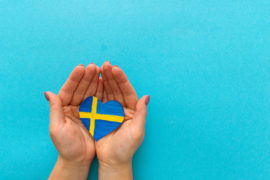
How to say ‘I Love You’ in Swedish (and other romantic phrases)
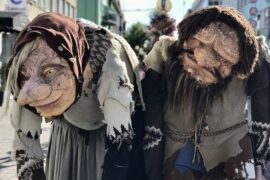
Scandinavian trolls: myths and legends explained
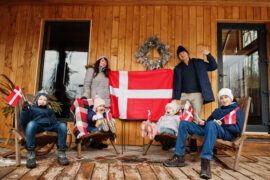
Where are Danish people from?
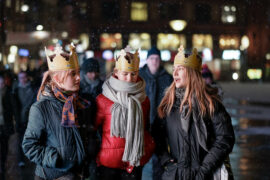

Danish girl names: the best female names from Denmark
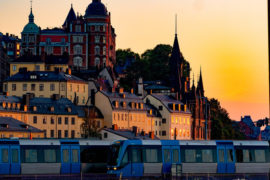
Is Sweden socialist?
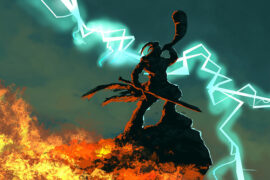
Heimdall: a guide to Norse mythology’s ‘watchman’
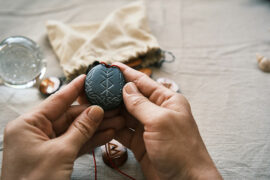
Viking runes revealed: what they really mean
Get the Routes North newsletter delivered once a month. No spam.

Nordic (Viking) Symbols – A Comprehensive List
Table of Contents
Jörmungandr , helm of awe, web of wyrd, viking longships, odal rune (othala).
The Nordic cultures and peoples have brought us some of the most colorful and unique myths and symbols we’ve seen. They’ve inspired lots of later art and religions and have become steeped in our pop-culture. While not usually thought of as philosophers, the Norse had a unique outlook on life and the world which is vividly represented by their runes and mythical symbols and figures.
Before we begin, it’s important to distinguish between Norse and Viking . Norse and Viking both refer to the same Germanic people, who spoke Old Norse and settled in Scandinavia. However, while Norse refers to the people in general, Viking refers to the Norsemen who were seafarers and warriors, and left their homelands to colonize and raid other lands.

Many of the symbols listed below are still used in a variety of ways, including in logos, jewelry, decorative items, fashion and pop culture.
The Valknut is a geometrically intriguing symbol with a rather mysterious significance. Even the term “Valknut” is a contemporary name that was given to these three interlocking triangles, as the original name of the symbol is unknown.
As best as historians have managed to discern, the Valknut was used to represent the Norse and Viking warriors fallen in battle. The symbol was often used on burial memorials, on warriors’ shields and armor, and was also used in relation to Odin, the All-Father god who was also responsible for accepting the fallen warriors into Valhalla.
Overall, the Valknut is believed to symbolize fallen soldiers and a warrior’s death. As such, it’s a popular symbol of strength, bravery, fearlessness and battling evil.

Also known as the Trinity Knot , the Triquetra symbol is comprised of three interlocking arcs with no beginning or end. In Norse culture, the Triquetra symbolized the eternal spiritual life which was also believed to have no beginning or end.
While the symbol was widespread through Nordic cultures and is quite similar to other Norse symbols such as the Valknut in its design, the Triquetra is believed to be a Celtic symbol originally. It’s likely that the Norse incorporated it into their own culture from the Celts after Viking raiders s began integrating with the Celtic people. The Triquetra was later adopted by Christianity where it was used to represent the Holy Trinity.
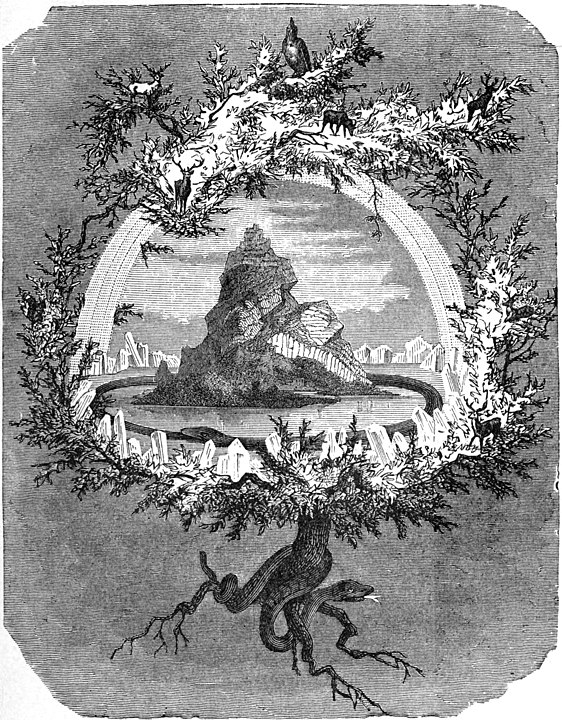
The Tree of Life or the World Tree, Yggdrasil is a cosmic tree in Norse mythology that is believed to connect the nine different realms or worlds together. From its branches to its roots, Yggdrasil was believed to connect Valhalla, Midgard (or Earth), Asgard, Hel, Svartalfheim, and the other realms. It was also thought to be inhabited by various creatures and monsters. Simply put, Yggdrasil symbolized the universe for the Nordic people. It’s one of the most important symbols of Norse mythology.
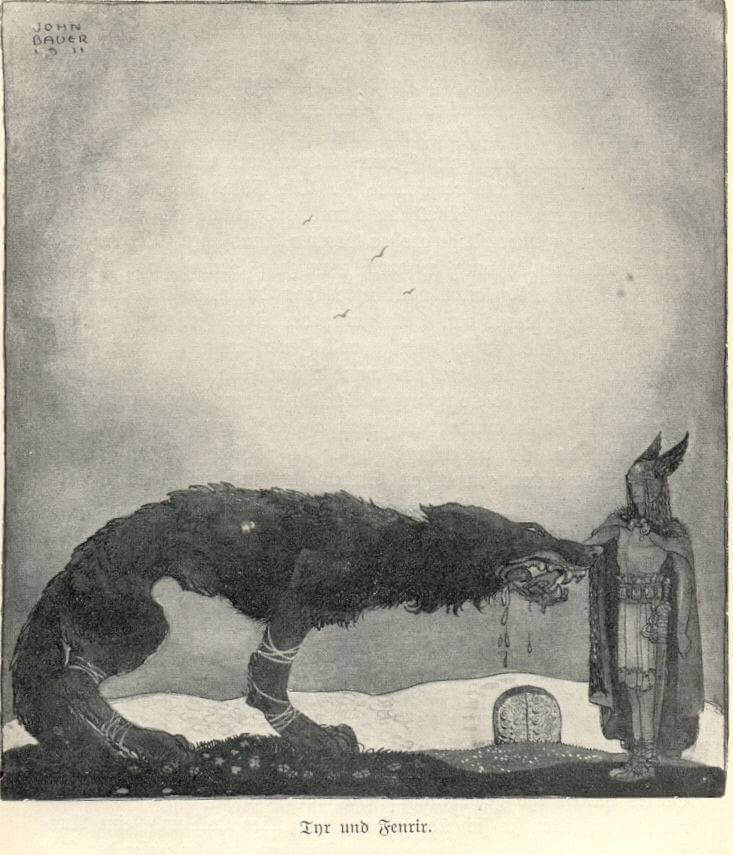
The Fenrir wolf in Norse myths is the son of the god Loki and the giantess Angrboða . His siblings were also the World serpent Jörmungandr and the goddess Hel. All three of them had their roles to play in Ragnarok, the Norse “End of days”, an apocalyptic event where the gods and all the heroes of Midgard would be defeated and the universe would begin again.
Fenrir’s role in Ragnarok was quite special as he was prophecized to kill the All-Father god Odin for chaining him to a rock for most of Fenrir’s life. Despite that, however, Fenrir is not so much a symbol of evil but rather a symbol of strength, retribution, ferocity, and destiny, as the Nordic people believed that what is to be will be . In modern days, the Fenrir wolf has been the template of countless literary wolfs and monsters and is still widely used as a symbol of strength and power.
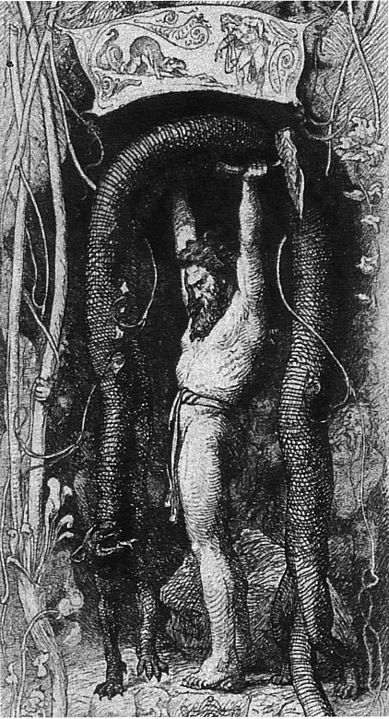
Jörmungandr , also known as the Midgard serpent or the Sea serpent , was a giant sea snake or dragon in Norse mythology and a child of the god Loki and the giantess Angrboða. The serpent was so large that it could encircle the entire world with its body and was usually portrayed biting its own tail. Jörmungandr was tossed into the seas upon its birth by the gods and was also prophecized to signal the beginning of Ragnarok, which would begin as soon as the serpent released its own tail.
During Ragnarok, Jörmungandr and Thor were meant to battle and kill each other while the world around them was ending. Because of its portrayal as a serpent circling around the world, Jörmungandr is quite similar to the Ouroboros myth as a symbol of life’s cyclical nature and the beginning and the end always being connected.
Jörmungandr is one of the two most famous dragons in Norse mythology together with Níðhöggr who was believed to live in the roots of the World tree and gnaw at them, slowly deteriorating the foundation of the world. While Níðhöggr is typically viewed as evil, however, Jörmungandr is traditionally viewed as just a vessel of destiny and inevitability.
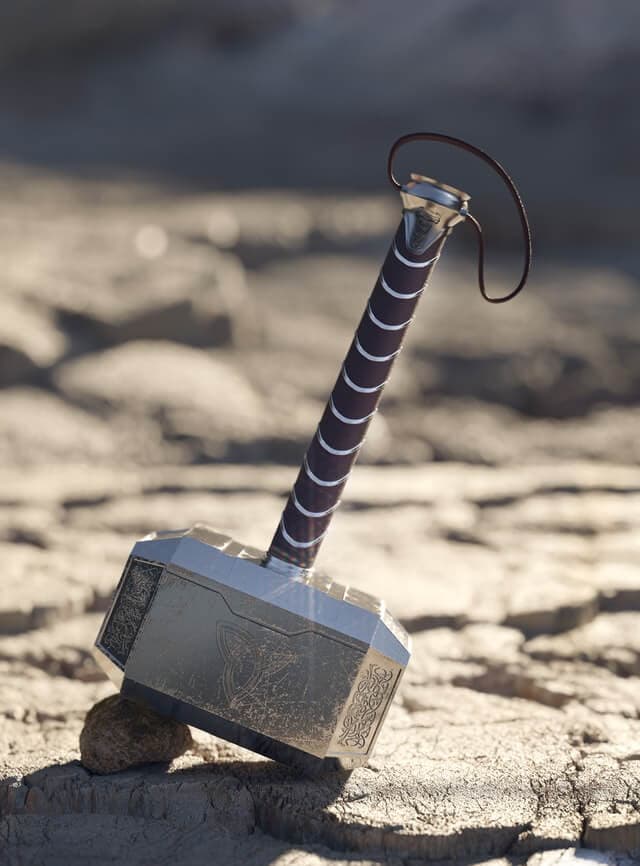
Mjolnir, or Mjölnir , is a very well-known symbol and mythical artifact today, largely thanks to modern pop-culture spin-offs of Nordic myths. In all its version, Mjolnir is the magical hammer of the Thunder god Thor, crafted by the dwarven blacksmiths in Svartalfheim. In Nordic legends, the hammer was created by the request of no other but the god of mischief Loki.
Naturally, Mjolnir is viewed as a symbol of strength and victory as it belonged to one of the most powerful gods in Norse mythology. It was also a symbol of fertility, however, as Thor was the patron god of farmers. Because of this, Mjolnir pendants were also used in wedding ceremonies.
Gungnir, also known as Odin’s Spear, is one of the most famous weapons in Norse mythology, just a step behind Thor’s hammer Mjolnir. In Norse myths, however, Gungnir was equally iconic if not more so. The mighty spear of the All-Father god Odin, Gungnir was crafted by the sons of Invaldi, a pair of dwarven blacksmiths in Svartalfheim. Gungnir was a magic spear that never missed its target and has become a symbol of courage, inspiration, skill, and wisdom.
One of the most famous myths of Gungnir and Odin was that of Odin’s sacrifice at Yggdrasil. In that myth, the All-Father stabbed himself through the chest with Gungnir and then hanged himself from the World tree for nine days and nights in order to order achieve wisdom and knowledge.
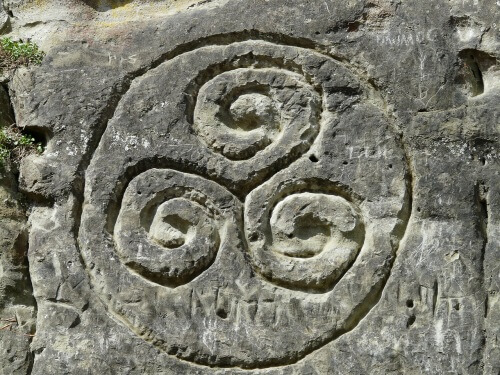
Often referred to as The Horns of Odin , the Triskele or the Triskelion is comprised of three interlocking horns.
Similar in its design to the valknut and the triquetra, the triskele also has a rather unclear meaning. It’s believed that it’s connected to Odin stealing the Mead of Poetry in Norse legends and so the horns are typically used as a symbol of Odin. The horns of the Triskele do have their individual names too – Óðrœrir, Boðn, and Són. The Triskele has become very significant in the Asatru faith and is typically used to symbolize the following of the Old Norse Ways.
Like the Triquetra, the Triskele is also associated with Celtic culture, and is believed to have originated in Celtic regions over 5000 years ago.

Also known as the Ægishjálmr, the Helm of Awe may look like a snowflake but it’s an ancient Icelandic symbol of victory and protection. The Helm of Awe was used in multiple Eddic poems and was worn by both warriors and even dragons. Some interpret the symbol to be an actual physical artifact that an unnamed viking wore in battle while others think it was a magical spell that cast an invisible sphere of protection around the warrior. Either way, today the symbol is often used on rings, earrings, and pendants as a protection charm.
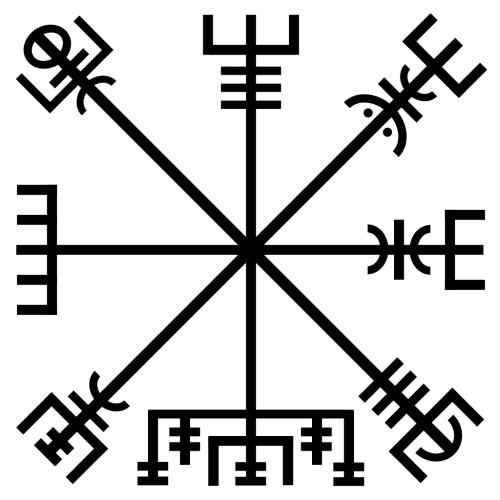
The Vegvesir is another Icelandic symbol believed to be a navigational tool, somewhat like a magical compass. The term Vegvisir literally means That Which Shows the Way and was used as a visual spell of protection against getting lost. It was mostly used at sea by Viking raiders and traders who often had to travel through the stormy waters of the Nordic Seas and the North Atlantic.
The Vegvesir wasn’t an actual physical compass – the Vikings used to navigate by the night sky’s stars instead. Some believe that the Vegvisir was inspired by the sunstone, a navigational tool made using a piece of crystal known as Iceland spar. As a symbol, however, the Vegvesir was often carved into the Viking longboats or on medallions and clothes. It symbolizes guidance, direction, stability and finding one’s way back.
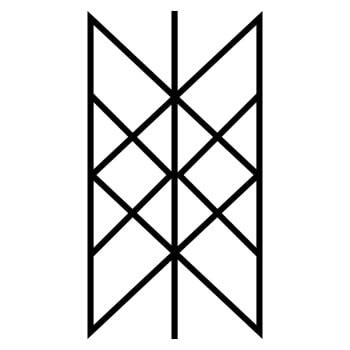
The Nordic people were staunch believers in fate and destiny. They were sure that there’s only one way the world’s history would turn out and that we all have a role to play in it. Instead of trying to change fate, it was every man and woman’s duty to fulfill their destiny as best and as honorably as they could, even if that destiny was to be grim.
This belief is best represented by the Web of Wyrd – a great tapestry woven by the three women, or Norns , at the base of the World Tree Yggdrasil. The Web includes nine interlocking lines with 9 being a magic number in Norse mythology. The symbol is believed to represent interconnection, destiny, fate and completion.
The Viking longship boats are one of the many examples of ordinary Nordic items becoming so iconic through time that they’ve turned into instantly recognizable symbols. They had simple and effective but also very easily distinguishable designs, with elevated and curved noses and sails. Through the ages, these longboats had become symbols of the Viking raiders themselves and the terror they brought to people in Britain and the rest of Europe. Today, depictions of the Viking longboats are more a symbol of exploration and Nordic heritage.
This is one of the oldest and most well-known runes of ancient Norse. It comes from the oldest form of the runic alphabets – known as the Elder Futhark. The Odal rune is believed to represent inheritance, persistence and tradition and a strong connection to family. This makes the Odal rune a highly significant symbol with universal applicability.
The Svefnthorn is an intriguing Nordic symbol, believed to have the power to put a person to sleep. The symbol is simple in design, featuring four hooks or harpoons, placed side by side. It occurs in many Norse myths, playing an important role as the device used in making someone fall asleep. It can be argued that the Svefnthorn may have influenced tales such as Sleeping Beauty and Snow White. Today, the Svefnthorn is often viewed as a symbol of relaxation and sleep, with some keeping it as a protective amulet in the bedroom.

This symbol typically features eight arms rotating in either a clockwise or anti-clockwise direction. It’s viewed as a version of the ancient Swastika symbol , which holds great symbolism in Eastern cultures but was tainted by the Nazis. The Kolovrat symbolizes the battle between good and evil, as well as concepts such as the cycle of life, truth, power and reincarnation. One modern day interpretation sees the Kolovrat as a symbol of the cross, representing Jesus conquering death.
Wrapping Up
Norse symbols are highly meaningful, representing important concepts of life and bringing the colorful Nordic myths alive. It’s no wonder, then, that these symbols continue to inspire and capture human imagination around the globe.
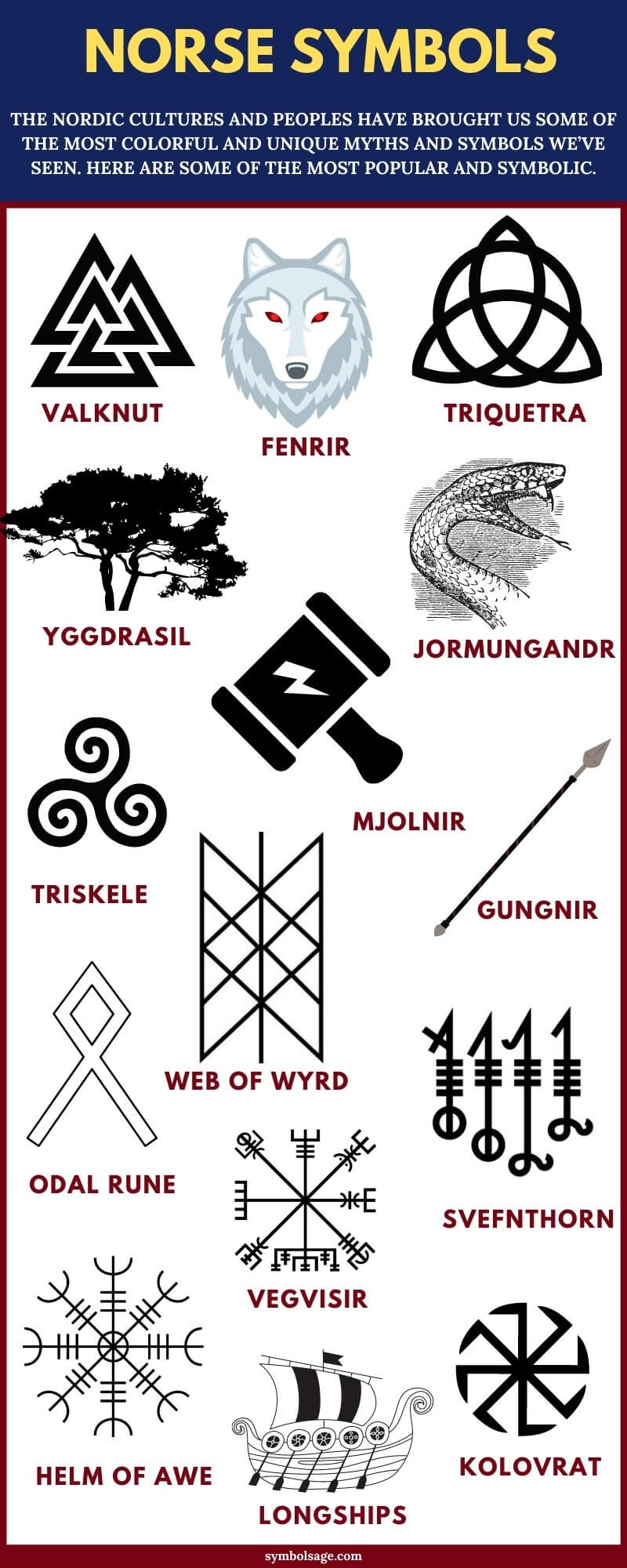
Tags: Norse
Yordan Zhelyazkov is a published fantasy author and an experienced copywriter. While he has degrees in both Creative Writing and Marketing, much of his research and work are focused on history and mythology. He’s been working in the field for years and has amassed a great deal of knowledge on Norse, Greek, Egyptian, Mesoamerican, Japanese mythology, and others.
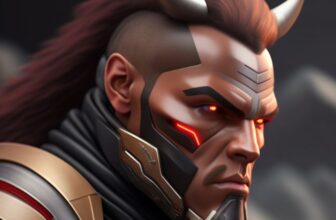
What Is the Berserker Symbol? More Than Just Rage
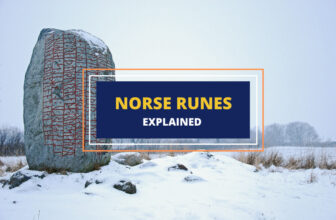
Every Norse Rune Explained: Elder & Younger Futhark
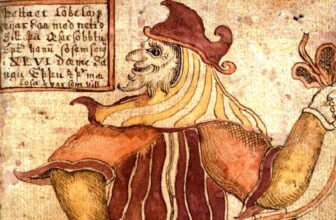
Norse Mythology: Loki, The Trickster God Unveiled
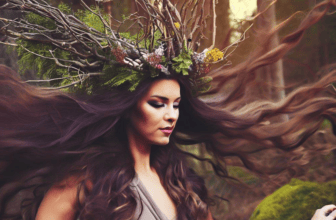
Jörð: Earth Goddess and Mother of Thor

Find Us On Social Media
Quick links.
- Privacy Policy
- Terms of Use
Latest Posts
- The Philosopher’s Stone: Myth, Magic, and Immortality
- Metatron: How Is He the Most Powerful Angel of Them All?
- Every Major Pagan Path Explained
- What Were the Eleusinian Mysteries Really About?
© Copyright Symbol Sage, 2024. All Rights Reserved.
- Beard Beads
- Hair Accessories
- Street Clothing
- Historic Clothing
- Drinking Horns
- Decor, Games & More
Viking History
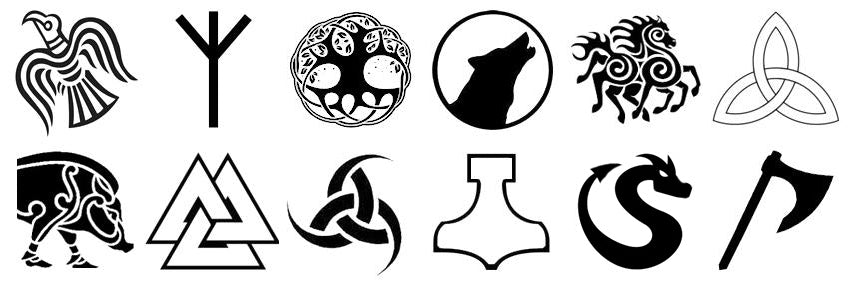
Viking Symbols and Meanings
Posted by sons of vikings on january 14, 2018.
- Viking Symbols
Last updated on 1/30/2023:
A quick note about Viking Symbols It is helpful to understand the true origin and background of each symbol. Some of these iconic images were primarily used before or not until well after the Viking age. As well, the original true meaning of these symbols are simply educated guesses by archaeologists, anthropologists, and historians. A few symbols that are often considered 'Viking' actually have no proof of ever being used during the Viking age, such as the the Elder Futhark runes which most scholars believe were replaced by the Younger Futhark runes around the beginning of the Viking Age. But of course, just as we can still interpret these runes a thousand years later, it makes sense that many of the Vikings were able to do so as well. Also, we would add that many of our customers are not just fans of what happened during "the Viking Age" but the entire history of our Nordic ancestors. Two other very popular symbols known as the ' Viking Compass ' (Vegvisir) and the ' Helm of Awe ' (Ægishjálmur) which were both first found in Icelandic magic books from the 19th century (roughly 800 years after the Viking Age ended). We offer an entire separate article discussing the controversy of their origin. Other examples of non-Viking aged symbols include the Troll Cross (not shown) which is based on later Swedish folklore.
Why include Celtic symbols?
By the end of the Viking age, Vikings were already beginning to blend with the cultures they settled in. Many of the last few generations of these Vikings were often the children of a Celtic mother ...or Slavic, English, etc. The National Museum of Ireland stated the following:
"By the end of the 10th century the Vikings in Ireland had adopted Christianity, and with the fusion of cultures it is often difficult to distinguish between Viking and Irish artifacts at this time."
Article continued below.
Brief Overview of Viking Symbols

Symbols and Motifs

Following is a brief introduction to some common Norse symbols and motifs. The list is not all-inclusive, nor is it meant to be exhaustive but rather just a basic starting point. Remember, a picture is worth a thousand words.
Return to the menu
Runes (Norse Alphabet)

View our collection of: Rune Necklaces Rune Rings Rune Beard Beads Rune Shirts
Valknut (Knot of the Slain)

View our collection of: Valknut Necklaces Valknut Rings Valknut Beard Beads Valknut Drinking Horns
Ægishjálmr (Helm of Awe)

Return to the menu
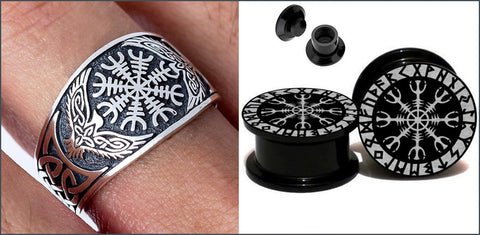
View our collection of: Helm of Awe Necklaces Helm of Awe Rings Helm of Awe Home Decor
Vegvisir (Viking Compass)

View our collection of: Viking Compass Necklaces Viking Compass Rings Viking Compass Home Decor
Triskele (Horns of Odin)

View our collection of: Triskele Necklaces Triskele Rings Triskele Beard Beads
Triquetra (Celtic Knot)

View our collection of: Triquetra Necklaces Triquetra Rings Triquetra Earrings

The origin of Mjölnir is found in Skáldskaparmál from Snorri's Edda. Loki made a bet with two dwarves, Brokkr and Sindri (or Eitri) that they could not make something better than the items created by the Sons of Ivaldi (the dwarves who created Odin's spear Gungnir and Freyr's foldable boat skioblaonir). The result was the magical hammer that was then presented to Thor as described in the following:
Then he gave the hammer to Thor, and said that Thor might smite as hard as he desired, whatsoever might be before him, and the hammer would not fail; and if he threw it at anything, it would never miss, and never fly so far as not to return to his hand; and if be desired, he might keep it in his sark, it was so small; but indeed it was a flaw in the hammer that the fore-haft (handle) was somewhat short. — The Prose Edda

Return to the menu

View our collection of: Thor's Hammer Necklaces Thor's Hammer Rings Thor's Hammer Beard Beads Thor's Hammer Earrings

View our collection of: Viking Axe Necklaces
Yggdrasil (Tree of Life or World Tree)

As Dan McCoy of Norse-mythology.org points out, “Yggdrasil and the Well of Urd weren’t thought of as existing in a single physical location, but rather dwell within the invisible heart of anything and everything.” Yggdrasil is a distinctive and unique Norse-Germanic concept; but at the same time, it is similar conceptually to other “trees of life” in ancient shamanism and other religions. As a symbol, Yggdrasil represents the cosmos, the relationship between time and destiny, harmony, the cycles of creation, and the essence of nature.

View our collection of: Tree of Life Necklaces Tree of Life Rings Tree of Life Earrings Tree of LIfe Home Decor

View our collection of: Viking Ship Necklaces Viking Ship Rings Viking Ship T-Shirts Viking Ship Home Decor
Web of Wyrd

View our collection of: Gungnir Items

View our collection of: Raven Necklaces Raven Bracelets Raven Rings Raven Earrings

View our collection of: Wolf Necklaces Wolf Bracelets Wolf Rings Wolf Earrings Wolf T-Shirts
8-Legged Horse

View our collection of: Sleipnir Related Items
Dragons (and Serpents)

Though the Norse did not equate dragons with the Devil, as Christians do (remember, the Norse did not have a Devil), dragons like Fáfnir can sometimes represent spiritual corruption or the darker side of human nature. Most of all, dragons embody the destructive phase of the creation-destruction cycle. This means that they represent chaos and cataclysm, but also change and renewal.

View our collection of: Dragon Necklaces Dragon Rings Dragon Bracelets
Boars (Nordic and Celtic)

View our collection of: Boar Related Items
Cats, Bears (and other animals)

Text References
- McCoy, D. The Viking Spirit: An Introduction to Norse Mythology and Religion. Columbia. 2016
- McCoy, D. Norse Mythology for Smart People . Norse Mythology Accessed January 9, 2018. Norse-mythology.org
- Zolfagharifard, E. Hammer of Thor' unearthed: Runes on 1,000-year-old amulet solve mystery of why Viking charms were worn for protection. Daily Mail. Published July 1, 2014. Accessed January 9, 2018 http://www.dailymail.co.uk/sciencetech/article-2676386/Hammer-Thor-unearthed-Runes-1-000-year-old-amulet-solve-mystery-Viking-charms-worn-protection.html
- Howell, E. Parallel Universes: Theories and Evidence . Space. Published April 28, 2016. Accessed January 9, 2018. https://www.space.com/32728-parallel-universes.html
- Lonegren, S. Runes: Alphabets of Mystery . Accessed January 9, 2018. http://www.sunnyway.com/runes/runecasting.html
- Hauge, A. The History of the Runes . 2002. Accessed January 9, 2018. http://www.arild-hauge.com/history.htm
- Viking Age Runes. Viking Archeology . Accessed January 9, 2018, http://viking.archeurope.info/index.php?page=runes
- Kernell, M.H. Gotland’s Picture Stones: Bearers of an Enigmatic Legacy . Gotland Museum, 2012. Accessed January 9, 2018, http://uni.hi.is/adalh/files/2013/02/Hildr-Eng.pdf
- Odin’s Horn . Symbolic Dictionary. Accessed January 9, 2018. http://symboldictionary.net/?p=714
- Flowers, S. The Galdrabok: An Icelandic Grimoire. Samuel Wiser, Inc. New York. 1989.
- Briggs, K. (1976). An Encyclopedia of Fairies, Hobgoblins, Brownies, Bogies, and Other Supernatural Creatures . Pantheon Books, New York.
- Lindhall, C., MacNamara, J., & Lindow, J. (2002) Medieval Folklore . Oxford University Press, New York
- Siegfried, K. Odin and the Runes part 2. The Norse Mythology Blog . Published March 26, 2010. Accessed January 11, 2018 http://www.norsemyth.org/2010/03/odin-runes-part-two.html
- Hrafnsmerki - the Raven Banner. Geni . Accessed January 11, 2018 https://www.geni.com/projects/hrafnsmerki-the-Raven-Banner/29520
- Mastgrave, T. Demons, Monsters, and Ghosts, Oh No! Part XIX: Norwegian Dragons. Broken Mirrors. Published January 26, 2012. Accessed January 11, 2018 https://tobiasmastgrave.wordpress.com/tag/norse-dragons/
- About Sleipnir the Eight-Legged Horse. Geni . Accessed January 11, 2018 https://www.geni.com/people/Sleipnir-the-eight-legged-horse/6000000003935159261
- So the Horse has Eight Legs! The Mindful Horse . Published 2014. Accessed January 11, 2018 https://themindfulhorse.wordpress.com/a-mindful-blog/so-the-horse-has-eight-legs/
- Brownworth, L. The Sea Wolves: A History of the Vikings. Crux Publishing, Ltd. United Kingdom. 2014
- Saxo Grammaticus. The Danish History, Book Nine. Circa 12th century. Accessed November 10, 2017. http://www.gutenberg.org/files/1150/1150-h/1150-h.htm
- Saxo Grammaticus. The Danish History, Book Nine. Circa 12th century. Accessed November 10, 2017. http://www.gutenberg.org/files/1150/1150-h/1150-h.htm
- Crawford, J. (2017). The Saga of the Volsungs, with the Saga of Ragnar Lothbrok. Hacket Publishing, Indianapolis.
- Groeneveld, E. (2018, February 19). Freyja. Ancient History Encyclopedia. Retrieved from https://www.ancient.eu/Freyja/
Image References Viking symbols stone - https://www.pinterest.com/pin/500110733594231549/ Rune Stone - https://en.wikipedia.org/wiki/Runestone Yggdrasil - http://www.germanicmythology.com/original/cosmology3.html Valknut - https://norse-mythology.org/symbols/the-valknut/ Helm of Awe - https://norse-mythology.org/symbols/helm-of-awe/ Vegvisir - http://spiritslip.blogspot.com/2013/10/travel-well.html Horns of Odin - http://www.vikingrune.com/2009/01/viking-symbol-three-horns/ Horns of Odin - http://symboldictionary.net/?p=714 Triquetra - https://en.wikipedia.org/wiki/Triquetra Tree of Life - https://spiritualray.com/celtic-tree-of-life-meaning Raven - https://www.pinterest.com/pin/367817494547305175/ Longship Stone - https://en.wikipedia.org/wiki/Hja%C3%B0ningav%C3%ADg Dragon Head Viking Ship - http://www.bbc.co.uk/guides/zy9j2hv Runes Stone - http://www.pbs.org/wgbh/nova/ancient/viking-runes-through-time.html Raven Stone Carving - http://www.odinsvolk.ca/raven.htm Viking Axe Artifact - http://www.shadowedrealm.com/medieval-forum/gallery/image/48-viking-battle-axejpg/ Viking Animals Carving - http://norseandviking.blogspot.com/2011/09/viking-cats-and-kittens-ii.html Dragon Stone - http://users.stlcc.edu/mfuller/NovgorodMetalp.html Sleipnir Carving - https://norse-mythology.org/gods-and-creatures/others/sleipnir/ Bronze Dragon Carving - https://www.pinterest.com/pin/268456827765461653/ Niohoggr - http://mythology.wikia.com/wiki/N%C3%AD%C3%B0h%C3%B6ggr Bronze Ravens with Odin - https://fi.pinterest.com/pin/398709373239383493/ Viking Ship Stone - http://www.bbc.co.uk/schools/primaryhistory/anglo_saxons/anglo-saxons_at_war/teachers_resources.shtml Raven triskele broach - https://www.pinterest.co.uk/pin/384494886917515740/ Raven coin - https://oldcurrencyexchange.com/2016/05/18/irish-coin-daily-silver-penny-of-anlaf-guthfrithsson-hiberno-norse-king-of-northumbria/ Danish mjolnir - https://mikkybobceramics.wordpress.com/2014/10/28/norseviking-artifacts/
About Sons of Vikings
If you appreciate free articles like this, please support us by visiting our online Viking store and follow us on Facebook and Instagram .
Share this article on social media:
← Older Post
Newer post →, quick links.
- Our Warranty
- Viking Newsletter
- Viking History Blog
- Viking Festivals
- Customer Reviews
- Celtic Jewelry
- Privacy Policy
- Viking Coffee
Contact Us:
(757) 652-1366
Storefront: 801 Volvo Parkway Chesapeake, VA 23320
Mailing Address: 1108 Fairway Drive Chesapeake, VA 23320
Sign up to our mailing list
Connect with us.
🚚 Enjoy FREE SHIPPING on all orders over $50!
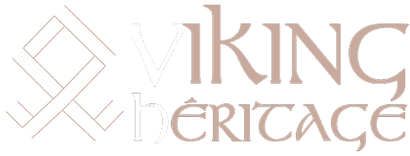
- Bags & Belts
- All Viking Jewelry
- 925 Silver Bracelet
- Mjlonir Necklace
- Beard Beads
- Snake Rings
- Snake Bracelets
- Snake Necklaces
- Dragon Rings
- Dragon Bracelets
- Dragon Necklaces
- Wolf Bracelets
- Wolf Necklaces
- Bedding Sets
- Pillow Cases
- Viking Blanket
- Drinking Horns
- Mugs and Cups
- AED ALL ANG AUD AWG BAM BBD BGN BIF BND BSD CAD CDF CHF CRC CVE CZK DJF DKK DOP DZD EGP ETB EUR FJD GBP GMD GNF GTQ HKD HNL HUF IDR ILS ISK JMD JPY KES KMF KRW KYD LAK LKR MDL MKD MNT MUR MVR NIO NPR NZD PGK PHP PLN QAR RON RSD SAR SBD SEK SGD SHP SLL THB TJS TOP TTD TWD TZS USD VND VUV WST XAF XCD YER
Your Cart is Empty
- $0.00 Subtotal
- Snake Jewelry
- Dragon Jewelry
- Wolf Jewelry
Viking Symbols
May 25, 2022 8 min read Viking Jewelry Viking Symbols 1 Comment
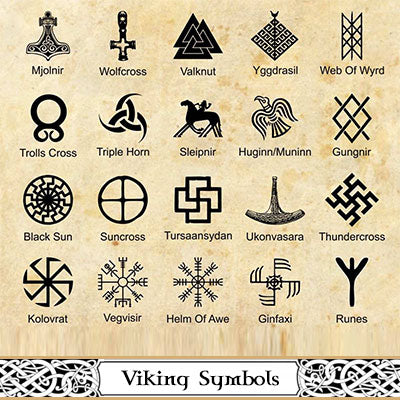
Viking symbols: what do we need to know?
In order to know the present, one must know enough about the past to be able to move forward, as they say. It is in this line of sight that we must stay and inform ourselves about past histories, even if they are not ours. This is a great help for our general culture and is a passion, especially for tourists looking for novelties.
Among the oldest civilizations, the one that has left its mark on the world is by far the Nordic culture and especially its many myths. It has mostly attracted the attention of the public thanks to the symbols of its people, who were called Vikings. The Viking symbols tell very special stories and have very special meanings. In addition, these symbols bring gods and goddesses to the fore, which makes the search for information very exciting and compelling. So what do you need to know that has to do with Viking symbols?
What is the origin of the Viking symbols?

First of all, we need to know where these symbols really come from in order to be able to trace their history properly. As we like to say, the Vikings were barbarians who pillaged and made bloodshed wherever they went. They were largely interested in conquering new lands and riches aboard their great ships. So they were not afraid of death, but rather welcomed it with open arms. Their different symbols were for them the heritage of their multiple gods who inhabited the earth many years ago. The symbols go back centuries with their gods as the main investigators, who are only mythological. But for them these gods were an inescapable truth in the name of which they killed and made human sacrifices, to honor them. It is from there that the symbols took shape and exist in different forms, each with its own distinct meaning.
What is the history of the different Viking symbols?
The symbols being multiple, they cannot all trace a common history. Each one appeared differently with a particularity of its own.
Aegishjalmur

One of the most powerful of all is the Aegishjalmur a rather particular name, it is used to symbolize the protection and the victory over the enemies. It reassured the Viking warriors during the great battles and to recognize it, one could notice eight tridents which composed it. These eight tridents all converge towards the central point, to form a kind of defensive wall against the enemy forces. It was also an association made with the snake and its powers of paralysis, facing its prey. Thanks to this symbol the northern forces felt invulnerable.

Come immediately after one of the most sacred symbols that is Gungnir, because of its belonging to the great god Odin. It is said that Gungnir was the magic spear of Odin made by the dwarves. Its power was due to the fact that it was designed by these blacksmiths who draw their skills from the cosmos. It is also a spear with multiple powers that, once projected, did not stop unless it hit its target precisely. Let us not forget to underline that Gungnir, called the wavering one, was the representation of the supreme power of authority.
Hugin and Munin

Still belonging to the god Odin, we have Hugin and Munin, which represent his two majestic ravens. The mythical stories about them tell us that the ravens were for the god a kind of reporter. They came to report faithfully all that they had heard or seen, which was their primary function. The symbol of these two ravens taught good education, wisdom and intelligence. They are beings with multiple qualities that should not be underestimated.

Of the most formidable and powerful weapons that the Nordic mythology has to present, there is the Mjolnir which represents the hammer of the god Thor who is not unknown. Since his character has been imitated several times in movies and animated cult. Thor being the god of thunder and lightning, he needs his powerful hammer to cause these two phenomena of which he is master. The hammer itself is a weapon of destruction, but was nevertheless used as a symbol of blessing and protection for weddings, births and also funerals. It is a hammer that is very special.

The thorn of sleep, also called Svefnthorn, had the ability to make the opponent fall asleep deeply, so that he could not realize anything when he woke up. It is a symbol that is still unknown to this day, but nevertheless its existence appears in two completely different forms.

One of the symbols with a special connection to Thor's hammer and sun wheel was the Swastiska . Indeed, it is a symbol whose existence was ignored for some time because of the appearance of the Nazis. But its representation of holiness, luck, security and also prosperity has completely taken over.
Triple horn of Odin

In the Nordic culture, drinking horns are sacred objects intended for special rituals. It is from there that takes all the meaning of the triple horn of Odin still called the Triskelion golden horn, which is a symbol representing three drinking horns intertwined. The great feature of these horns is that they are quite sacred, because being associated with the god Odin. Through them, wisdom and inspiration take all their meaning.
Troll Cross

It is said that the Trolls are somewhat supernatural beings because of their deformity. So the symbol of the Troll cross was especially intended for their protection. It diminished the dangers considerably.

The Vikings are known for their sense of adventure and discovery through their travels, so it is not surprising that a symbol exists to guide them. It is the Vegvisir which shows the way when one is in a bad situation. In particular during a storm or any other barrier preventing to find its way. It is a kind of compass that helps in all cases, to find his destination while being safe and sound.

The Vikings were more than warriors, they were great sculptors who did not hesitate to demonstrate their art. On their graves, especially those of the ships, the symbol Valknut was present. This symbol signified a transition from life to death and vice versa, which is where the meaning of the Nordic beliefs came from. Through this symbol, Odin's power of binding and unbinding took shape.

For the Nordic people, the knowledge of the past, present and future are intimately linked. It is within this framework that the Wyrd symbol comes to materialize all that, by maintaining in a firm way this belief. We can therefore say that the law of cause and effect is real and that it is not just imaginary.

The last symbol at the bottom of the list is the Yggdrasil , which is a large tree symbolizing the nine worlds of the cosmos through their union. It has always been said that it is an unusual tree that shelters all kinds of animals. To this tree it has been associated several supernatural beings like the dragon Nidhogg. A mythical giant dragon that would have the habit of gnawing the roots of the tree with the help of other snakes. Moreover in this tree, we witness a quarrel between Nodhogg and an eagle whose name remains unknown. The two despised each other to such an extent that the squirrel Ratatatosk served as an intermediary, reporting the insults to them.
Which animals were symbols in the Nordic culture?
When the knowledge is a little more advanced, one realizes that the preceding symbols were not the only ones which made the composition of the culture, at the Nordic. Very particular mythical animals have largely marked this culture.

The first of the mythical animals that does not go unnoticed, is the giant wolf Fenrir who was the essence of loyalty, protection and also of a superpowerful strength. For it must be said that his power surpassed that of the gods. Indeed, Fenrir is the son of Loki and his wife Argboda, a special being. When he was born, the wolf had in him a superhuman strength that was destructive and had to be controlled through a very special chain. His legend made him very famous because it is said that he was the wolf who killed the god Odin. This was not without punishment, since in his turn the son of the same god took revenge by killing Fenrir. Many warriors wore this wolf as a tattoo, to symbolize their loyalty. It should be noted that the Viking were fervent believers in their gods and did not hesitate to pledge allegiance to their kings and masters.
Gullinbursti

One of the animal symbols that emphasize spirituality is of course the boar, which was considered a spiritual authority. Freya, the goddess of love, and Frey, the god of fertility, had boars as their spirits. On the one hand, Frey's boar, Gullinborsti, still called golden silk, was superior in speed and skills that developed in the water. The dwarves of the meantime had made it with the greatest of care. On the other hand, Freya's boar was named Hildisvini, which means battle pig. This boar symbolizes love, happiness, abundance and peace. The Swedes used it as a symbol of supreme royalty, which meant a lot.

The Nordic mythology, was largely impacted by the snakes. One of the symbols reflecting this is that of the Ouroboros , which meant a continuous return to time. As the symbol can easily reveal, we notice a snake forming a circle that continuously bites its tail without the cycle ending. Etymologically, it has two main meanings: on the one hand the snake king and on the other hand, of course, the snake that bites its own tail. It is through the Ouroboros that any material, physical or spiritual unit truly comes to life. It is a cycle through which the perpetual rebirth from life to death is incarnated.
What is the history of the Viking runes?

Runes are Germanic symbols inscribed on all Viking symbols which are very popular. It is a kind of ancient writing that appeared among the northern Germans in the first place. They help in the communication with the gods in a very special way. Since the gods did not have the possibility to manifest themselves in a physical way to express themselves, it was necessary to know their desire by communicating with them. The runes, still called secret and mystery, were used to solicit the gods and implore their help. Their inscriptions inspired a strong magic, since they were also present on the weapons that it is the axe or the sword of Vikings. The runes originate from the goddess Freyja. They were like oracles that were used in the augury ceremonies to question this or that God on a subject of great importance. The magic that these runes contained was used to predict the outcome of battles and to keep people safe. Viking families used it as a symbol of protection in any situation.
What is the particularity of the Viking runes whether it is tattoos or on a jewel?

The particularity of their inscription in tattoos or on jewels, lies in the fact that they constitute a spiritual protection. Up to now, runes still have the same mythical force, which is why many professionals flock to this jewelry. The other special feature is that the runes provide concrete answers to past, present and future events by way of prediction.
Sonia Elisabeth Portillo
January 15, 2024
Muy interesante esta información. Yo quiero saber que significa una runa en particular.esa que esta en el anillo.
Leave a comment
Comments will be approved before showing up.
Also in viking
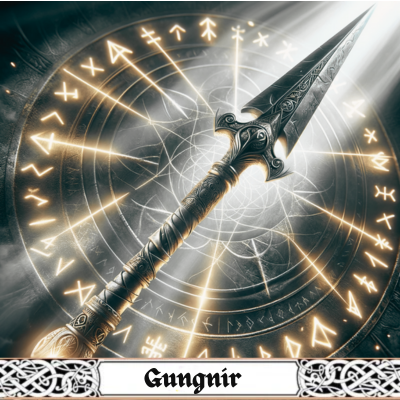
March 01, 2024 5 min read
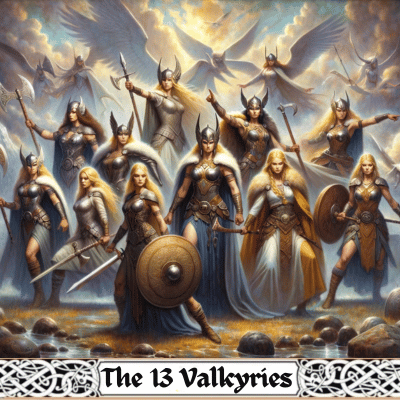
WHO ARE THE 13 VALKYRIES?
December 09, 2023 4 min read
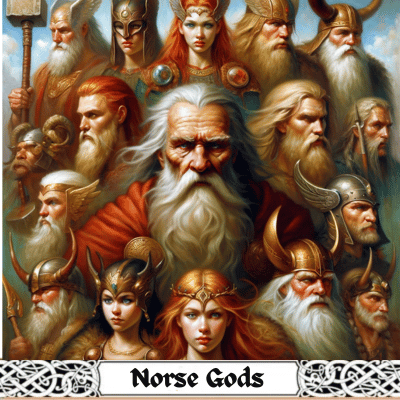
The Norse gods: who are they?
December 03, 2023 6 min read
ENJOY FREE SHIPPING WORLDWIDE!
Viking Symbols: Meanings of all Norse Emblems
Viking culture has been all the rage in recent years.... The adventures of Ragnar, Lagertha and Björn Ironside inspired many to find out more about the meanings and stories behind Viking runes, symbols and emblems. An incredibly fascinating journey lies ahead of you. Let's find out what the symbols tattooed on men's bodies or transformed into a talisman mean and who knows maybe you'll even get a tattoo of one of these yourself.
Like many ancient cultures Viking culture is no exception to having hidden meanings behind symbols, quite the contrary. And even if historians do not always agree that the Vikings tattooed their bodies with them, like so many traces of their lives and teachings, let us return together to the essential Viking symbols ...
source: https://mythologis.com/viking-symbols/
Table of content
- Valknut - Odin's symbol
- The Horn of Odin
- Thor's hammer, Mjolnir
- The Vegvisir - Viking compas
- Helm of Awe - Aegishjalmr
- Gungnir, Odin's Spear
- Hugin & Munin, The Raven
- Yggdrasil - Tree of Life
- The Vikings runes - Futhark
- Svefnthorn Symbol
- Fenrir, The Giant Wolf
- Jormungandr, Norse Dragon/Snake
- Viking Wild Boar, Gullinbursti
- Bear, Berserker Symbol
- The web of Wyrd
- Dragon Longboat
- Triquetra, The Celtic Knot
- Sleipnir, 8-Legged Horse of Odin
1. Valknut, The Viking symbol of Odin

We start our overview of Viking symbols with the Valknut ! Representing 3 intertwined triangles , associated with the God Odin , Valknut is a symbol of fallen knots, or even of warriors killed in combat.
Each of the triangles then symbolizes a kingdom, all intertwined: earth, hell and heaven. Historians have found many Germanic tombs decorated with this symbol. The Vikings, who did not bury their dead, used this symbol to pay tribute to the brave and recognized Nordic warriors!
Throughout the cultures, it is also known as " Heart of Hrunger ".
2. The Horn of Odin, a sacred symbol!

If we look at the culture of the Vikings, we notice the predominant place of Odin, Father of all the Gods. The horn of Odin thus joins the most famous Viking symbols . Used in many rituals, according to ancestral accounts, it actually symbolizes the three projects of Odhroerir , and was particularly found on Scandinavian lands!
Learn More about the horn of Odin here
3. Thor's hammer, Mjolnir

Thor is one of the prized Gods in Viking culture , respected by men and warriors, he was then the symbol of strength and protection . Thus, among the Viking symbols is Thor's hammer, also known as Mjolnir . Most often worn as a talisman, it provides protection to the wearer, a symbol of choice at the heart of the northern heritage!
Here,you can Learn More About Mjolnir, Thor's Hammer
4. The Vegvisir, the viking compass
It is at the heart of Icelandic tradition, and although it is not fully a symbol created by the Vikings, their culture has adopted it, passing through Icelandic lands.
With its intersecting lines and symbols, Vegsivir had a special meaning: we will never lose our way, in storms or bad weather, even if the path is not known ...
Here,you can Learn More the Vegvisir Symbol
5. Aegishjalmr/Aegishjalmur, The Helm of Awe
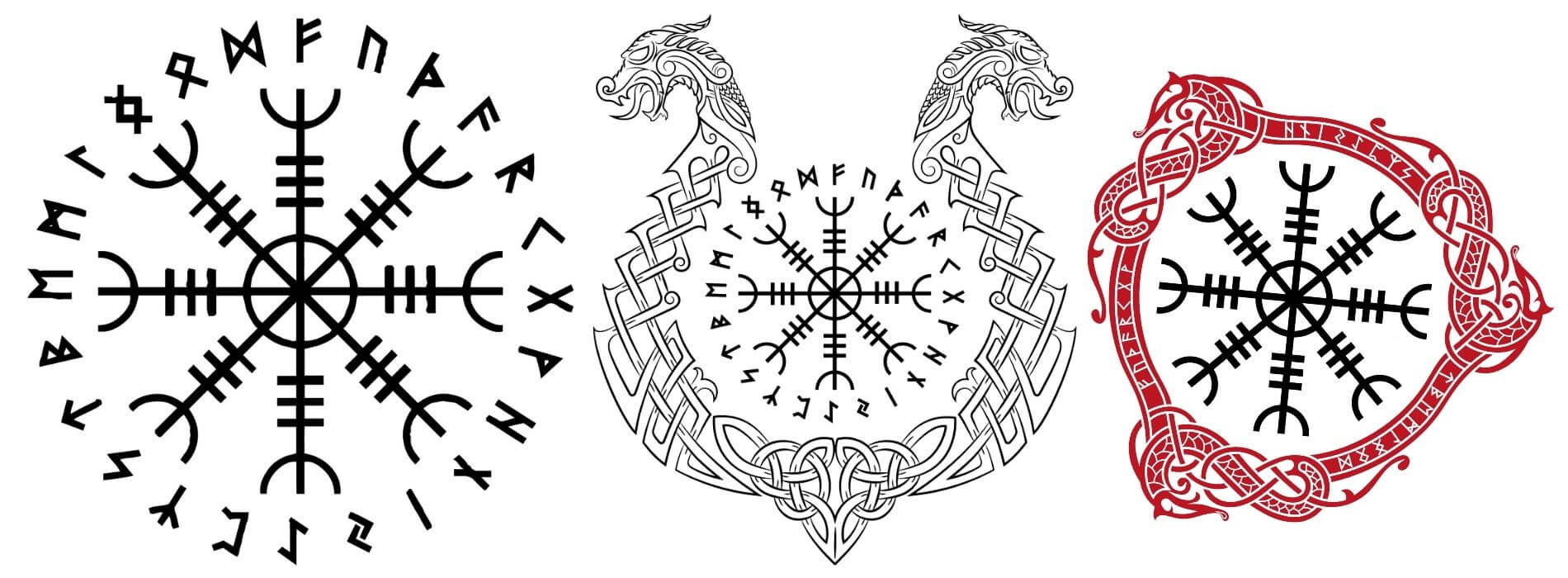
A Powerful Viking Symbol For Physical, Mental And Spiritual Protection! One of the most powerful Nordic symbols is still the Awe Balm today.
Deeply rooted in the heart of the Viking tradition and culture, this eight-armed circle, reminiscent of the Vegsivir, symbolizes strength and invincibility . Protector of warriors, the Helm of Awe still retains a somewhat mysterious dimension today, through its many representations!
Learn More About the Helm of Awe
6. Gungnir, Odin's Spear that never misses its target

Gungnir gets his name from the word "staggering" in old Icelandic. She is Odin's magic spear. This weapon, once launched, never missed its target and could not be stopped. Legend has it that during a visit of the god Loki to the dwarf people, he discovered the spear. Loki then bet his head with the dwarves that they could not make even more powerful weapons. The dwarves then forged three new weapons, among others, the mjolnir hammer with the handle was shortened because the god loki turned it into a fly to distract the dwarves during their work.
Learn More about the Spear Gungnir Here
7. Hugin & Munin, The Raven

Hugin and Munin are two ravens, brothers, who have been at the service of Odin the Father of All Things since time immemorial, before also serving his successors, acting as ears and eyes across the Nine Worlds for their sovereign. Every morning, Odin, or his successor, sends Hugin and Munin through the Nine Worlds of the Asgardian dimension to see them return at night, telling their master what they have seen and heard during the day. The pair of ravens served Odin for countless years and even centuries, remaining out of the lives of most Asgardians.
Learm more about Hugin & Munin
8. Yggdrasil, The World Tree or "Tree of Life"

In the middle of Asgard, where the gods and goddesses live, lies Yggdrasil . Yggdrasil is the tree of life , and it is an evergreen ash tree; the branches extend over the nine worlds of northern mythology, and reach upwards and above the sky. Yggdrasil is carried by three enormous roots, the first root of Yggdrasil is in Asgard, the house of the Gods is right next to the aptly named Urd, this is where the Gods and Goddesses have their daily meetings.
The second root of Yggdrasil goes down to Jotunheim, the land of giants, next to this root is the well of Mimir. The third Yggdrasil root goes down to Niflheim, near the Hvergelmir well. It is here that the dragon Nidhug chews one of the Yggdrasil roots. Nidhug is also known to suck the blood from corpses arriving in Hel. At the very top of Yggdrasil lives an eagle, the eagle and the Nidhug dragon are bitter enemies, they really despise each other. There is a squirrel named Ratatatosk, who spends most of the day running along the ash tree. Ratatatosk does everything he can to keep the hatred between the eagle and the dragon alive. Every time Nidhug says a curse or an insult about the eagle, Ratatatosk will run to the top of the tree and tell the eagle what Nidhug just said. The eagle is equally rude in his comments about Nidhug. Ratatatosk loves gossip, which is why the eagle and the dragon remain constant enemies.
You can click here for learn more about Yggdrasil
9. The Vikings runes - The Magical Futhark

Finally, to finish our presentation of Viking symbols , we cannot avoid the symbols present in Viking runes.

A people with deeply rooted esoteric traditions, the Vikings did not hesitate to question the Gods and oracles to prepare for their future, to know the outcome of battles, to protect their families and peoples. The rune games thus present many symbols, each of which has a particular meaning: joy, bravery, movement, communication, warrior , etc....
Here, you can Learn everythings about Futhark, viking alphabet, and norse Runes
10. Svefnthorn Symbol

Svefnthorn pronounced "SVEFN-thorn". This figure appears in several Scandinavian sagas as well as folk magic formulas that appeared long after the Viking era.
The Svefnthorn is translated as "thorn of sleep". It was used to put an opponent into a deep sleep from which he would find it difficult to wake up. Although the Svefnthorn has been mentioned several times in Norse mythology, this symbol has been drawn in two completely different ways and the exact symbolism is still unknown.
In The Saga of the Volsungs, Odin used a Svefnthorn to plunge the Valkyrie Brynhildr into a sleep from which she was unable to awaken until the hero Sigurd, brave enough, was able to cross the flames, which Odin had lit around her, to reach her.
The Saga of King Hrolf Kraki tells us that Queen Olof "stung" King Helgi with a Svefnthorn in order to knock him out. In the Saga of Gongu-Hrolf, Vilhjalmr drove a Svefnthorn into Hrolf's head during the night. He did not wake up until long afterwards when a horse pushed him and knocked the thorn out. In one of the earliest modern Icelandic books of spells, "The Ninth Spell in Huld's Manuscript", refers to the Svefnthorn and says :
"This sign would be carved on oak and placed under the head of the one who is supposed to sleep so that he cannot wake up before he is taken away. The symbol looks like a row of four harpoons. »
11. Fenrir, The Giant Wolf

In Norse mythology some wolves are feared while others prove to be faithful and useful companions. By making this creature mysterious, a bond of fascination is born between the beast and man allowing the animal to be both feared and respected. This is the whole peculiarity of the wolves in the Scandinavian mythological stories. Among them five occupy the Viking myths and beliefs
- There is Fenrir the giant destructive wolf, son of Loki.
- There are also Hati and Skoll , the devourers of the Asters.
- And finally Geri and Freki , the two Wolves of the god Odin.
12. Jormungandr, Norse Dragon/Snake

Jormungand or Iormungang was a monstrous sea serpent, child of Loki and the giantess Angrboda. He was also called "the Midgard Serpent" (Midgardsormr) or "the Mysterious Dragon of the North". Alfadr (Odin) had thrown him into the sea because a prophecy had announced that the children of Loki would decimate the Aesir. Since then he had grown and bitten his tail; he held the earth between his powerful rings and when he moved, he caused tidal waves. In fact, it was helping to hold the earth together. During the Ragnarök, Jormungand will cause a gigantic tidal wave by rising from the sea to go with the Giants to fight the Aesir and especially Thor. Thor will succeed in defeating him but he will not have taken nine steps before he collapses mortally affected by the poison instilled in his flesh by the serpent.
13. Viking Wild Boar, Gullinbursti

The Gullinbursti boar represents divine power and fertility.
14. Bear, Berserker Symbol

- The symbol of the Berserker, the Viking elite warriors.
- The bear, a domestic animal among the Vikings
The bear occupies a very important place in the Nordic culture because it represents strength, courage and rigor. Among the Vikings: there is the polar bear, nicknamed "ice bear" which was considered a noble gift, which a young warrior, Ingimund the Elder, did by offering a polar bear to a Viking king and thus made a fortune with him. The bear is also the symbol of the Berserker, the Viking elite warriors.
15. The web of Wyrd (Skuld's Net)

The Wyrd Web : it is the symbol of destiny in the form of runes. It is the Norns who have woven the destiny of all beings who have made it.
16. Longship & Drakkar

The Vikings were inseparable from their ships, which were the most beautiful tool of their expansion, source of wealth and glory. The Drakkar was a compromise between sailing boats and rowing boats. The Vikings mastered the art of navigation perfectly and the Drakkar was their absolute weapon. The Vikings did not say: "I'm leaving on my boat" but: "I'm leaving on my dragon". The figurehead had a magical role. The Vikings believed in the genies of the place, supernatural creatures reigning over a territory, a river, a shore. Their dragons had the function of frightening the spirits and impressing the local population. The appearance of a dragon's head on Drakkars, associated with the story of the survivors, made a strong impression on the populations attacked by the Vikings who were the first to practice psychological warfare.
17. Viking Axe

The Viking axe is a symbol of Viking strength and bravery : Viking warriors used it on the battlefield. They had a single edge and the bottom of the blade is shaped like a hook, making it easier to hold.
18. Triquetra, The Celtic Knot

The triquetra is a Celtic symbol whose design is very particular. Composed of three intersecting triangles, the meanings we can give to this lucky charm are as numerous as the people who used it. Some see in the Celtic triquetra a Christian representation of the Holy Trinity, others associate it with the eternal cycle of life-death-rebirth. There are even those who claim to be neo-paganists who, like the ancient Celts, see the entire universe in it. In fact, many cultures and religions have regarded the number three as holy or divine for thousands of years. For example, you should know that a symbol of three interlocking circles similar to the Celtic triquetra was found on religious statues in India... over 5,000 years ago. Today, many who identify with the ancient Celts may use this lucky symbol to show their attachment to that culture.
19. Sleipnir, 8-Legged Horse of Odin

Sleipnir, "he who glides," is the steed of the god Óđinn, the supreme Ase. His coat is gray; eight legs support him. Runes are engraved on his teeth. No other horse is faster than him. He can ride through the air and over the seas.
Save this article in your Bookmarks, don't hesitate to ask us your questions in comments!

Related Blog Posts
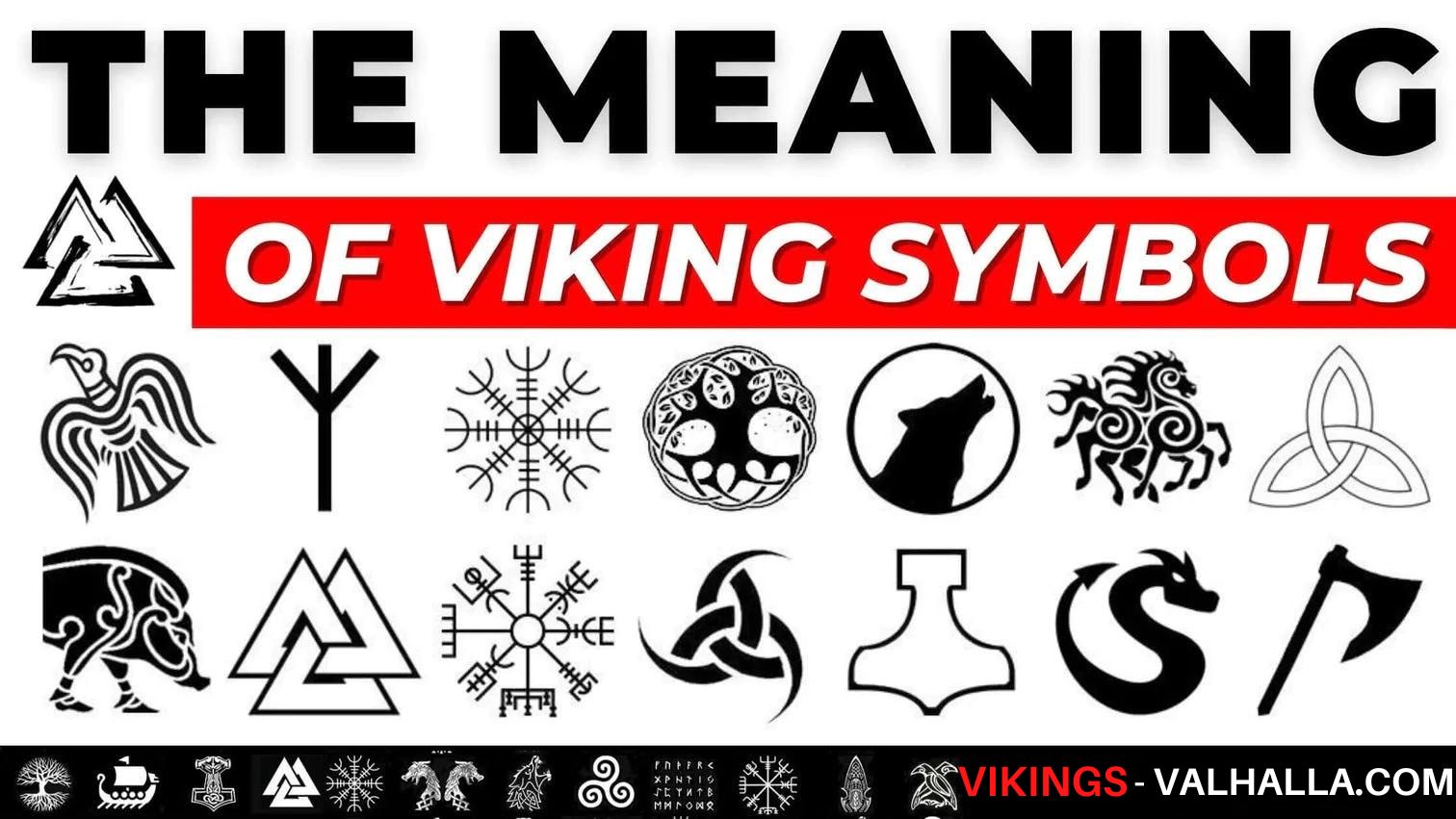
Norse Volva
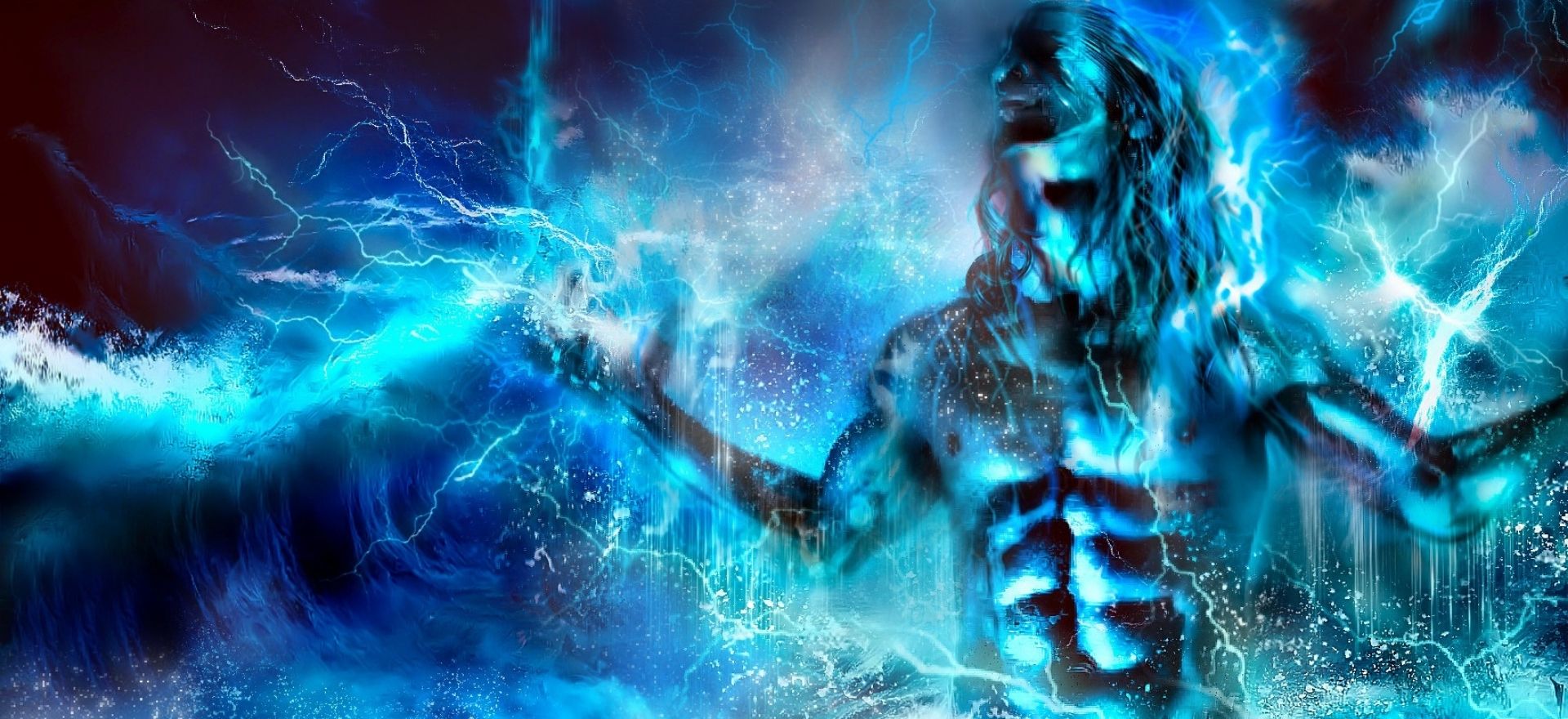
Aegir | Norse Mythology
Featured collection, viking beard bead with valknut symbol, viking beard bead with triskelion symbol design, viking beard bead - mjolnir with runic symbol, viking beard bead with jormungandr design, viking beard bead - spiral design with rune symbols - 10 pcs, viking beard bead with aegishjalmur symbol, viking beard bead with black sun symbol, viking beard bead with knotted engravings, viking skull beard beads, celtic viking beard bead.
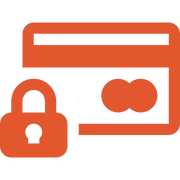
100% Safe & Secure Checkout

Satisfied Or Refund
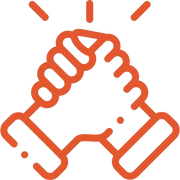
World Wide Tracking Order

Free Shipping World Wide
- Choosing a selection results in a full page refresh.
- Opens in a new window.

- Vili and Ve
- Fjorgynn and Fjorgyn
- Aegir and Ran
- Skoll and Hati
- Land Spirits
- Ask and Embla
- Huginn and Muninn
- Geri and Freki
- Berserkers and Other Shamanic Warriors
- The Einherjar
- Jörmungandr (Midgard Serpent or World Serpent)
- Tanngrisnir and Tanngnjóstr
- Gullinbursti
- Mjölnir (Thor’s Hammer)
- Aegishjalmur (Helm of Awe)
- Gjallarhorn
- Gungnir (Odin’s Spear)
- Skidbladnir
- Brísingamen Necklace
- Horn Triskelion (The Horns of Odin)
- Nidavellir (Svartalfheim)
- Hel (The Underworld)
- Yggdrasil (World Tree)
- Ginnungagap
- Járngreipr (Járnglófar)
- Viking Runes Meanings
- Viking Symbols And Their Meaning
- Viking Tattoos
- Viking Food and Drinks
- Viking Clothing and Jewelry
- Viking Raids and Warfare
- Viking Weapons and Armor
- Viking Trade and Commerce
- Viking Ships
- Viking Politics
- Viking Heritage
- Write for Us
- Search for:
No products in the cart.
Return to shop
Blog , Norse Runes , Norse Symbols
Bindrunes and beyond: viking symbols for protection.
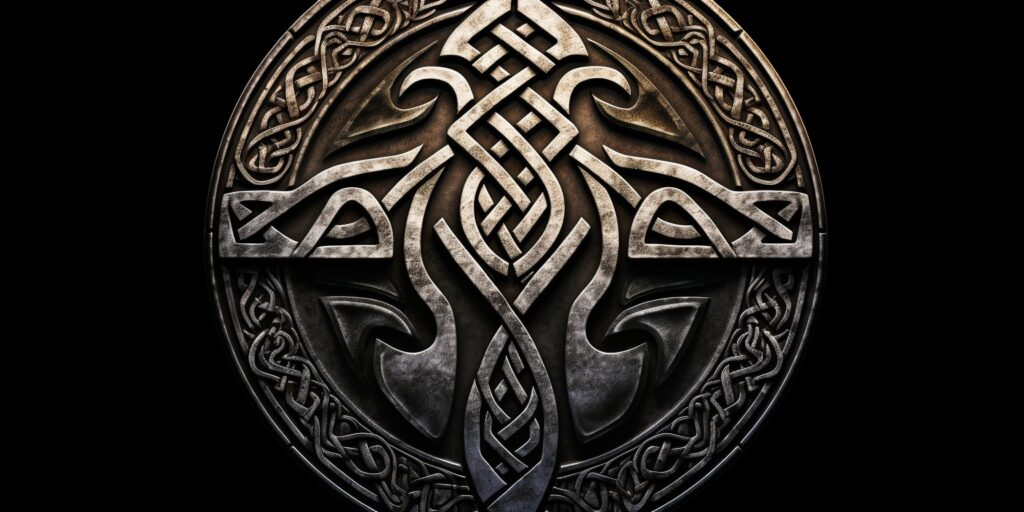
The Viking culture is characterized by its symbols, many of which were believed to possess magical properties. Among these symbols were those associated with protection and safety. In this article, we explore the ancient bindrunes and other Viking symbols that were used for personal defense.
Key Takeaways:
- Viking symbols were not just decorative but also believed to possess magical properties for protection .
- The history and origins of bindrunes , which are composite symbols formed by combining two or more runic letters, will be discussed.
- Specific Viking symbols that were believed to provide personal safety and defense will be explored.
- Understanding the role of runes in Viking culture and their importance in protection .
- Exploring how ancient Viking symbols and bindrunes can be applied in modern times for personal protection and added peace of mind.
The Power of Viking Symbols
Viking symbols are not merely decorative, but they were also believed to possess magical properties, especially when it comes to protection. In Norse mythology and culture, these symbols played an essential role in warding off harm.
One of the most popular Viking symbols associated with protection is the Helm of Awe. The symbol is made up of eight rune staves, arranged in a circular pattern, and is believed to offer courage and protection to the wearer.
Another symbol is the Valknut, which is made up of three interlocking triangles. This symbol was believed to represent the god Odin and was often associated with death and the afterlife. However, it was also thought to provide protection against evil forces.
Other Viking protection symbols include the Aegishjalmur, also known as the Helm of Terror, which was believed to invoke fear in enemies and protect the wearer. The Ginfaxi was another symbol frequently used for protection as it was believed to boost courage and provide a sense of security to the wearer.
Viking symbols represent more than just protection; they also embody the complex belief system of the Vikings. The symbols were viewed as a source of power and strength, and their magical properties were believed to come from the gods and goddesses .
The Vikings believed that the act of drawing symbols imbued them with power, and that power could be used to invoke the favor of the gods or ward off negative energy.
Viking symbols were also used as a form of communication. The symbols conveyed messages about a person’s beliefs, status, and identity and could serve as a talisman for the wearer.
Overall, Viking symbols are a powerful and meaningful aspect of Norse mythology and culture. They serve as a reminder of the beliefs and practices of the Vikings and the importance of protection in their lives.
The Origins of Bindrunes
Viking symbols have long been associated with magic and protection, and bindrunes are no exception. These ancient symbols were created by combining two or more runic letters, each with its own meaning and significance.
The origins of bindrunes can be traced back to the 2nd century, with the use of runes in writing and divination. However, it wasn’t until the Viking Age that bindrunes began to be used for protection and other magical purposes.
One of the most common uses for bindrunes was to create a personal symbol of protection for an individual. By combining the runic letters that represented their initials, along with other letters that had protective qualities, a unique and powerful symbol was created.
Bindrunes were also used for specific purposes, such as protection during battle or childbirth. The specific combination of runes used would vary depending on the individual’s needs and beliefs.
Overall, bindrunes were seen as a way to harness the power of the runes for personal protection and defense. Their intricate construction and mysterious symbolism continue to fascinate modern scholars and enthusiasts alike.
Viking Symbols for Personal Safety
Viking symbols were not just decorative; they were believed to possess magical properties that offered protection to their bearers. Here are some of the most popular symbols used for personal safety :
These symbols were often inscribed on jewelry, weapons, and everyday objects and carried by the Vikings for protection during their travels and battles.
Other Viking Symbols for Personal Safety
In addition to the symbols listed above, there were several other Viking symbols that offered personal safety , including:
- Inguz : This symbol represented fertility, and it was used to provide protection during childbirth.
- Jera : This symbol represented harvest and abundance, and it was believed to bring good fortune and security.
- Elhaz : This symbol represented protection and defense, and it was believed to provide the bearer with physical and spiritual safety.
These symbols continue to be popular today and are often worn as talismans or incorporated into modern jewelry designs for added protection and personal safety.
Defense against Evil: Viking Protection Symbols
Viking protection symbols were not only used for personal safety but also for defense against evil forces and negative energy. These symbols were believed to possess magical properties that could ward off harm and protect the wearer or their home.
Among the most popular Viking protection symbols were the Helm of Awe (Ægishjálmr) and the Valknut. The Helm of Awe was believed to provide invincibility in battle and courage in the face of adversity. The Valknut, on the other hand, was associated with the god Odin and symbolized his power over life and death.
Other notable Viking protection symbols include the Gungnir, which was the spear of the god Odin and was believed to provide strength and invincibility in battle. The Troll Cross was also widely used as a protective charm against trolls, witches, and other malevolent entities.
Finally, the Thor’s Hammer (Mjölnir) was associated with the god Thor and was believed to provide protection against evil and misfortune. It was also commonly used as a symbol of strength and courage.
Viking protection symbols are still relevant and embraced today, particularly by those who seek to incorporate ancient wisdom and traditions into their modern lives. These symbols can be used in various ways, from wearing them as jewelry to incorporating them into daily rituals such as meditation and prayer.
By embracing Viking protection symbols, individuals can tap into the power and symbolism of these ancient symbols and enhance their sense of safety and peace of mind.
The Role of Runes in Protection
Runes are a central element in Viking culture, and they were believed to have powerful properties for protection. The runic alphabet consists of 24 letters, each with its own meaning and symbol. These symbols were often carved into weapons, amulets, and other objects to provide personal safety and defense.
One of the most significant runic symbols for protection is Algiz, which resembles the shape of a human with outstretched arms. Algiz was believed to offer defense against evil forces and negative energy, and it was often used in combination with other runes to create bindrunes.
Runic symbols were also used for divination, as they were believed to provide insight into the future and offer guidance for protection. For example, the runic symbol for Thurisaz was thought to provide protection against the destructive forces of nature, while the runic symbol for Othila was believed to offer defense against unwanted intruders.
The use of runes for protection was a deeply ingrained aspect of Viking culture, and their power and significance continues to be felt to this day. Incorporating runic symbols into daily life and rituals can provide a sense of personal safety and defense.
Runes have played a significant role in Viking culture and were viewed as powerful tools for divination. They were often used for protection, with certain runic symbols believed to provide personal safety.
The use of runes for protection dates back centuries and was rooted in the belief that the symbols had magical properties. In Norse mythology, it was believed that the god Odin discovered the runes after hanging from the world tree for nine days and nights. He then passed the knowledge of the runes down to humans, who used them for various purposes including protection.
Specific runic symbols were believed to provide personal safety and defense. For example, the rune Algiz (ᛉ) was associated with protection and was often used in bindrunes for this purpose.
Unraveling the Mysteries of Bindrunes
Bindrunes are composite symbols formed by combining two or more runic letters. They were often associated with protection and were believed to possess magical properties to ward off harm.
The construction of bindrunes was a complex process, with each symbol representing a specific meaning and intention. The process involved selecting the appropriate runic symbols and combining them in a way that created a new, more powerful symbol.
“Bindrunes were believed to possess magical properties to ward off harm.”
Bindrunes were extensively used by the Vikings to provide personal safety and defense. They were often inscribed on weapons, amulets, and jewelry, as well as painted on shields and boats. The use of bindrunes for protection was also common in traditional Icelandic magic.
The symbolic representation of bindrunes in relation to protection is still shrouded in mystery. However, their effectiveness has been demonstrated in historical instances, making them a unique and intriguing aspect of Viking mythology and culture.
Ancient Secrets for Modern Defense
While Viking symbols and bindrunes were created centuries ago, their power and significance still resonate today. Incorporating these ancient symbols into modern life can provide added security and peace of mind. Here are some ways in which these symbols can be utilized for personal protection:
Gaining Inspiration from Bindrunes
One way to use bindrunes for modern defense is by creating personalized symbols that represent personal safety and defense. By combining different runic letters, individuals can construct a unique bindrune that holds significance to them and embodies their desired protective qualities.
For example, someone looking to ward off negative energy and protect their mental health may create a bindrune using the letters for Algiz and Wunjo. These letters signify protection and joy, respectively, and combined in a bindrune provide a powerful symbol for personal safety and well-being.
Using Runic Inscriptions
Runic inscriptions were often used by the Vikings to mark objects with protective symbols or spell out protective messages. The use of these inscriptions can be applied in modern times as well, with individuals writing protective messages on personal belongings or using protective symbols in art or jewelry.
There are also runic talismans that can be worn or carried for added protection. The Vegvisir, or “wayfinder,” is one such talisman that was believed to guide the wearer through storms and rough seas. By carrying these symbols with them, individuals can feel a sense of added protection and security.
Harnessing the Power of Runes
Runes were seen as powerful tools for divination and protection. Certain runic symbols were believed to have protective properties and could be used in various ways to defend against harm.
For example, the rune Fehu represents wealth and abundance but can also be used for personal protection. When carved onto a piece of wood or stone and placed in a home or on a person, Fehu can ward off negative energy and bring a sense of safety and security.
Embracing Viking Symbolism
Viking symbolism and protection symbols continue to be embraced by individuals seeking added safety and defense. From tattoos to clothing and accessories, these symbols are still relevant today and can provide a source of inspiration and protection.
By incorporating these ancient symbols into modern life, individuals can tap into a rich history of protective magic and feel empowered to face life’s challenges with added security and strength.
Exploring Viking Symbolism Today
Viking symbols have endured through the ages and continue to be embraced and utilized today for protection and personal safety. These symbols are not just decorative; they hold deep and ancient meanings that resonate with individuals seeking a sense of security in an unpredictable world.
The power of Viking symbolism lies in its ability to evoke a connection to the past while providing a sense of comfort and protection in the present. Whether through jewelry, tattoos, or other forms of adornment, Viking symbols continue to be integrated into modern culture as a way to connect with the rich history of the Norse people.
Many individuals today use Viking symbols as a reminder of their inner strength and resilience, drawing inspiration from the tales of Norse mythology and the legendary heroes of the Viking Age. These symbols serve as a talisman, a physical reminder of their own personal power and ability to navigate the challenges of life.
Furthermore, the symbolism of the Viking symbols has become widely recognized and associated with protection. The interlacing of the bindrunes and their meanings have been studied and incorporated into amulets and talismans, providing wearers with a sense of safety and security.
Incorporating Viking symbols and their meanings into daily life can also serve as a reminder to be mindful and to approach life with intentionality. By tapping into the wisdom of the past, individuals can learn to navigate the present with clarity and purpose.
Overall, the continued relevance and popularity of Viking symbols for protection and personal safety demonstrate the lasting impact of Norse culture on the world. By exploring these symbols and their meanings, individuals can tap into the power of the past to create a brighter and more secure future.
Throughout history, Viking symbols have been revered for their aesthetic beauty and spiritual significance. But beyond their decorative appeal, these symbols were also believed to have magical properties, particularly when it comes to protection.
From bindrunes to runic symbols, the Vikings had a variety of tools at their disposal when it came to personal safety and defense. These symbols were not only used to ward off physical harm but also to protect against negative energy and evil forces.
Today, we can still learn from the ancient Viking symbolism and apply it to our modern lives. By incorporating these symbols into our daily routines, we can enhance our sense of security and peace of mind.
Embracing the Power of Viking Symbols
Whether you’re looking for protection from physical harm or negative energy, Viking symbols offer a way to connect with ancient wisdom and spiritual power. By embracing the symbolism of the Vikings, you can tap into a rich heritage and find comfort in knowing that you are protected by the power of the Norse gods.
Using Viking Symbols in Your Life
There are many ways to incorporate Viking symbols into your daily life. You could wear them as jewelry or tattoo them onto your body, or you could integrate them into your meditation or ritual practices. By doing so, you can create a deeper connection with the symbols and enhance their protective properties.
Remember, Viking symbols are not just decorative – they are powerful tools for personal safety and defense. By embracing these symbols and using them in your life, you can tap into a rich spiritual tradition and enhance your sense of security in the modern world.
Q: What are Viking symbols for protection?
A: Viking symbols for protection were ancient symbols used by the Vikings to ward off harm and provide personal safety. These symbols were believed to possess magical properties and were often associated with Norse mythology and culture.
Q: What is the significance of Viking symbols?
A: Viking symbols hold great significance in Norse mythology and culture . They were not just decorative, but were believed to possess magical powers. These symbols were thought to offer protection, guidance, and strength to those who wore or used them.
Q: What are bindrunes?
A: Bindrunes are composite symbols created by combining two or more runic letters. They were commonly used by the Vikings and were often associated with protection. These symbols were believed to bring personal safety and defense.
Q: Which Viking symbols provide personal safety?
A: There are several Viking symbols that were believed to provide personal safety. These include the Helm of Awe (Aegishjalmur), the Valknut, and the Vegvisir. Each symbol carries its own meaning and interpretation, but all were associated with protection.
Q: What Viking symbols were used for defense against evil?
A: Viking symbols like the Troll Cross, the Raven, and the Gungnir were used specifically for defense against evil forces and negative energy. These symbols were believed to have the power to ward off harm and protect against malevolent entities.
Q: How were runes used for protection?
A: Runes were seen as powerful tools for divination and protection in Viking culture. Specific runic symbols were used to enhance personal safety and defense. These symbols were believed to channel the energy and power associated with each runic letter.
Q: How can I incorporate Viking symbols into my life for protection?
A: There are various ways to incorporate Viking symbols into your life for added protection. You can wear jewelry with these symbols, inscribe them on personal items, or even create your own bindrunes. Using these symbols in rituals or meditation can also enhance their protective qualities.
Q: Are Viking symbols still relevant today?
A: Yes, Viking symbols and their protective qualities are still embraced by many today. These symbols have transcended time and continue to resonate with individuals seeking personal safety and defense. They can be seen as a connection to our ancient past and a source of strength and guidance.
Username or email address *
Password *
Remember me Log in
Lost your password?

IMAGES
COMMENTS
Vegvisir, The Viking Compass/The Runic Compass, The Viking Symbol of Guidance. The Triple Horn of Odin - The Horn Triskelion. Mjölnir, The Hammer of Thor, The Viking Symbol of Strength And Protection. The Swastika. Svefnthorn. Huginn and Muninn - The Twin Ravens of Odin As Viking Symbols.
1. Thor's Hammer (Mjölnir) Hammer of Thor - Mjölnir. Thor's Hammer, also known as Mjölnir, is one of the most famous Viking symbols. It represents the power of thunder and lightning, associated with Thor, the god of thunder in Norse mythology. The Hammer was believed to bring protection and good fortune to its wearer or owner.
There were many powerful symbols from the Norse-Viking period ranging from the wolf (for protection), to the horse (protection in travel), the troll cross (an amulet that protected one from trolls), the image of the Vegvisir ('way guide', a late Icelandic symbol which helped one find one's way) and the Web of Wyrd (web of fate), as well as the runes which were thought to evoke mystical powers.
Joy, happiness, harmony. Each symbol holds a significant place in Norse mythology and Viking culture. In ancient times, the Rune Wheel was used for divination, with each symbol providing insight into different aspects of life and the future. The arrangement of the symbols on the Rune Wheel also holds deeper meaning.
There is no archeological or documented proof from the Viking Age that would support a connection between the Vegvísir and the Old Norse Scandinavians. The first documented proof of the symbol's existence was at the very earliest created in the 16th century by Icelandic dark arts mystics, and more reliably as late as 1860 in the Huld manuscript.
Norse Vegvisir, also known as the Viking Compass, is an ancient symbol of Norse mythology used to guide people in difficult weather conditions. Its history and origins can be traced back to the 1860s in the Huld Manuscript. This symbol, consisting of eight runic branches, was believed to help individuals find their way back home safely.
Raidho: The rune of travel, rhythm and spontaneity; Sowilo: The rune of the sun, ... What is the most famous Viking symbol? Thor's hammer, known as Mjölnir, is the most famous Viking symbol. It was used by the Norse God Thor to protect Asgard, the home of the gods, from their enemies. The hammer was said to be able to deliver lightning and ...
The Vegvisir (pronounced VEGG-vee-seer) is an ancient Norse symbol that is believed to provide safety for those who are embarking on a long voyage. The Vegvisir is believed to have originated in Iceland. It's a common misconception that Viking ships bore the Vegvisir; historical evidence for this is scarce. The earliest known references to ...
The Vegvisir is a mystical symbol that is associated with Viking culture. It is also known as the Viking compass and is a symbol of guidance and protection. The Vegvisir's design features runic symbols and unique interlocking rings. It was used as a navigational aid by Viking seafarers. The Vegvisir has had a cultural impact on contemporary ...
The Triceps is included in Rudolph Kuch's "The Book of Signs", and is described as "an old Nordic sign" and "a symbol of heavenly power". Famously used by the Japanese car manufacturer Mitsubishi Motors. It has not been found to have any connection to Vikings or the Norse world. Sunwheel / The Cross of Wotan.
The Vegvisir, known as the Viking, Runic, or Nordic compass, is a complex symbol made up of eight runic "staves.". There are a number of different variations of the design scattered throughout popular culture, but in each one, the symbol features eight crossing lines, with images at the end of each stave. Some people believe the symbol was ...
Neo-pagan groups (like Norse pagans) also claim the Vegvisir as a popular symbol, while others attach a magical mysticism to it. So how old is the Vegvisir? If you believe that the Vegvisir is indeed a true ancient Norse symbol and that it dates from the Viking era (around 800-1066), that would make it between 1400 and 1200 years old.
Literally "way" (vegr) "shower" (vísir), the symbol is meant to prevent the person carrying it from losing their way, and is known colloquially as "The Viking Compass" or "The Nordic Compass". It can often be seen on viking-inspired tattoos, jewellery and illustrations, and even in video games, such as Valheim.
Simply put, Yggdrasil symbolized the universe for the Nordic people. It's one of the most important symbols of Norse mythology. Fenrir. Týr and Fenrir (1911) by John Bauer. Public Domain, ... It was mostly used at sea by Viking raiders and traders who often had to travel through the stormy waters of the Nordic Seas and the North Atlantic.
Viking Symbols Last updated on 1/30/2023: A quick note about Viking SymbolsIt is helpful to understand the true origin and background of each symbol. Some of these iconic images were primarily used before or not until well after the Viking age. ... The gods use Skíðblaðnir to travel together over sea, over land, and even through the air.
This symbol is not only one of the most prominent symbols in Norse mythology but also one of the most important symbols of the Norse faith. If belief the North mythology, Yggdrasil or the Tree of Life or World Tree is the Great Tree connecting nine words: Midgard, Asgard, Muspelheim, Vanaheim, Jotunheim, Alfheim, Svartalfheim, Niflheim, Helheim.It is the main symbol representing the ...
Ouroboros. The Nordic mythology, was largely impacted by the snakes. One of the symbols reflecting this is that of the Ouroboros, which meant a continuous return to time. As the symbol can easily reveal, we notice a snake forming a circle that continuously bites its tail without the cycle ending.
Viking Axe. Triquetra, The Celtic Knot. Sleipnir, 8-Legged Horse of Odin. 1. Valknut, The Viking symbol of Odin. We start our overview of Viking symbols with the Valknut! Representing 3 intertwined triangles, associated with the God Odin, Valknut is a symbol of fallen knots, or even of warriors killed in combat.
Viking Compass Necklace, Mens or Women Sterling Silver Pendant Jewelry, Wanderlust, Travel Gift, Vegvisir Amulet. (12.2k) $39.56. $52.75 (25% off) FREE shipping. Handmade Wooden Keyring *Two Runic Symbols for: Travel & Protection* (One on each side of the Keyring. Made in Cherry. Holds lots of Keys.
Viking exploration and travel were not possible without their inherent knowledge of navigation and the tools they used. ... The Norse Compass was more than just a tool for navigation—it was a symbol of Viking ingenuity and maritime supremacy. The Vikings were master navigators, and their legacy lives on through their groundbreaking ...
Yggdrasil. Yggdrasil is the Norse tree of life and is associated with balance, harmony, and growth. This symbol can be utilized in love and relationship rituals to promote stability, growth, and a deep sense of connection. It is also believed to offer protection and guide those seeking true love.
Recently, a smaller company called Viking Therapeutics made waves in the weight loss scene following a successful phase 2 trial for its obesity candidate VK273. Given Viking is still in ...
Among the most popular Viking protection symbols were the Helm of Awe (Ægishjálmr) and the Valknut. The Helm of Awe was believed to provide invincibility in battle and courage in the face of adversity. The Valknut, on the other hand, was associated with the god Odin and symbolized his power over life and death.